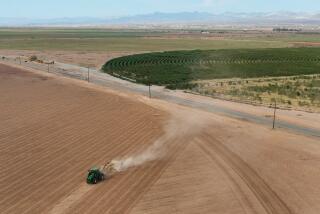Parched California expected to miss out on typical fall rains
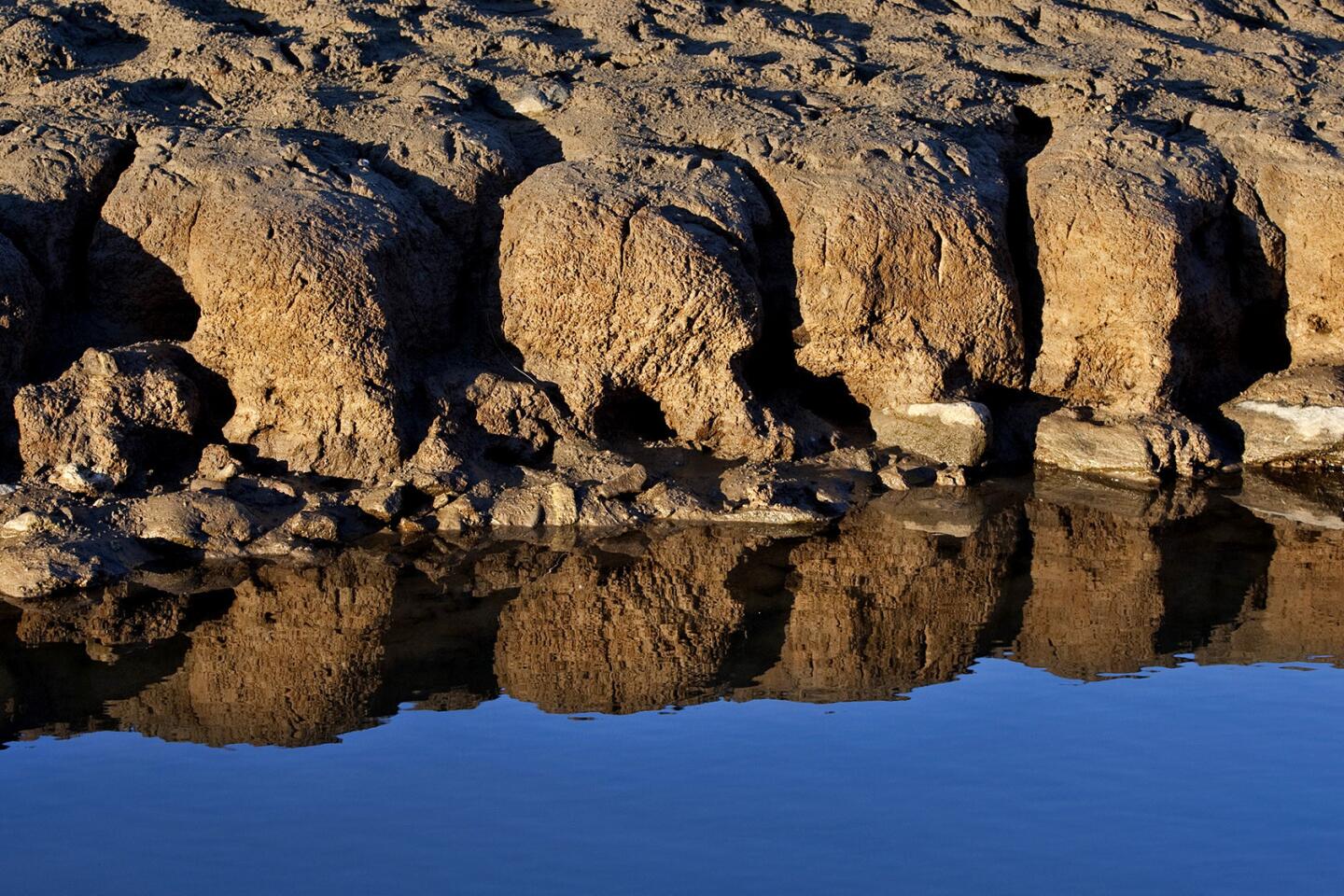
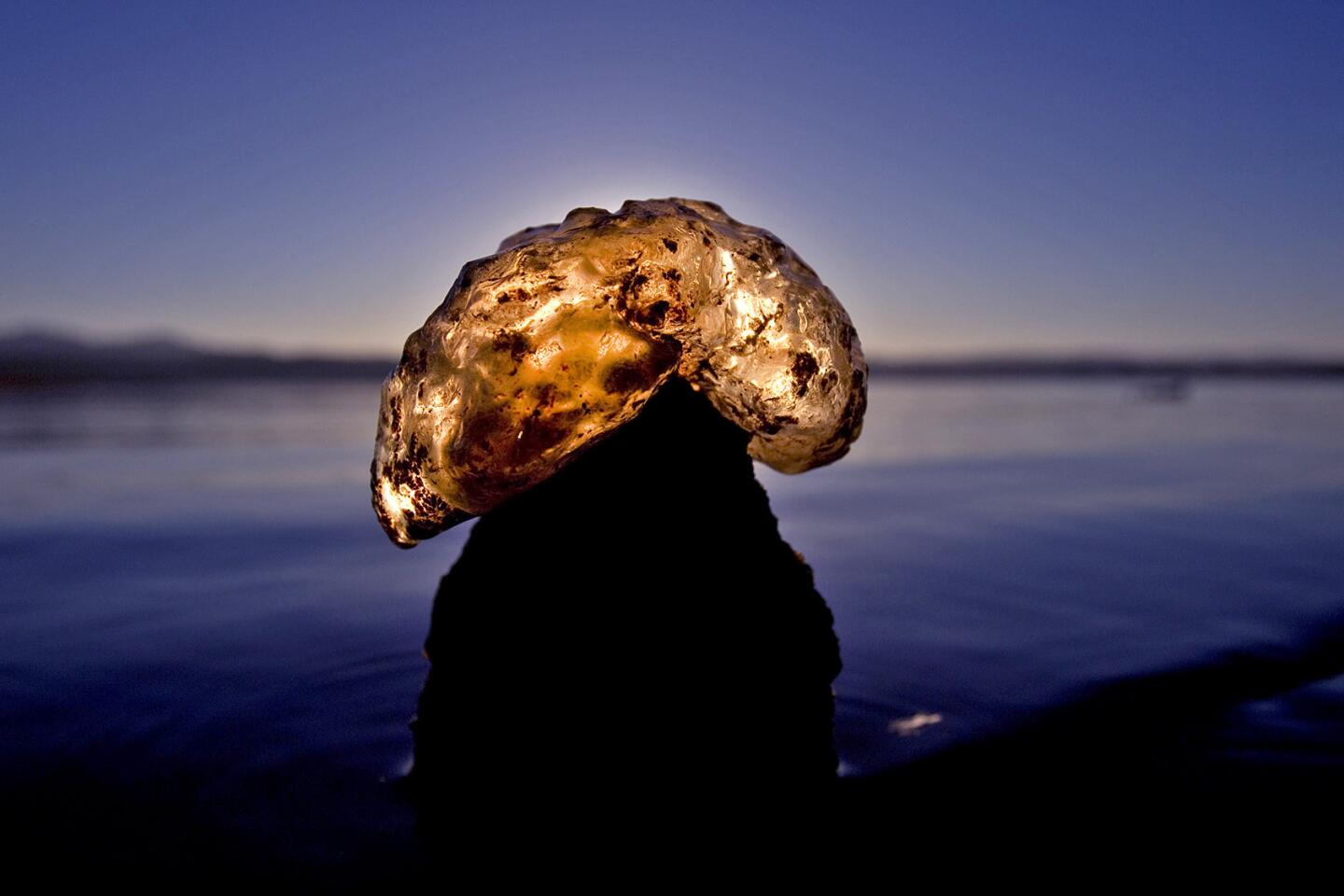
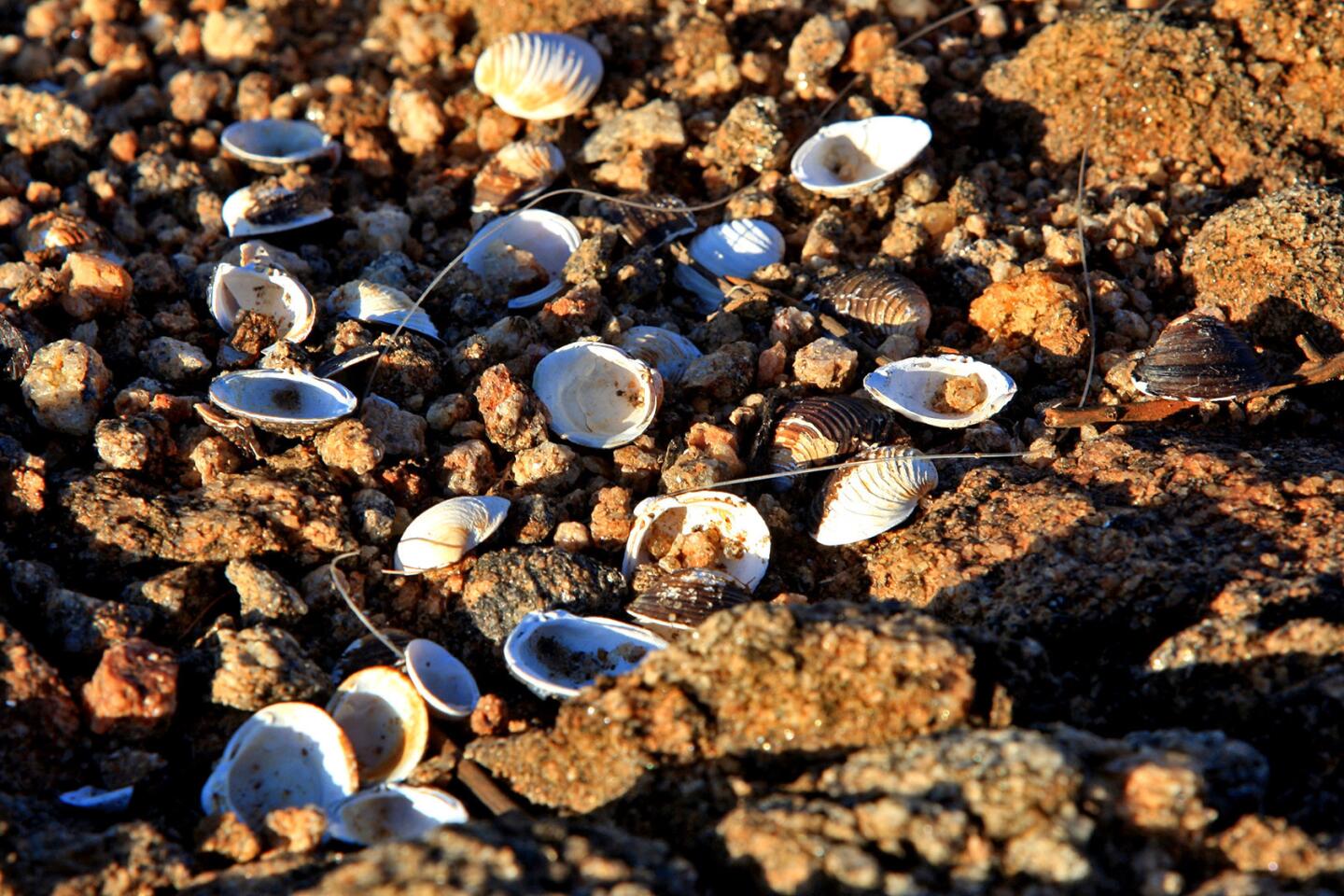
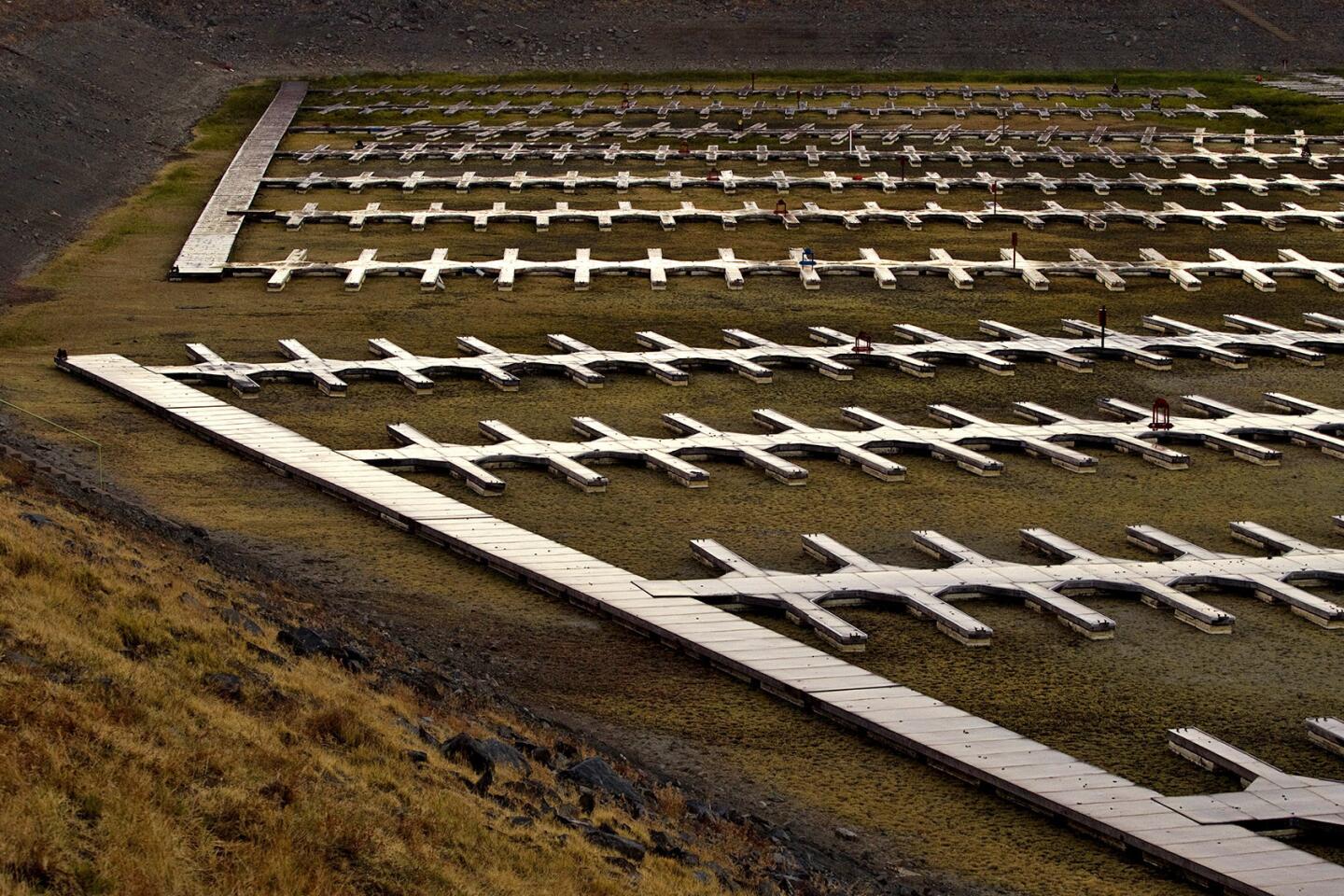
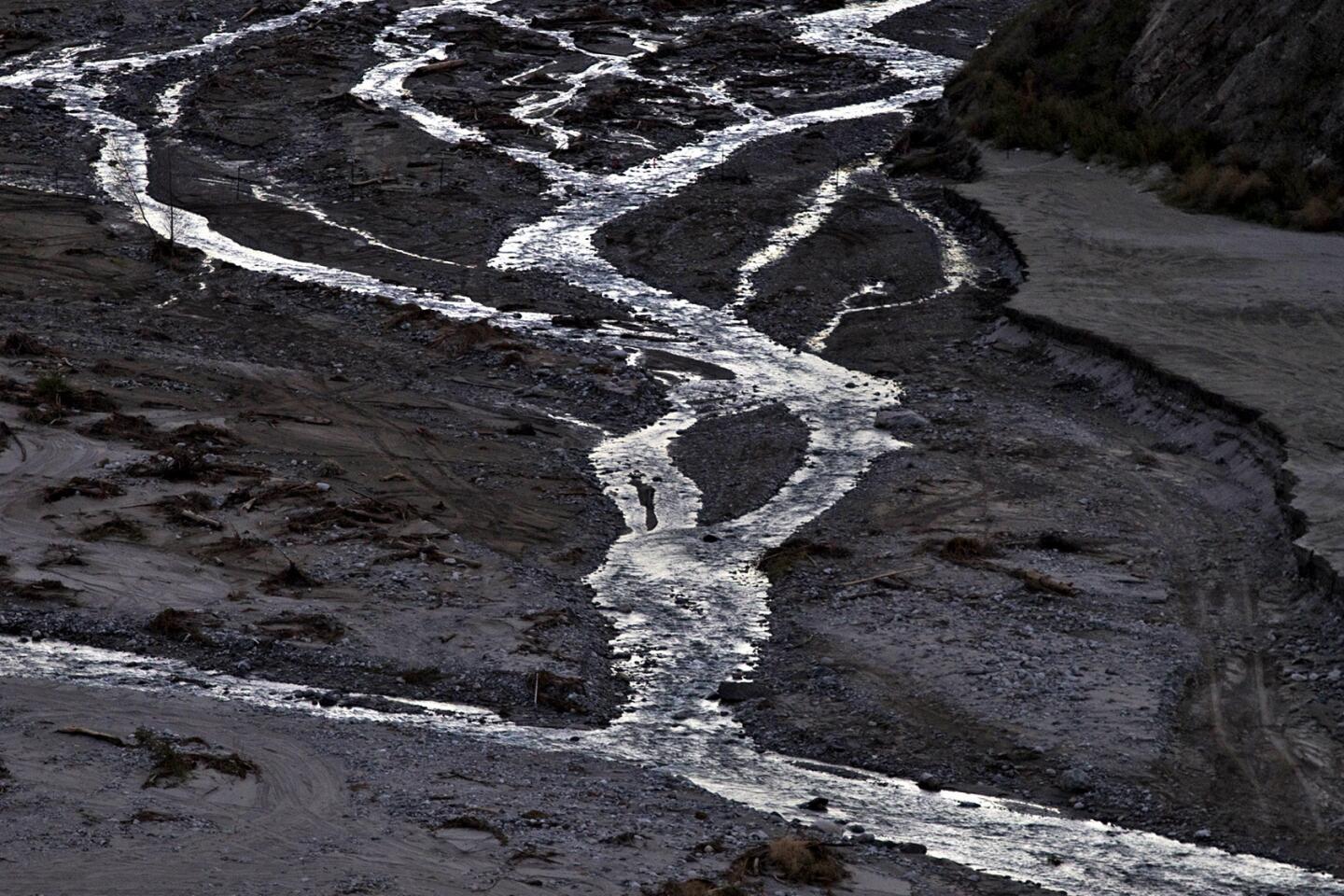
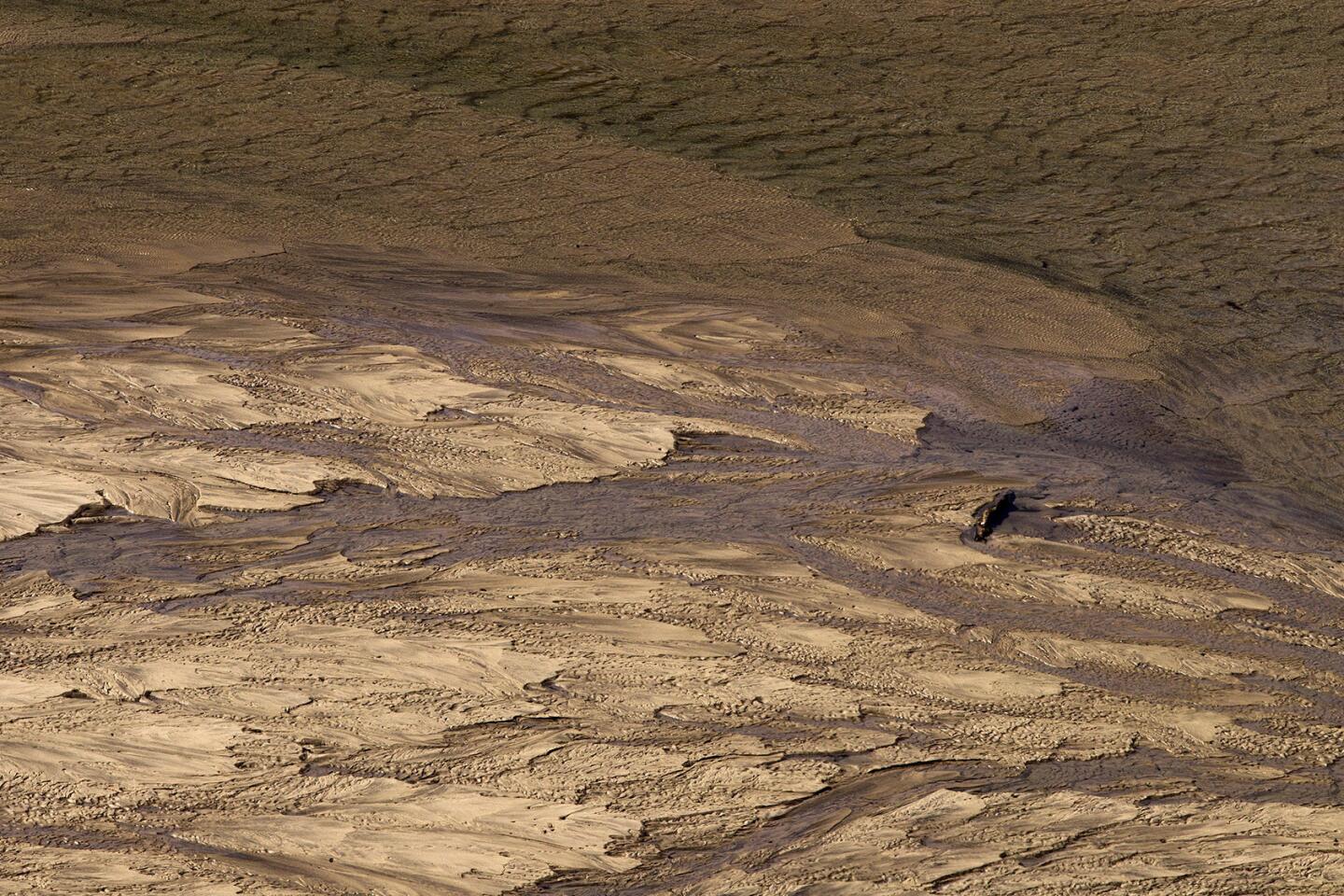
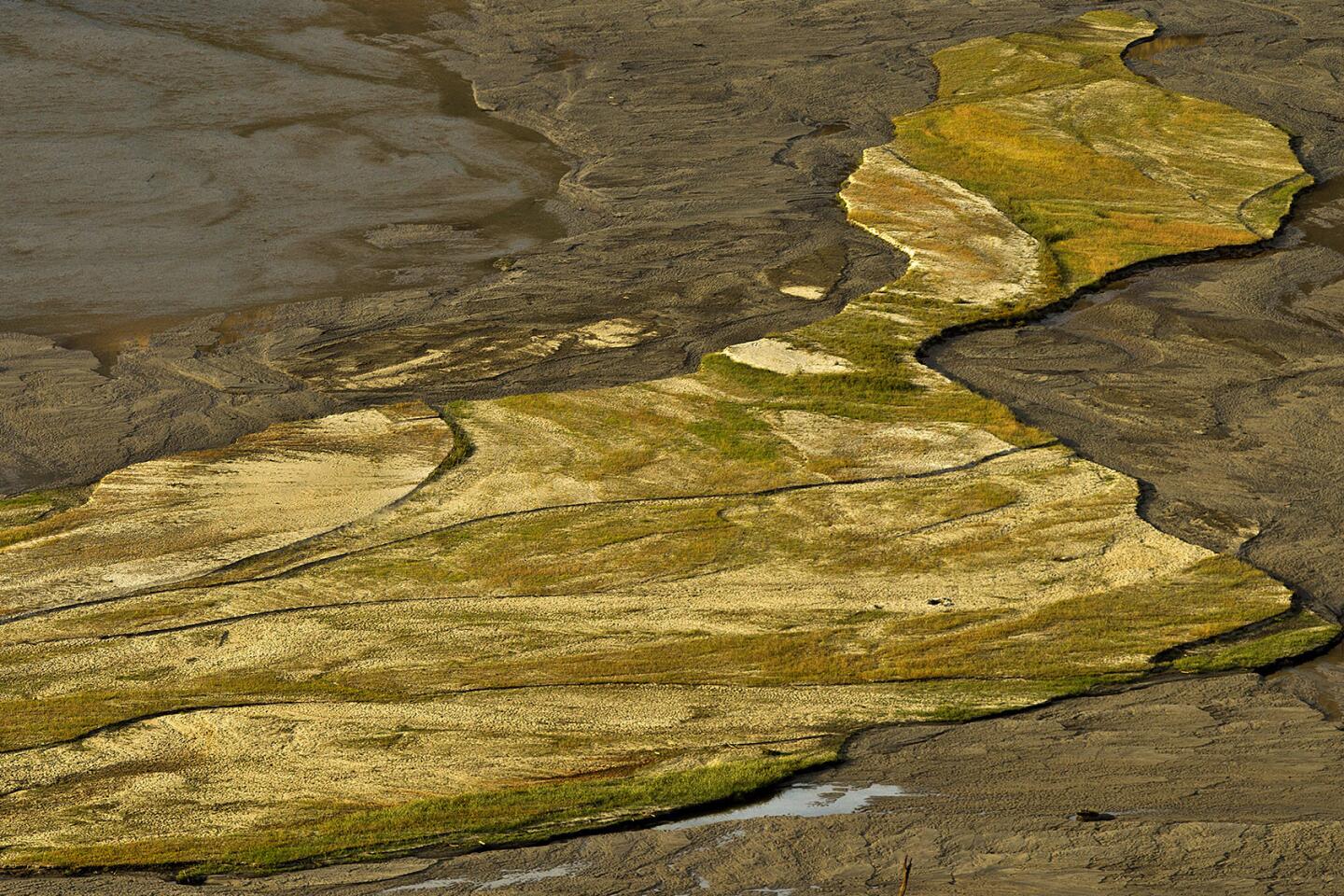
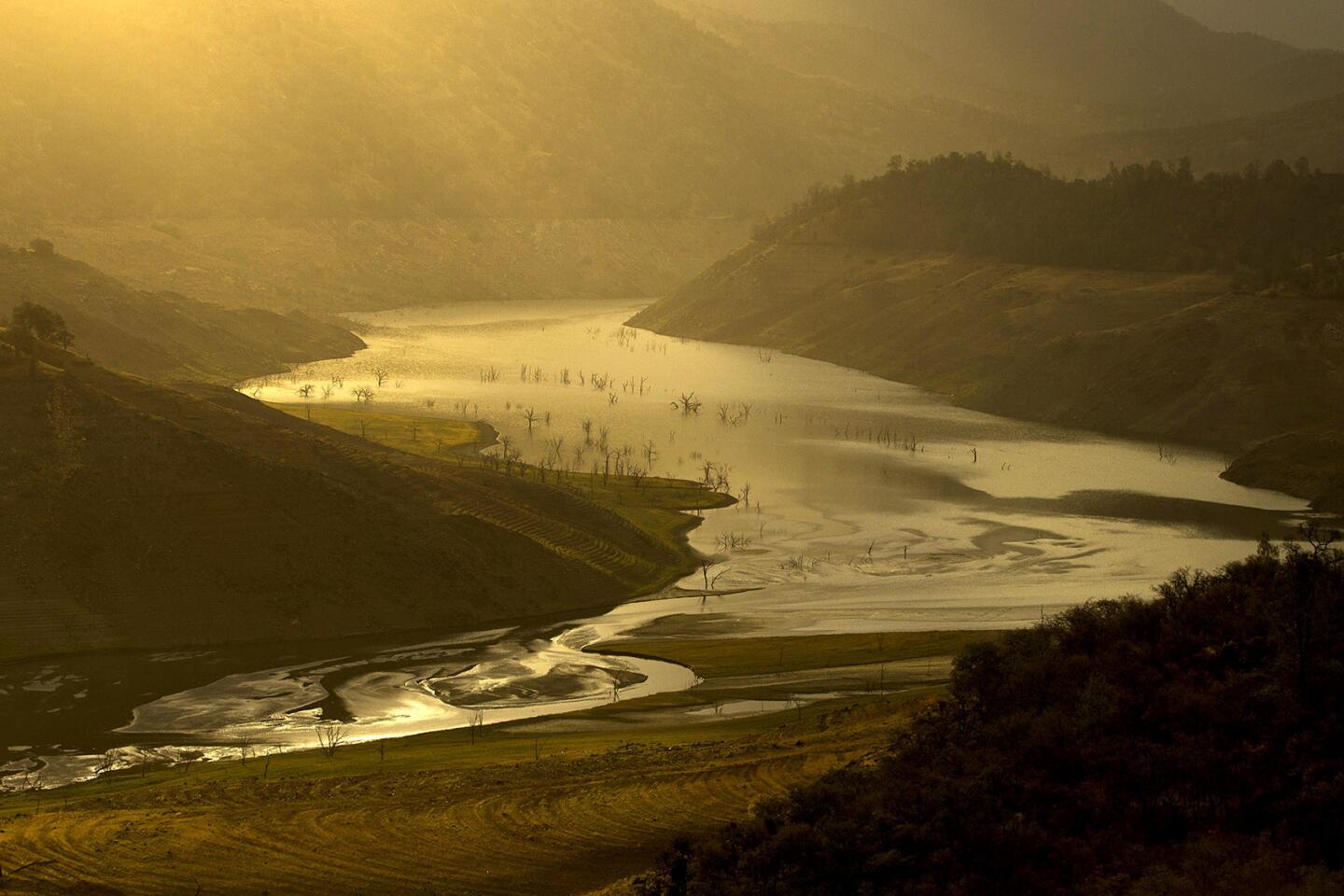
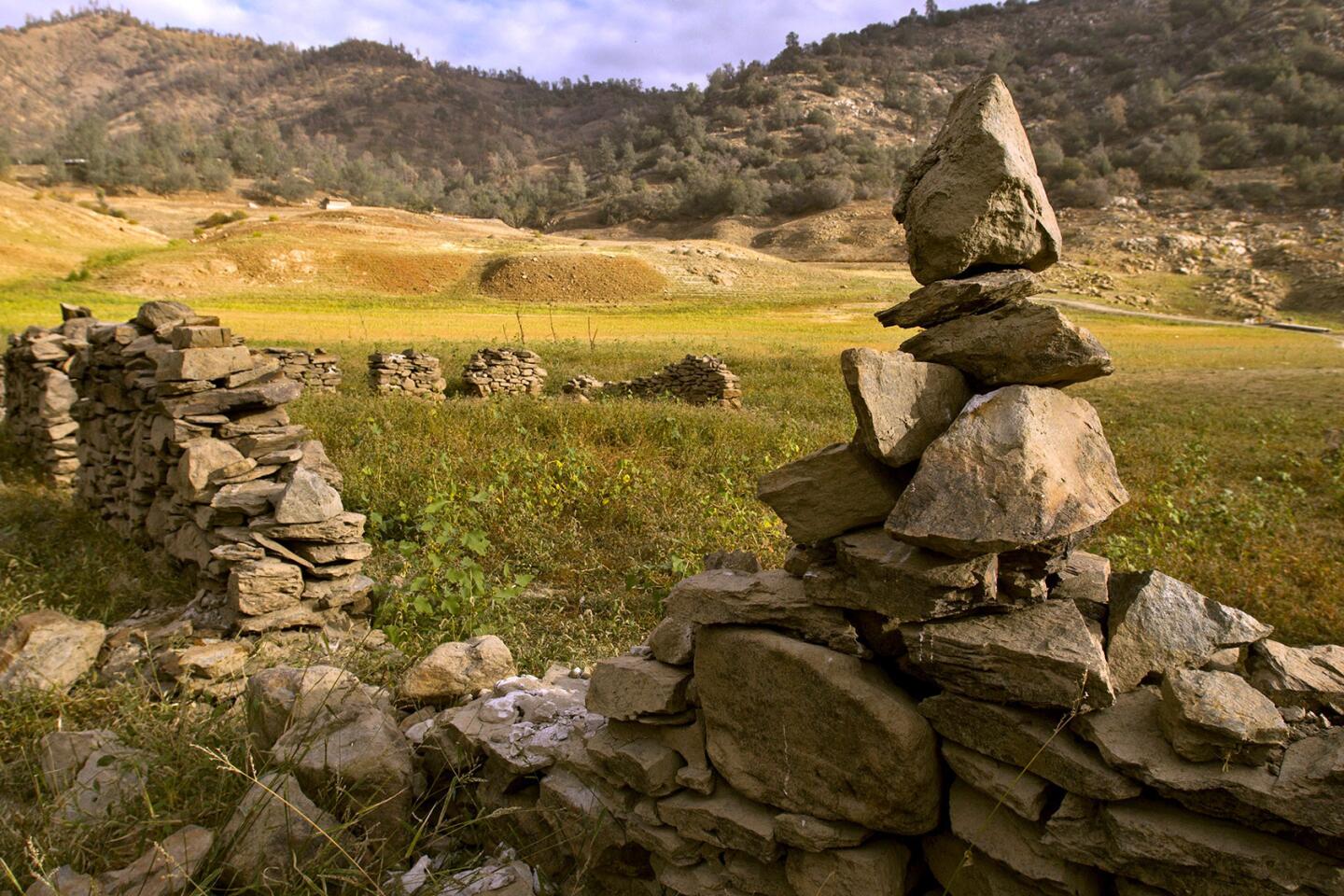
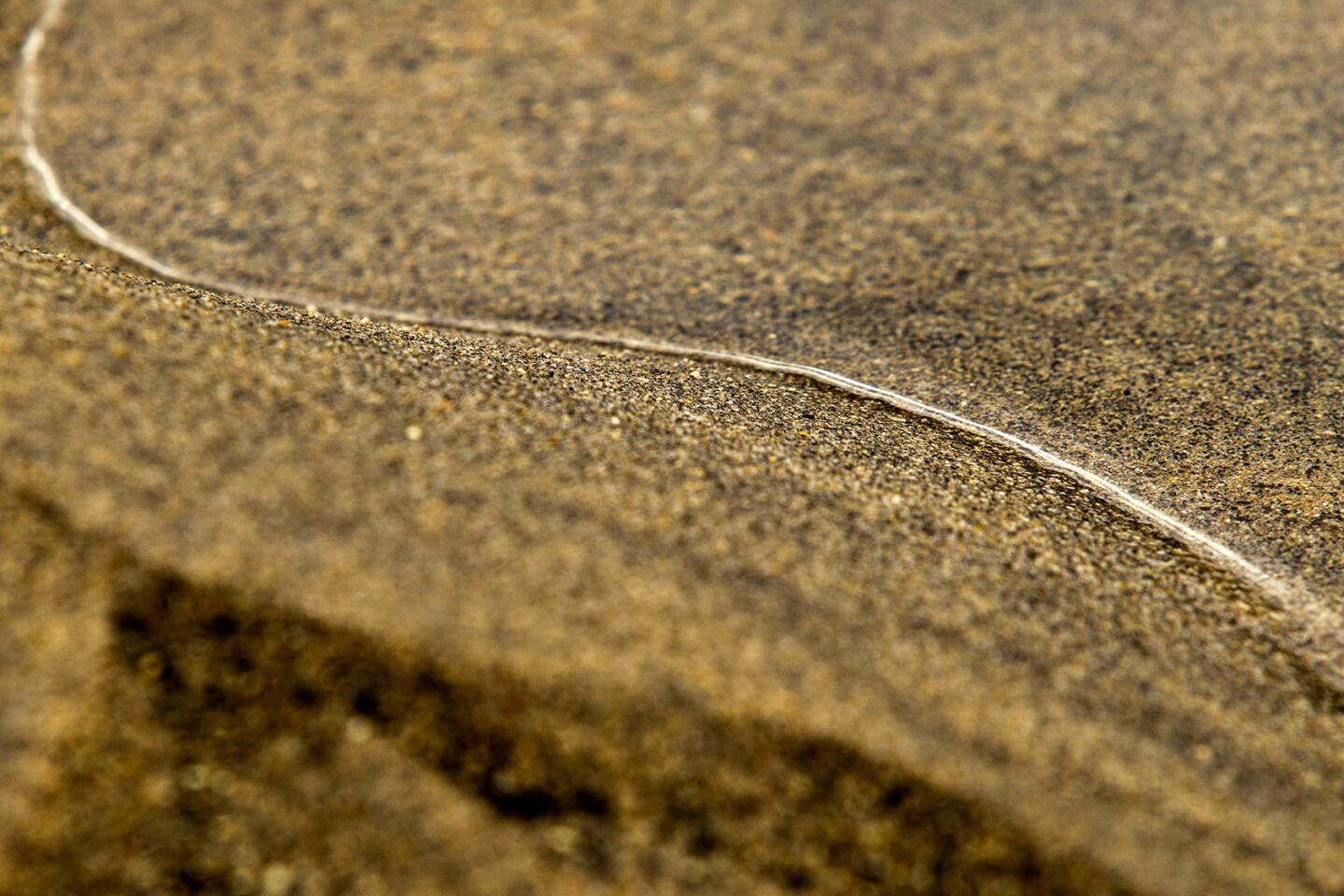
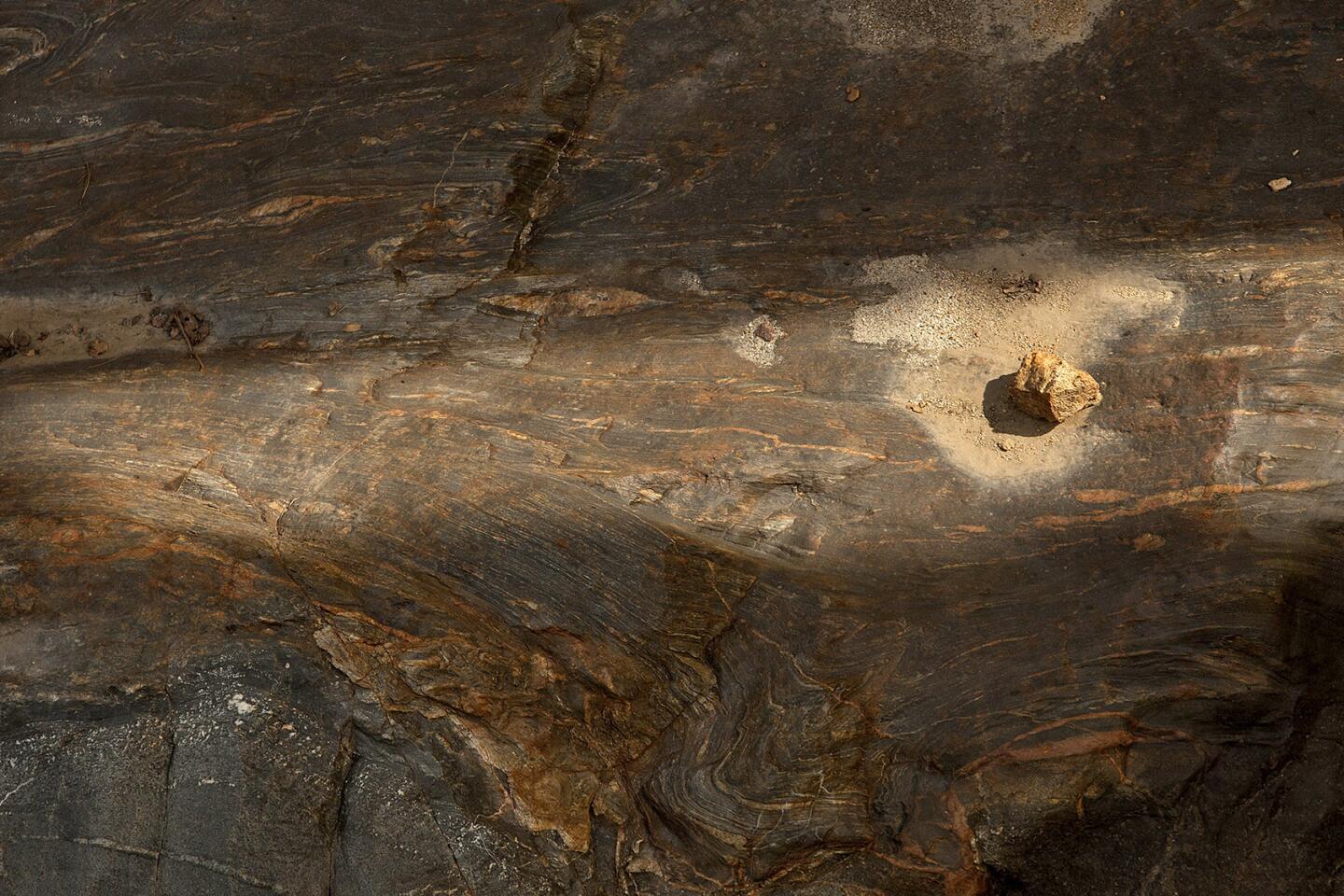
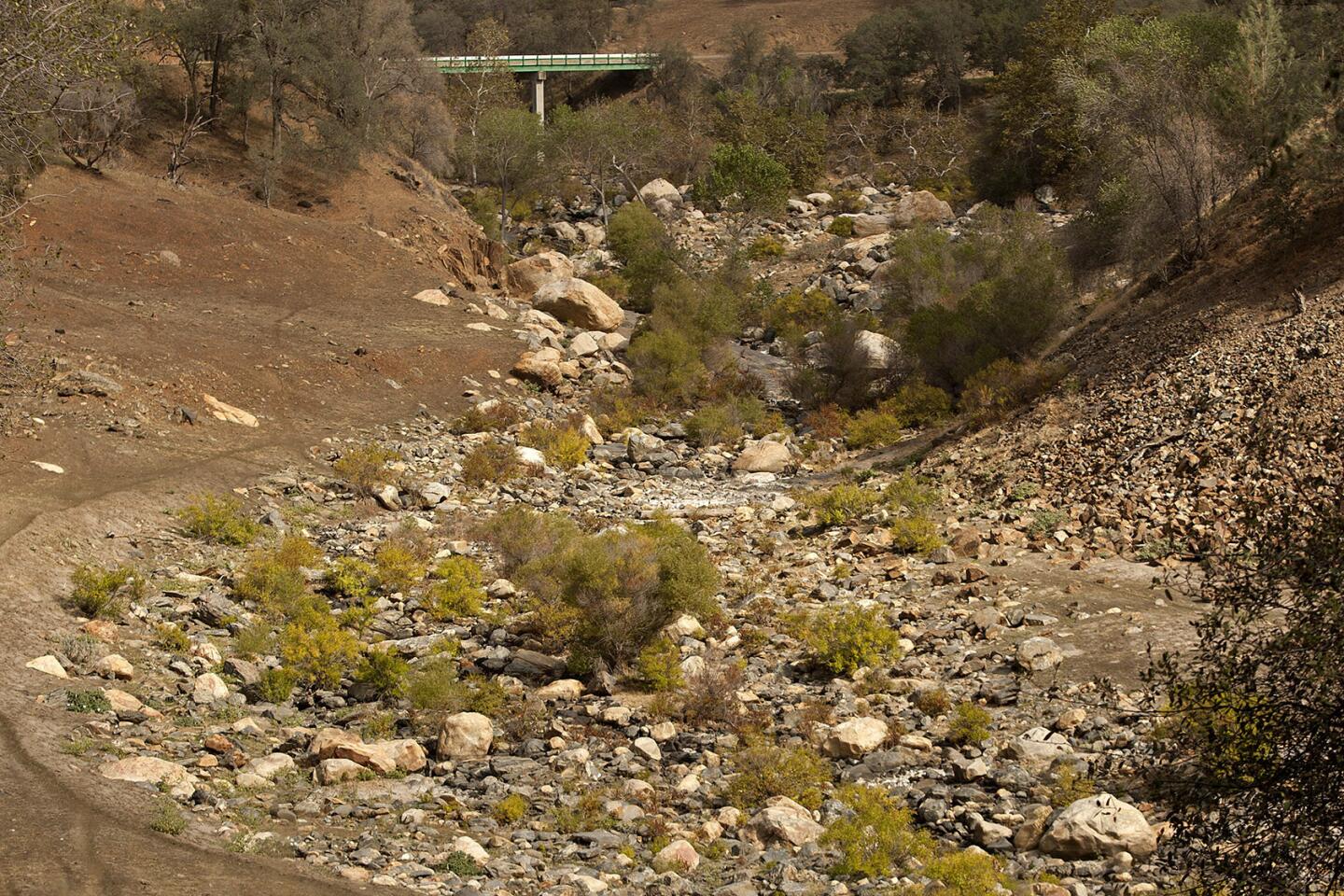
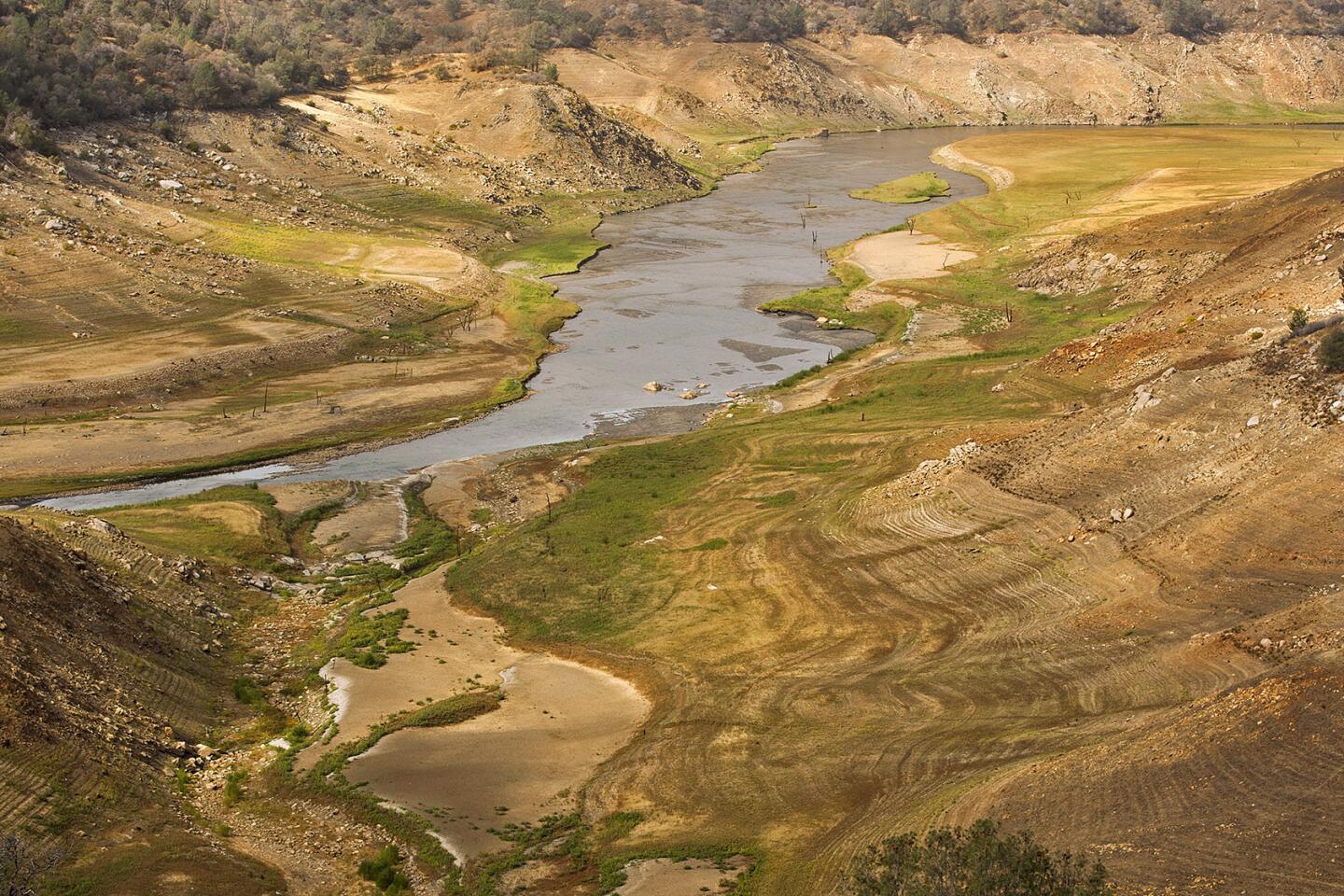
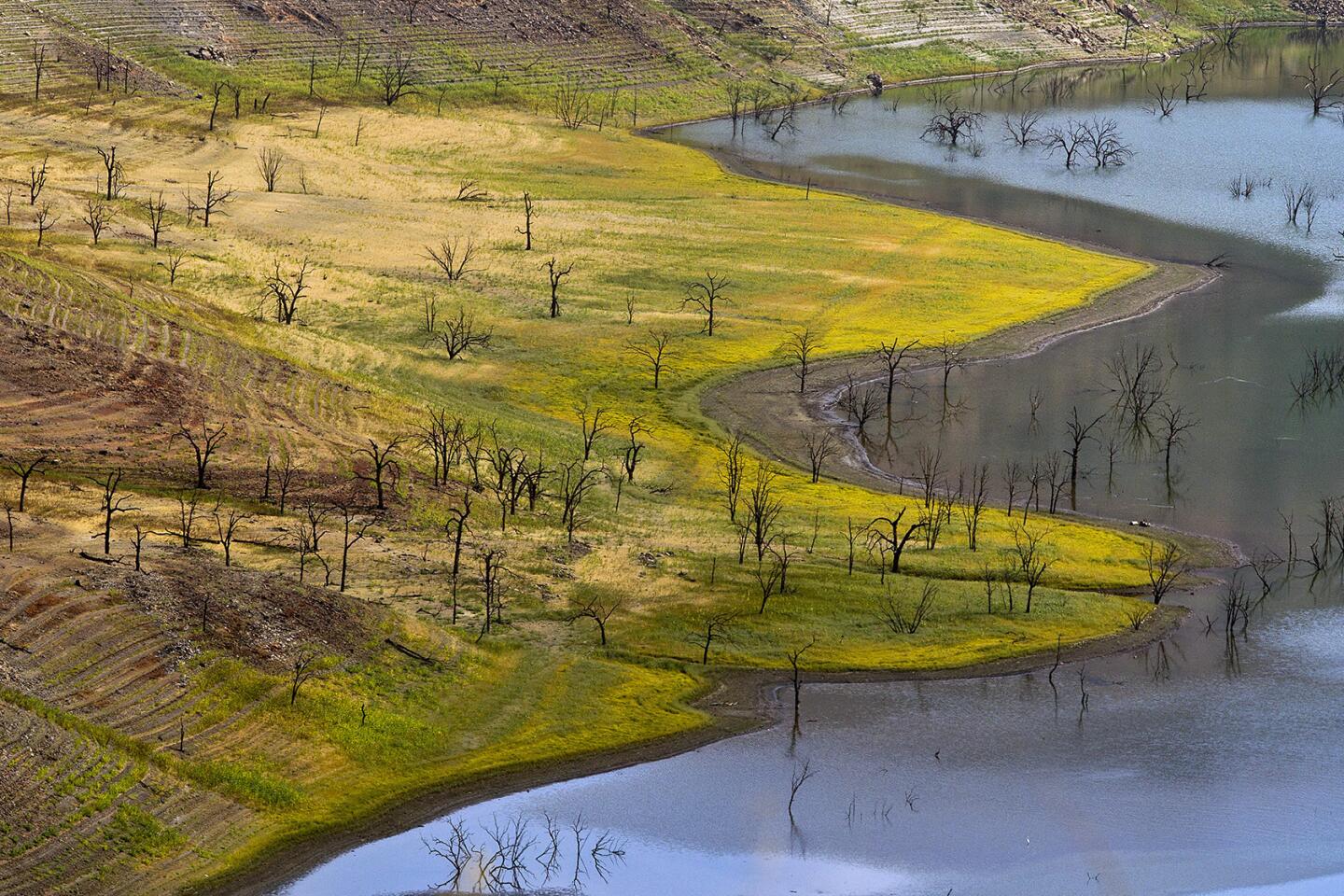
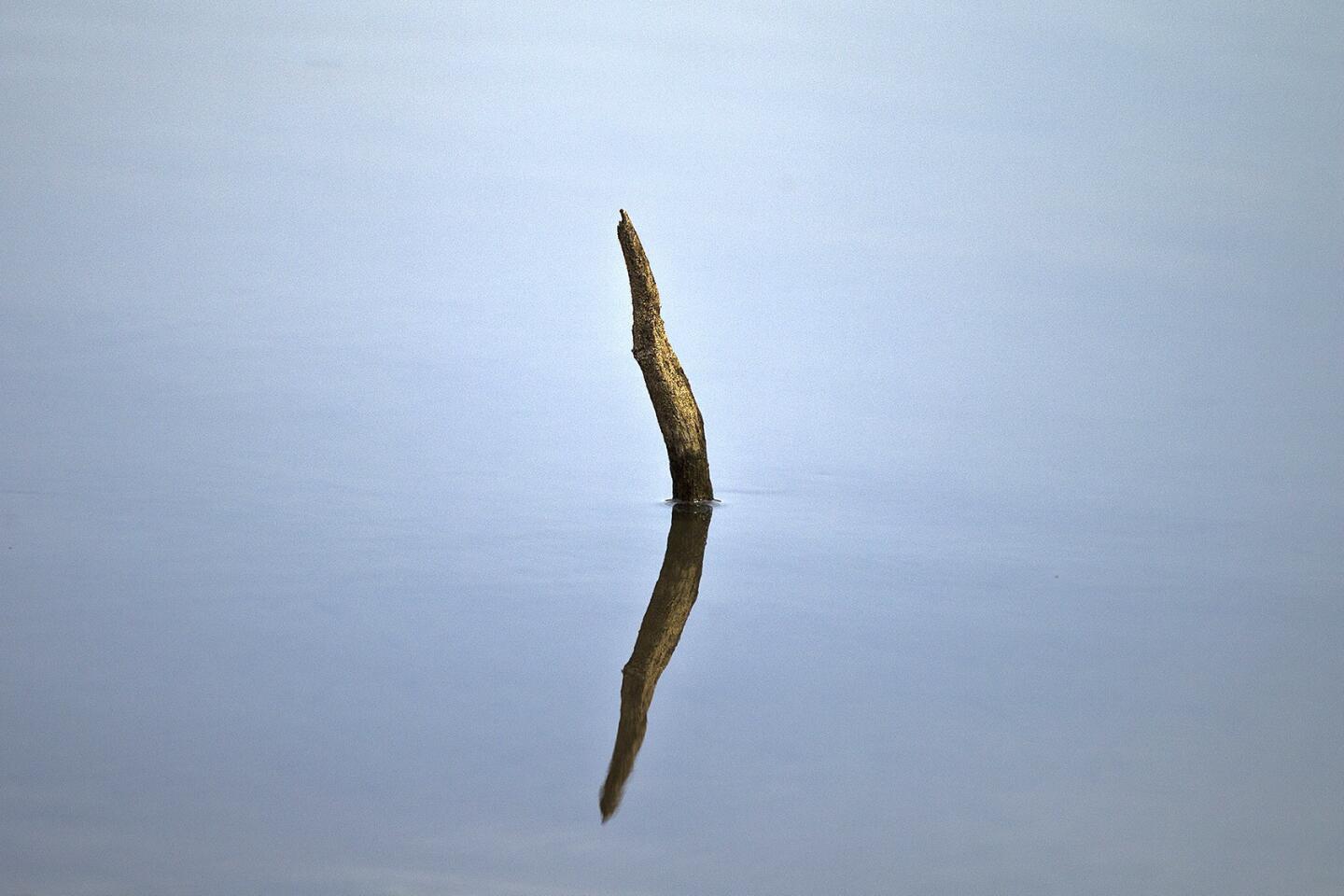
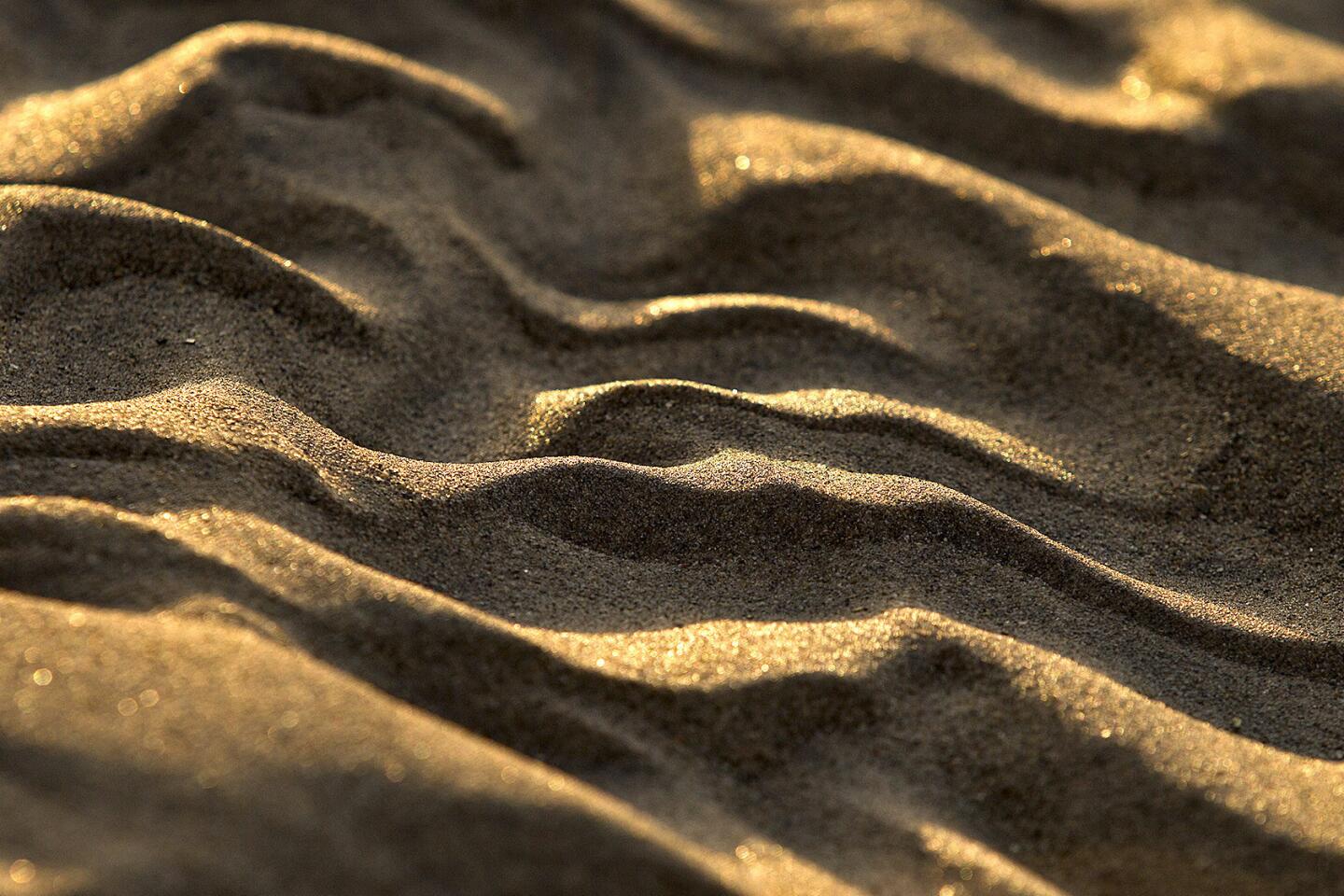
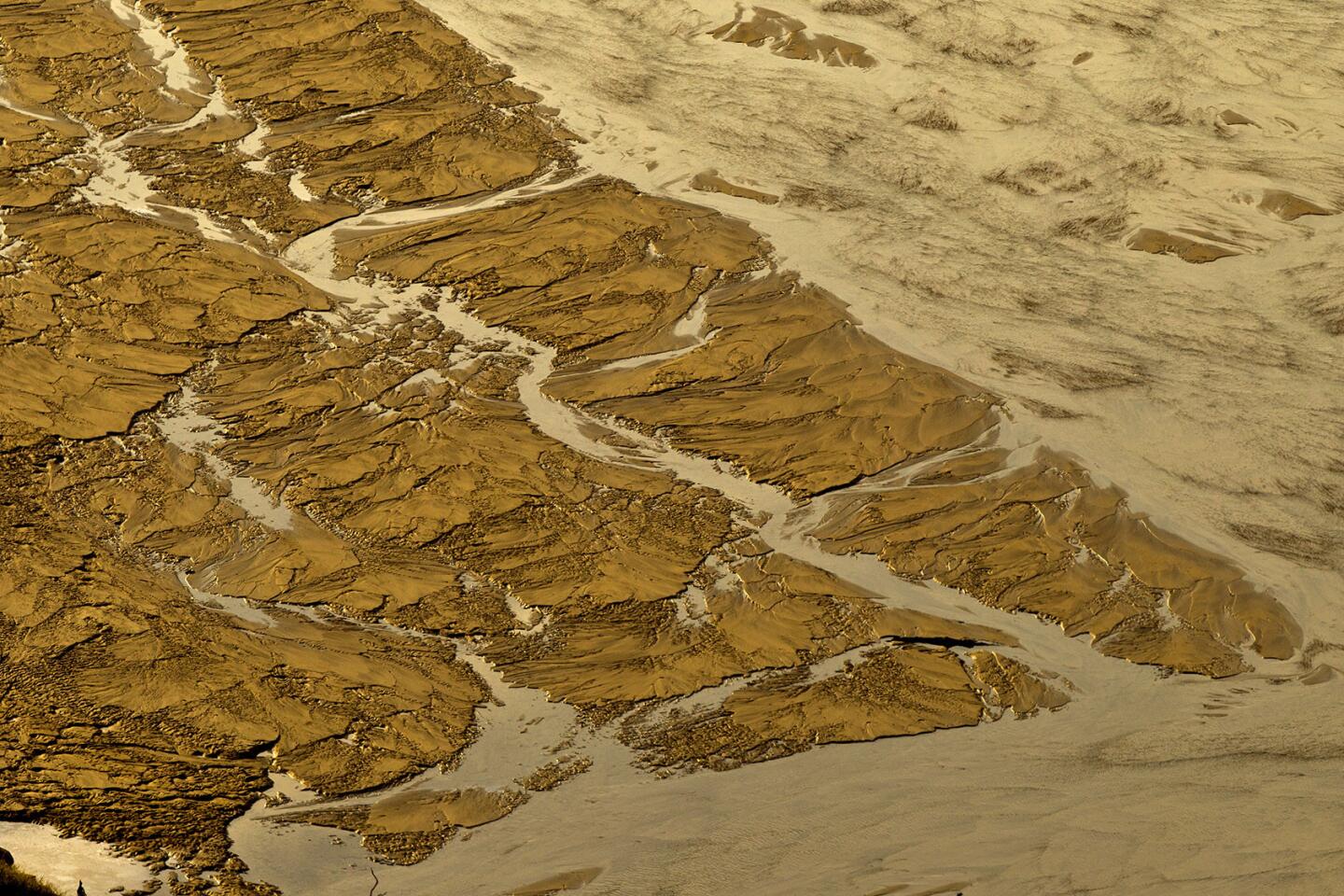
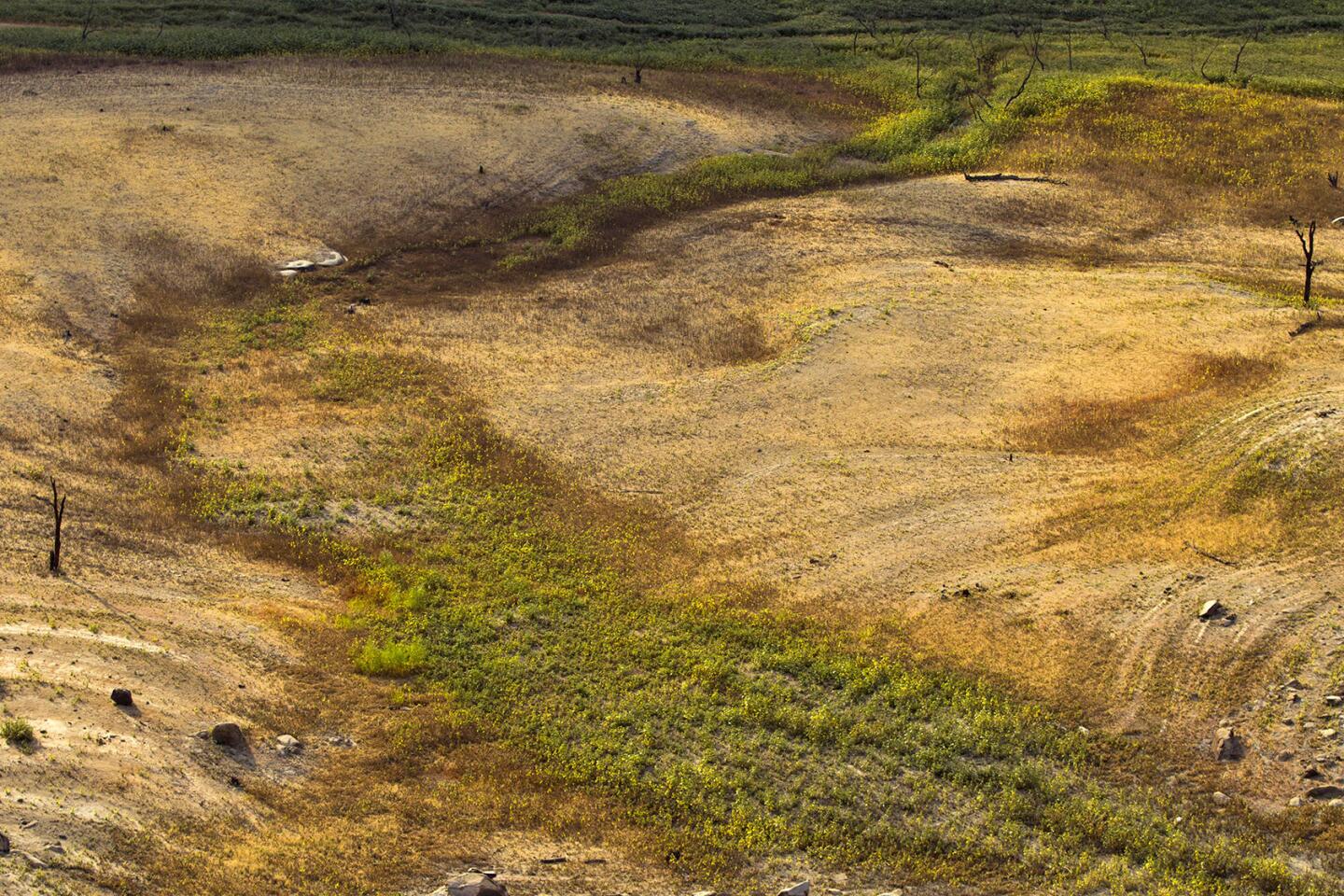
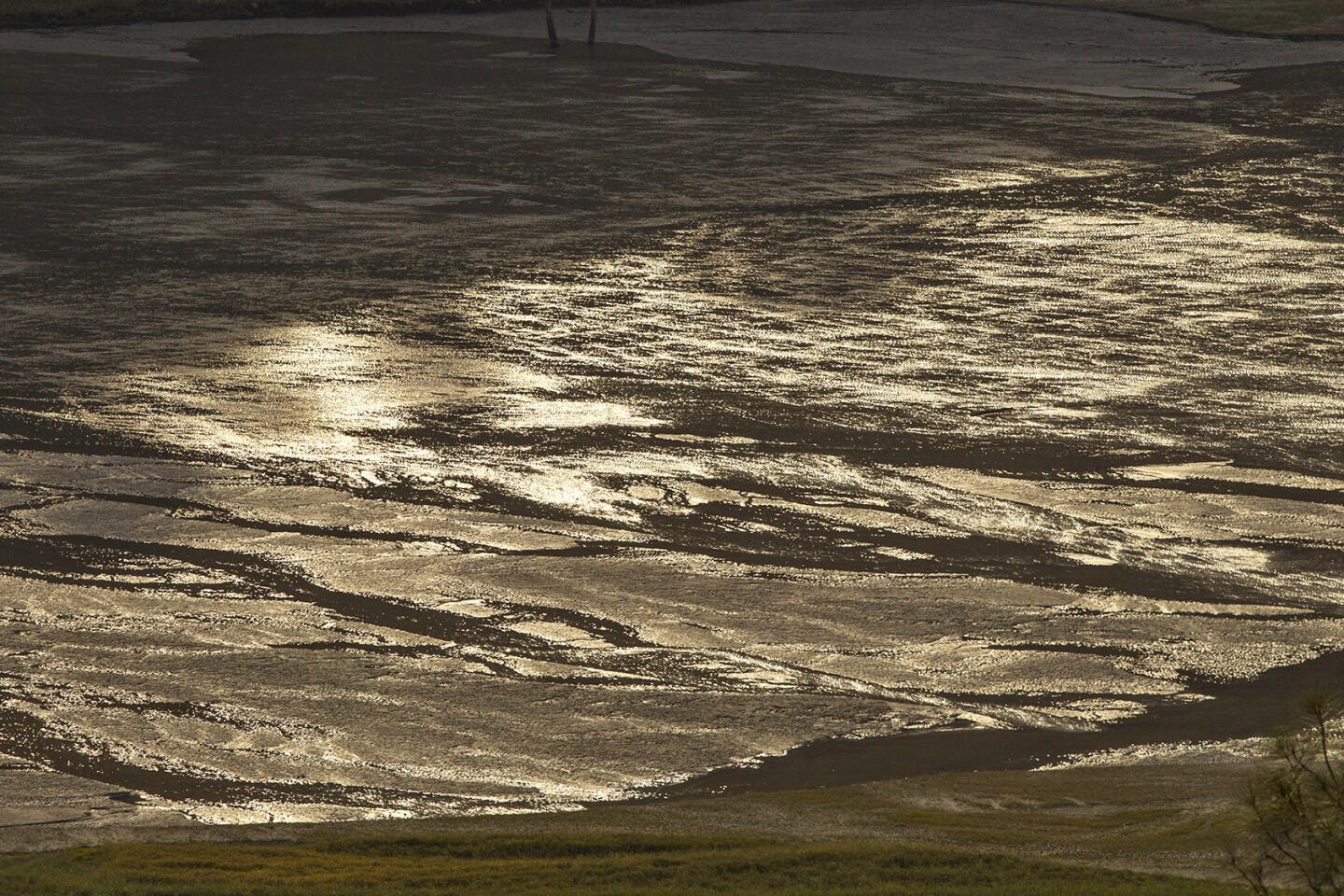
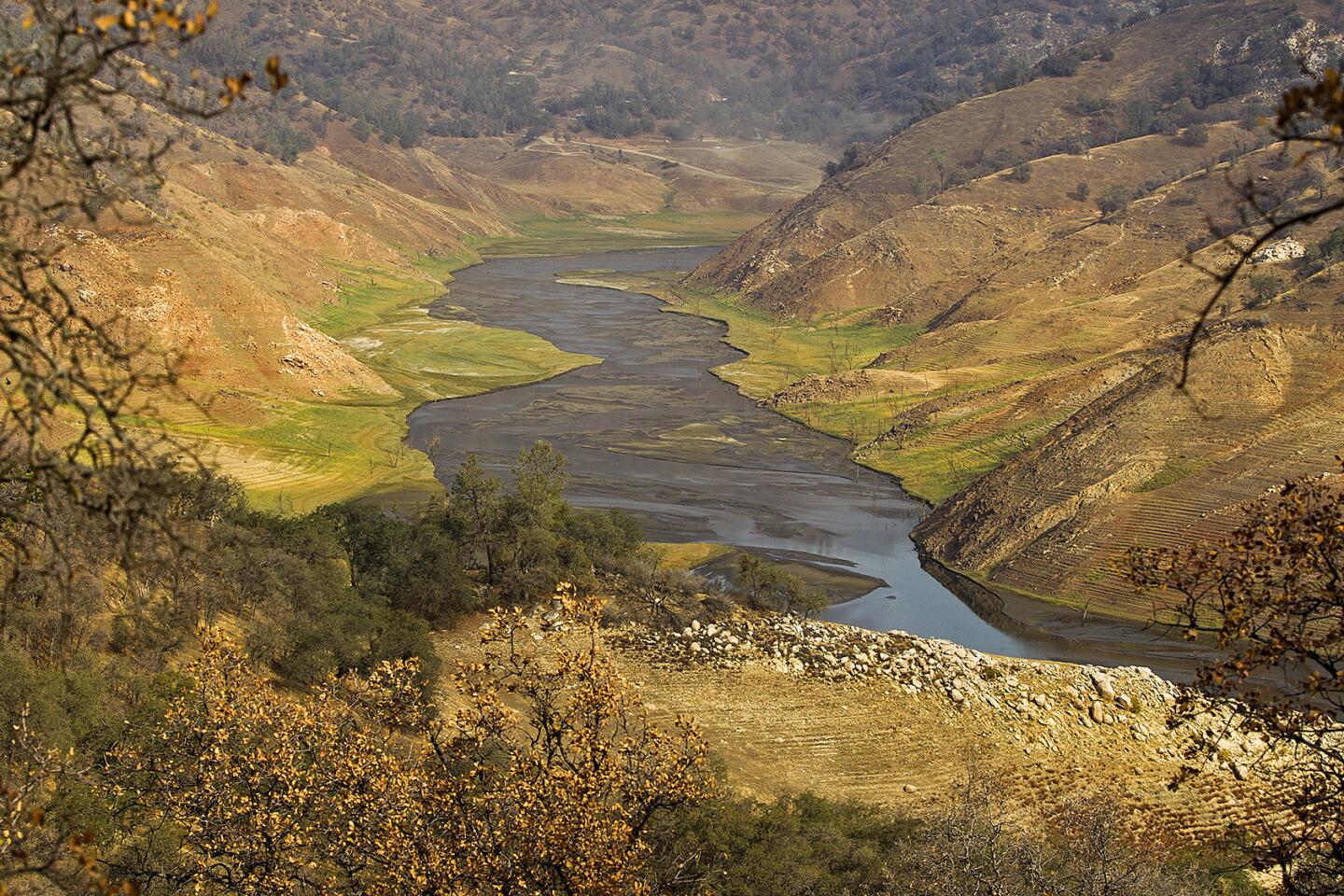
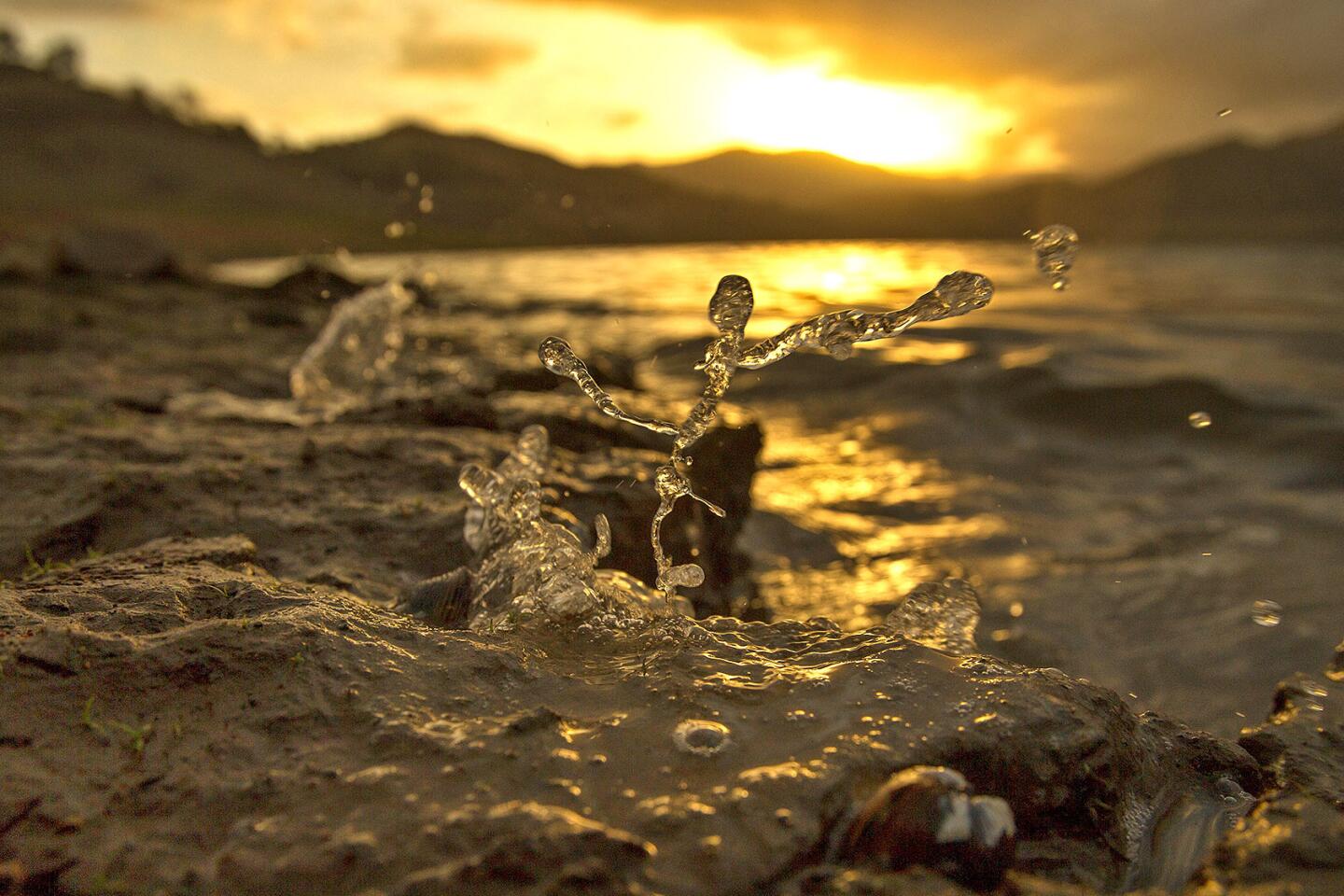

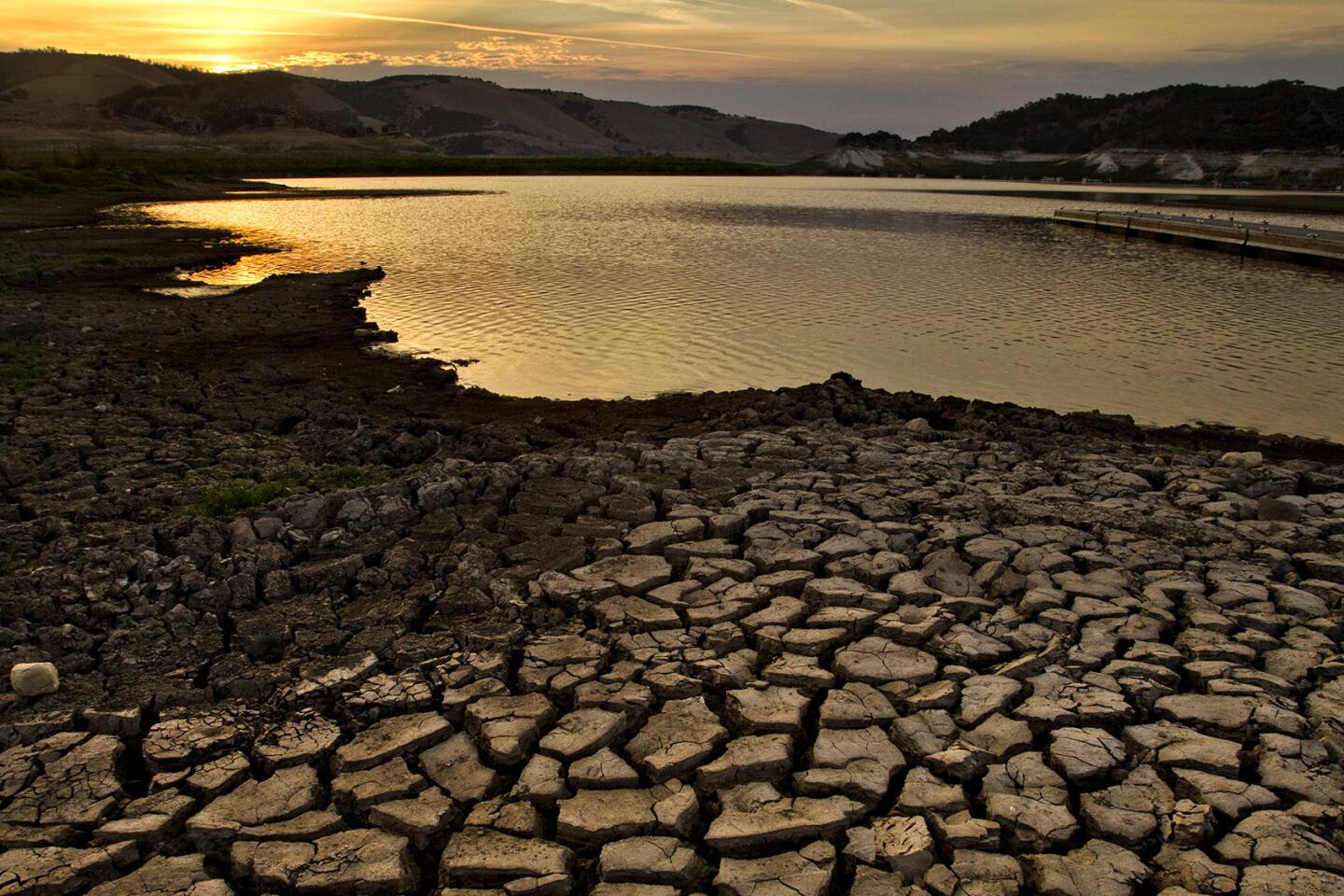
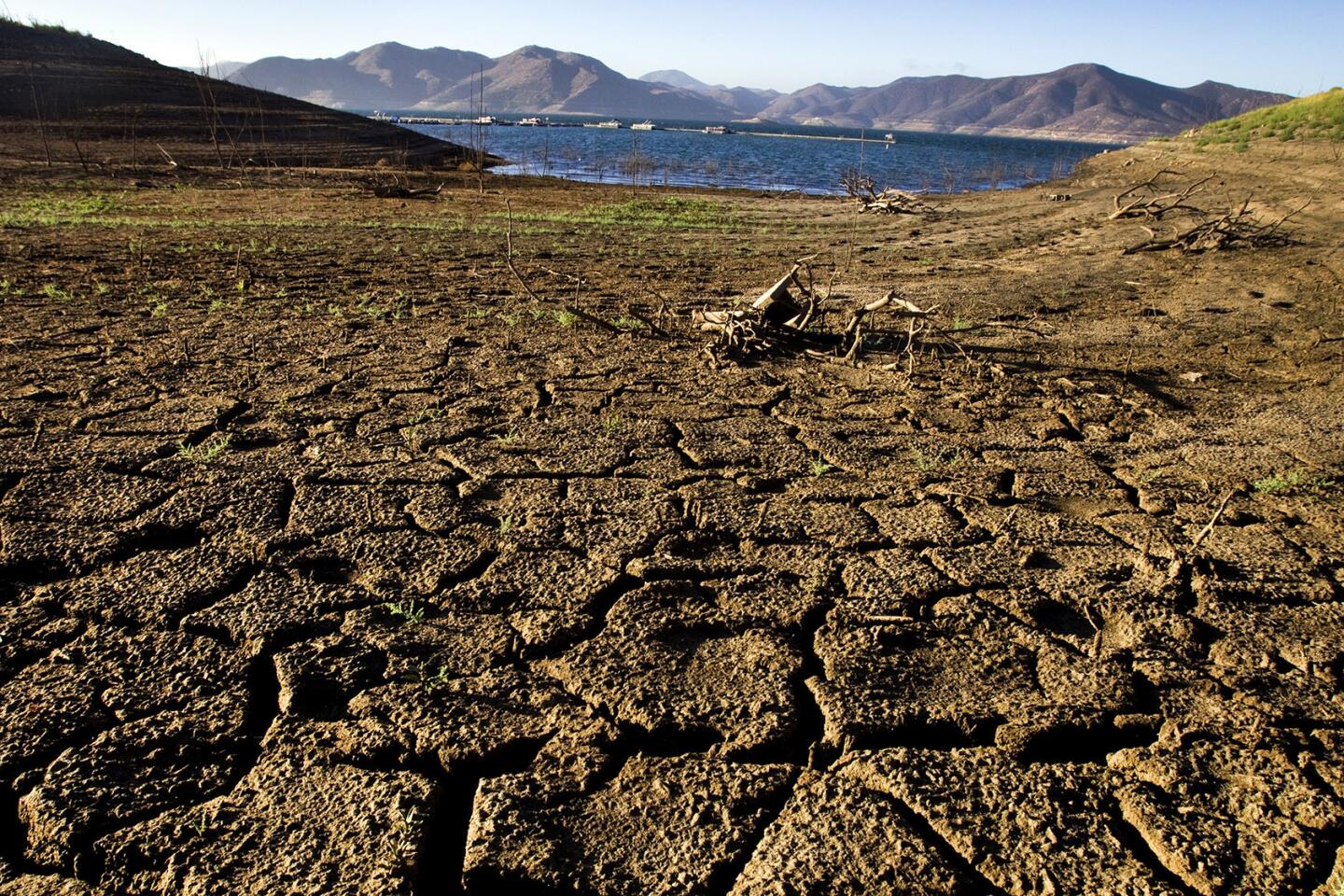
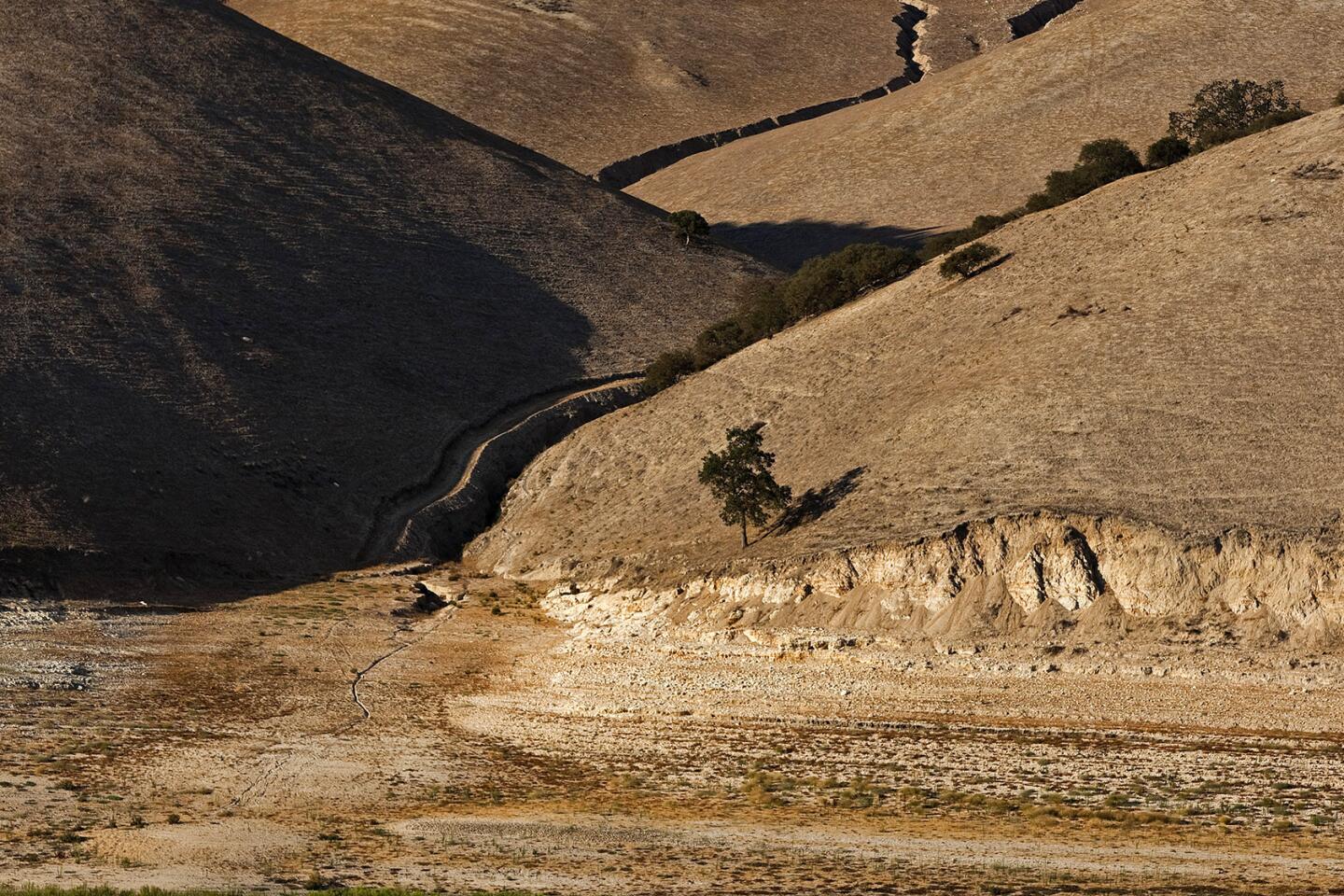
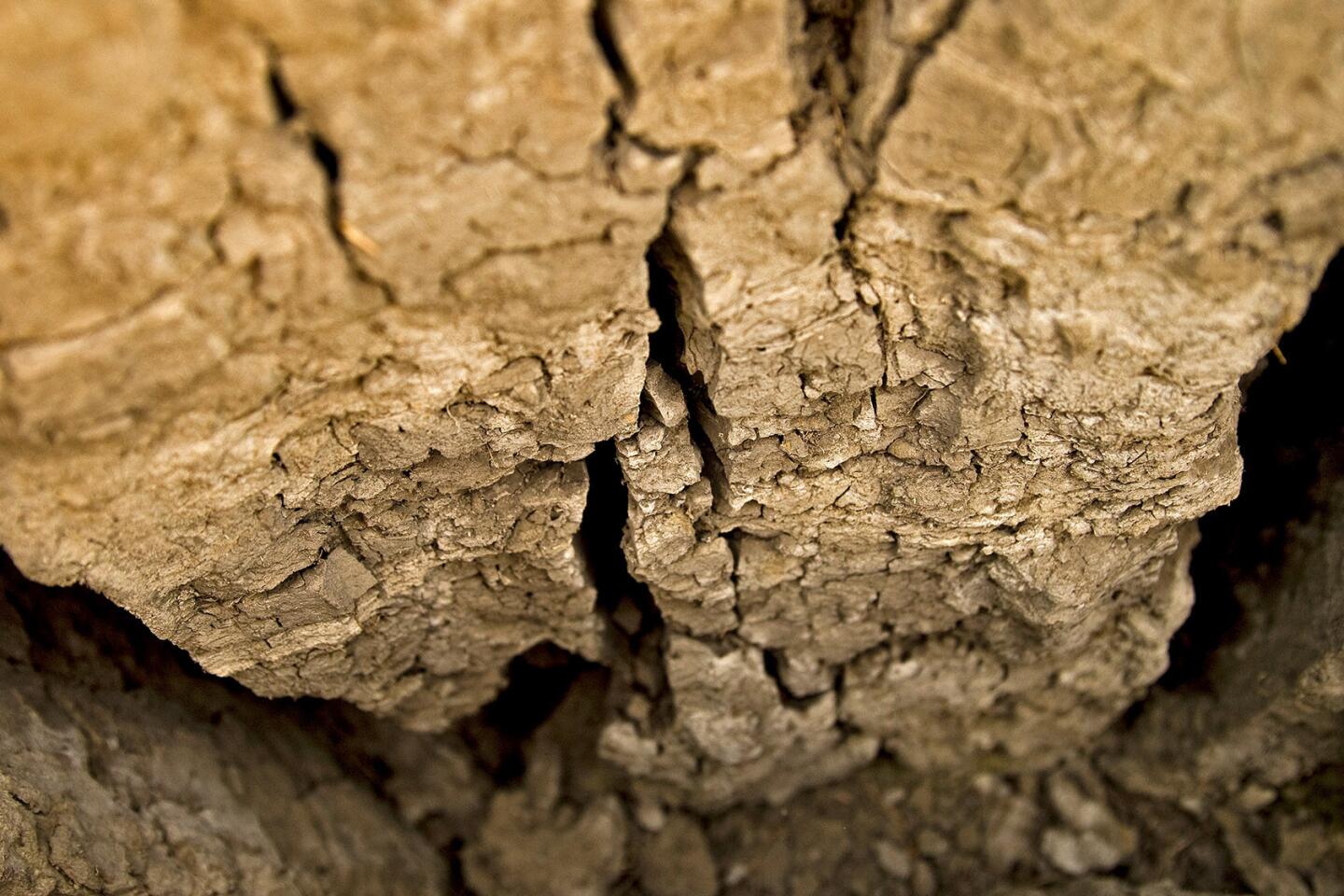
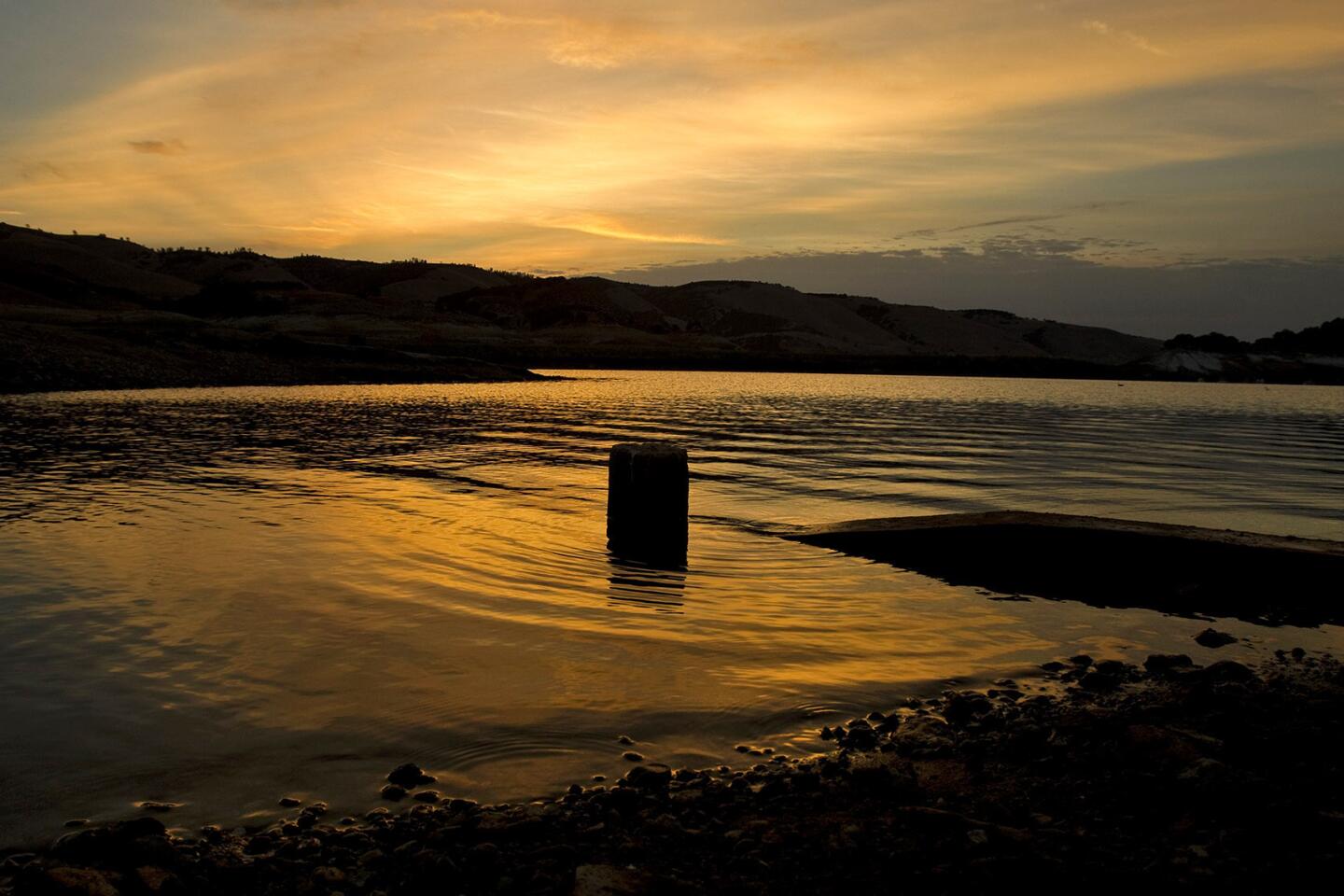
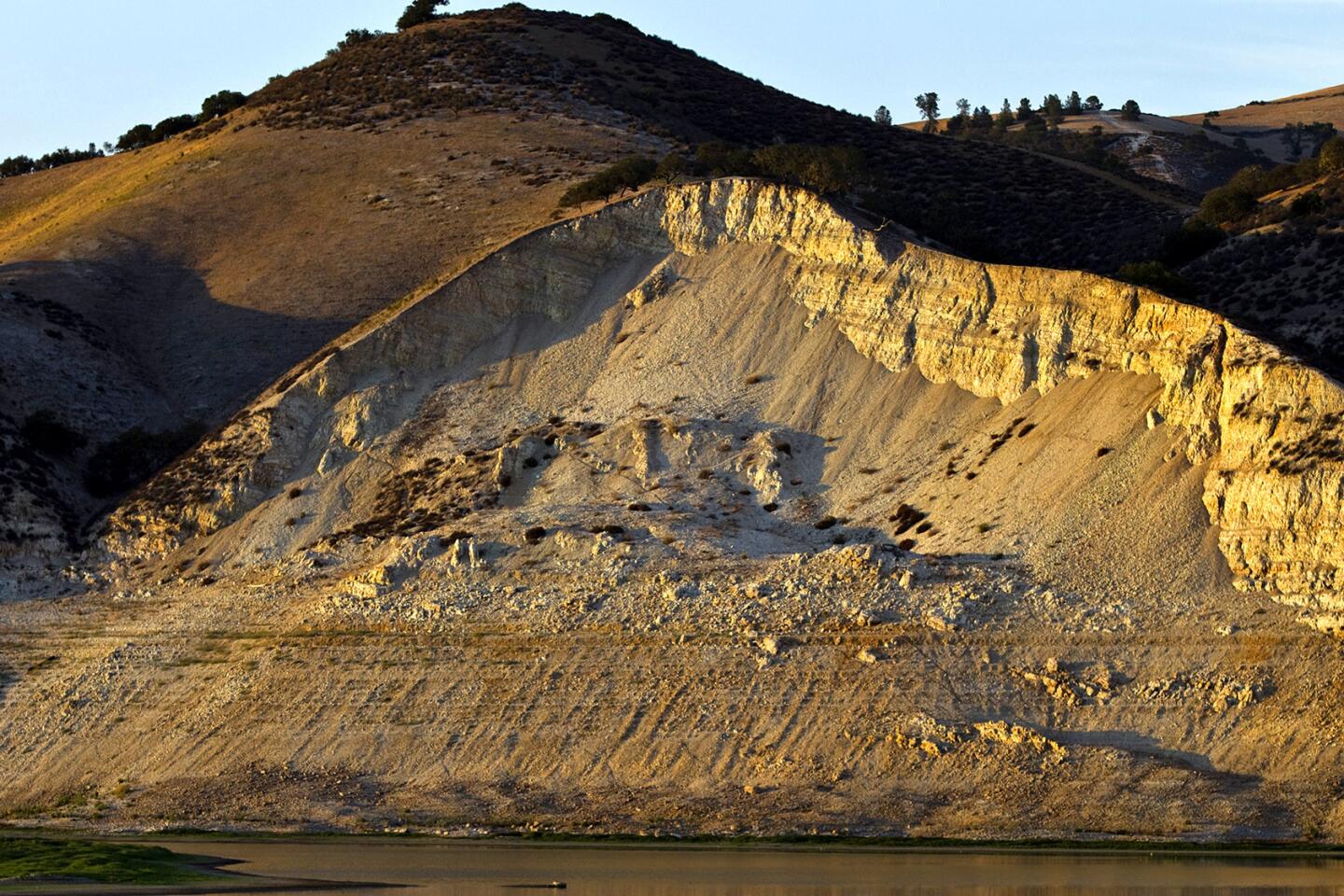
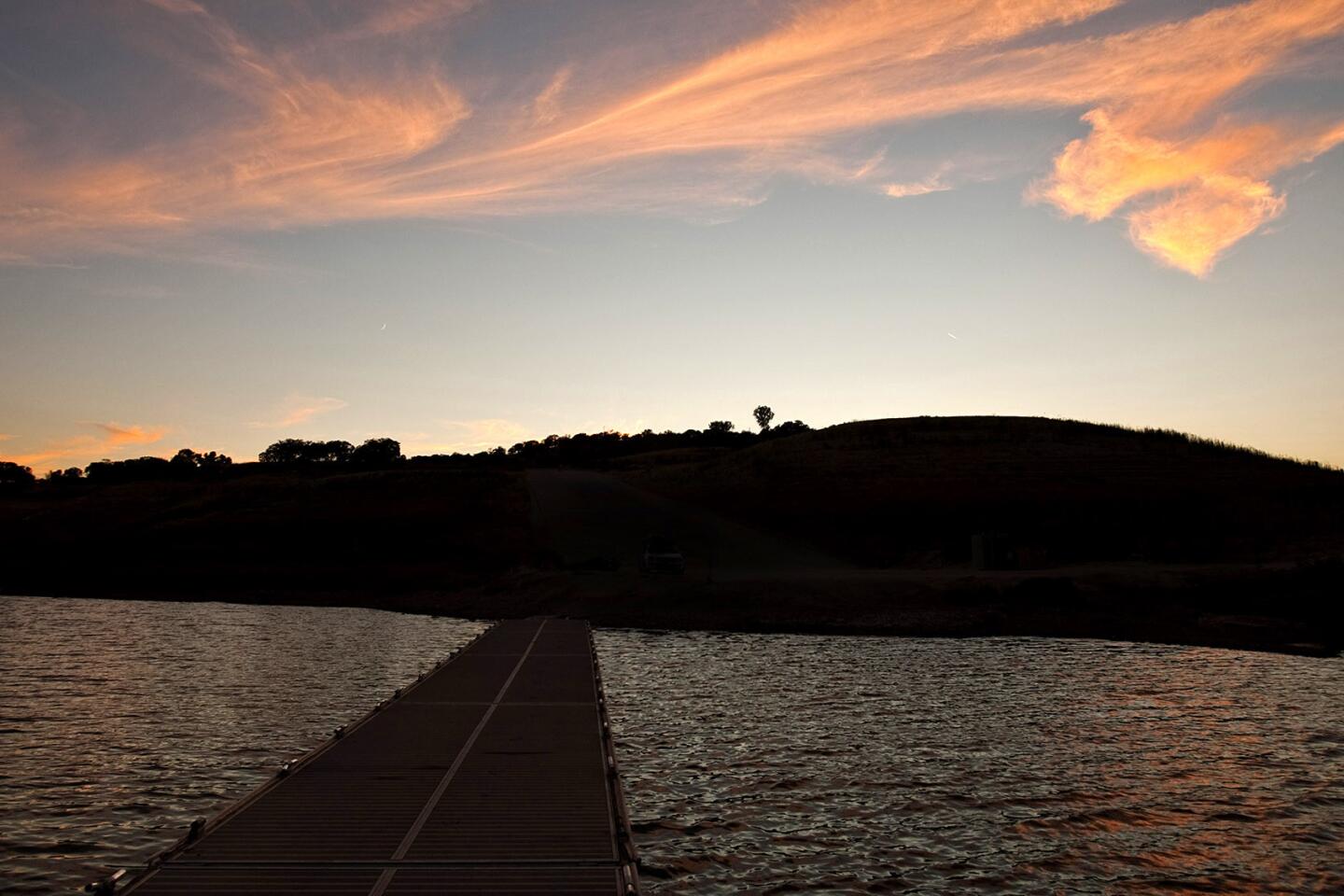
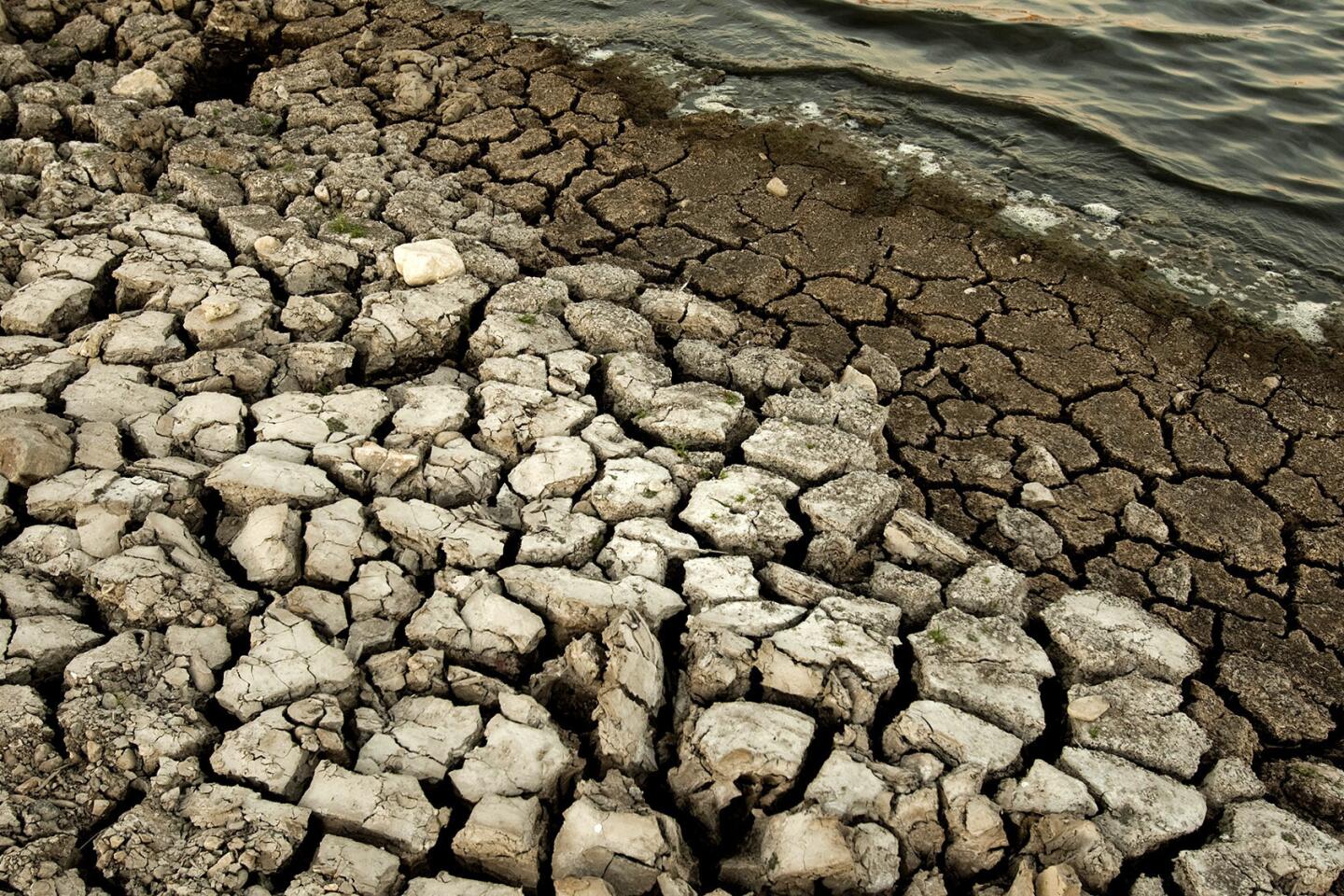
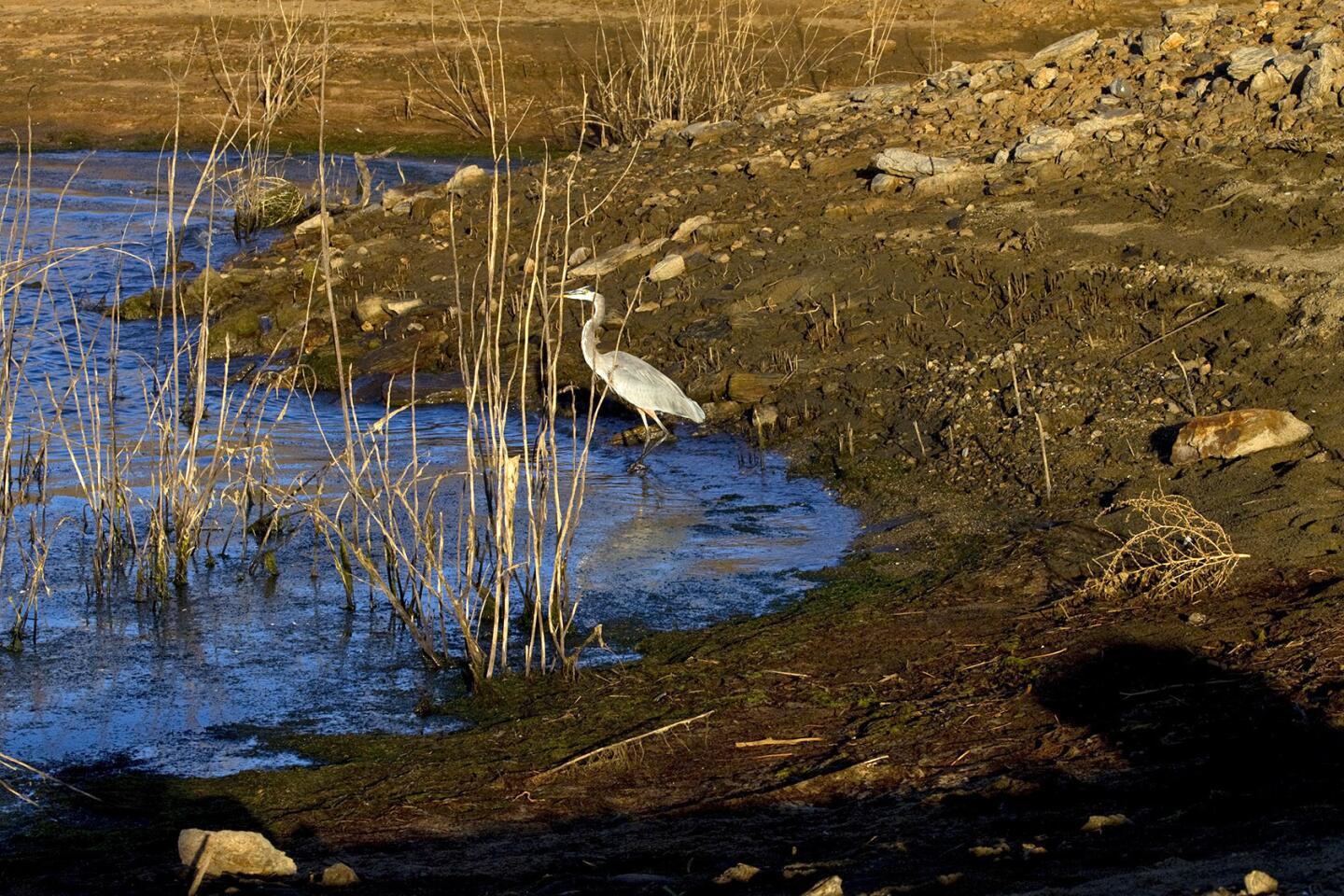
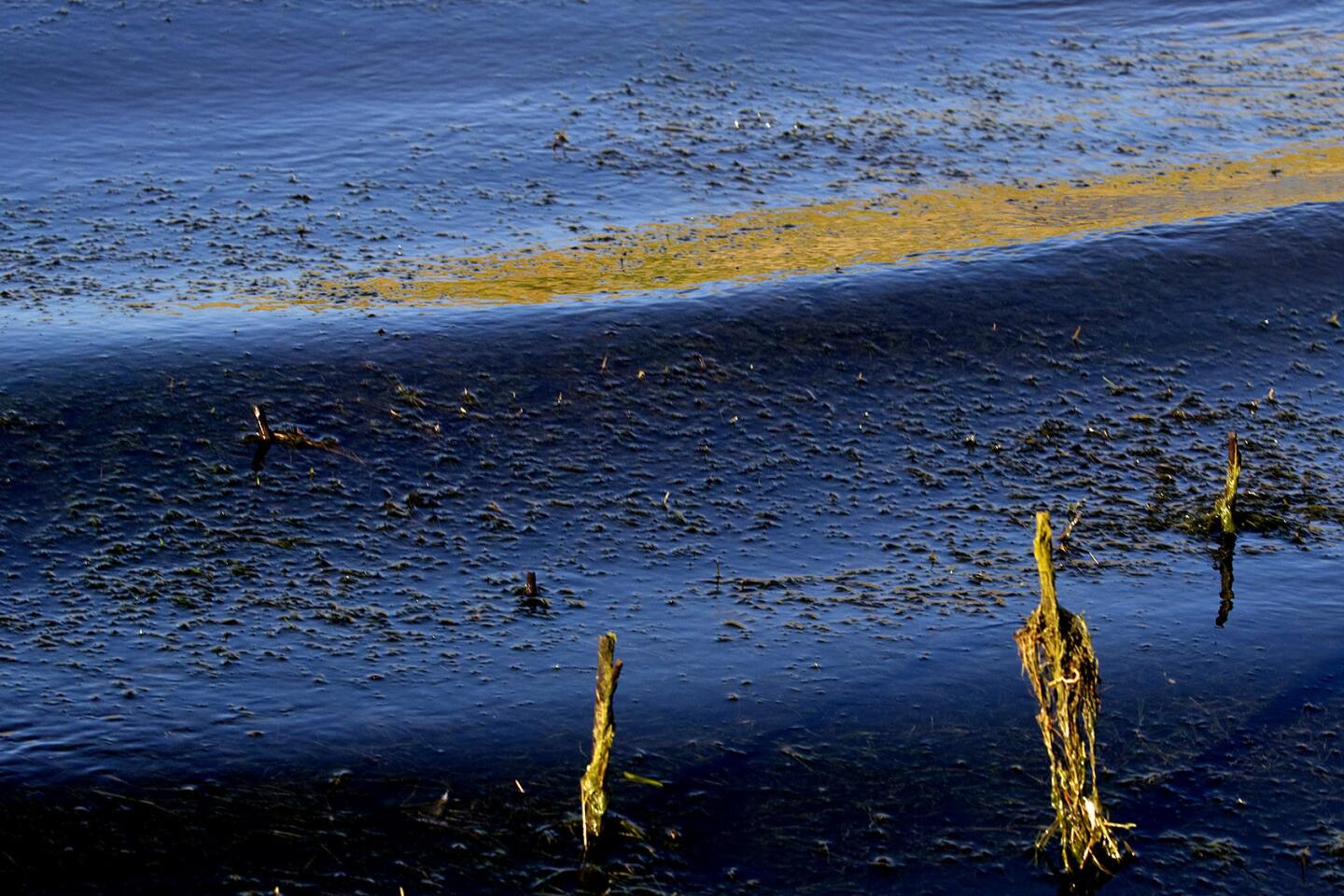
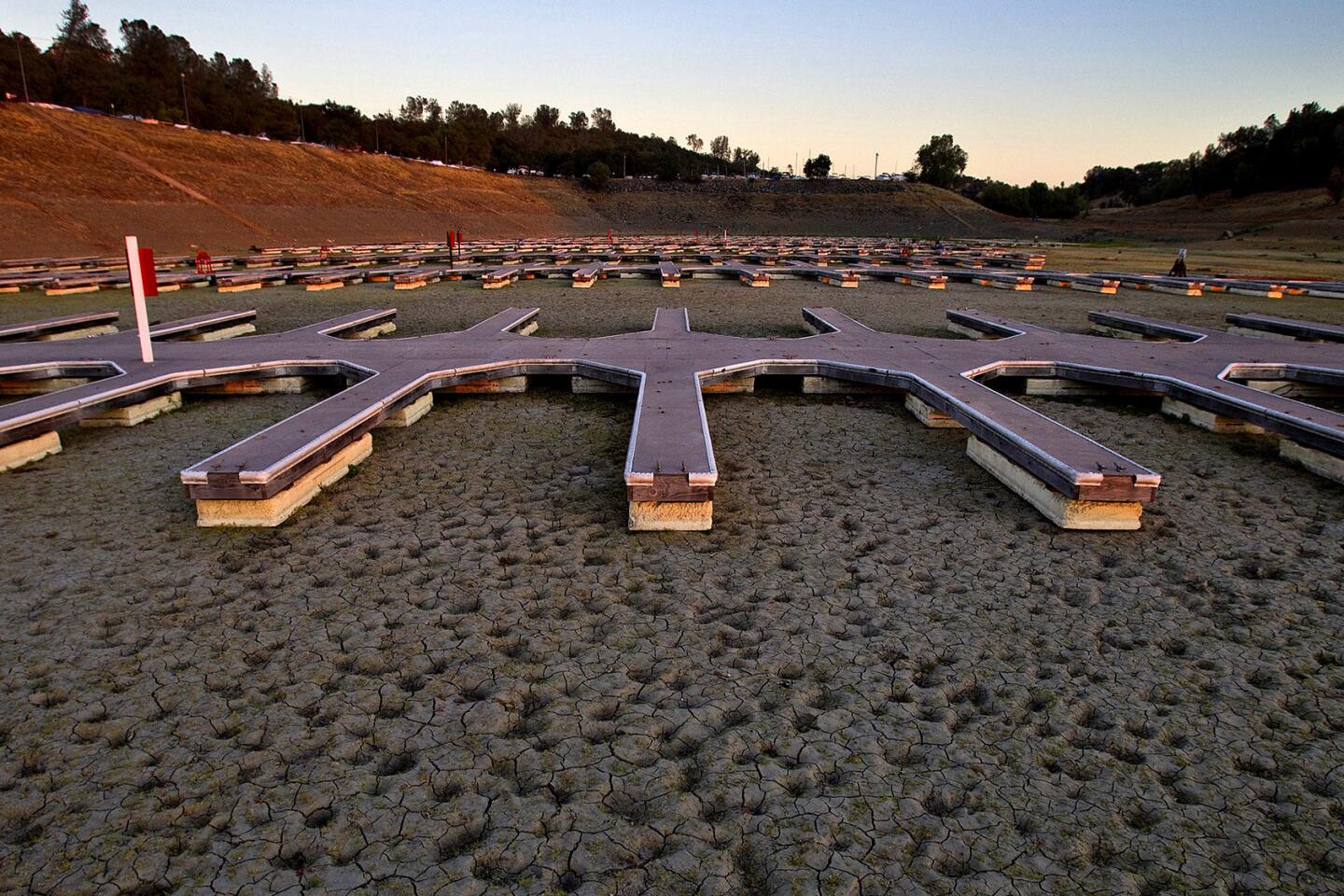
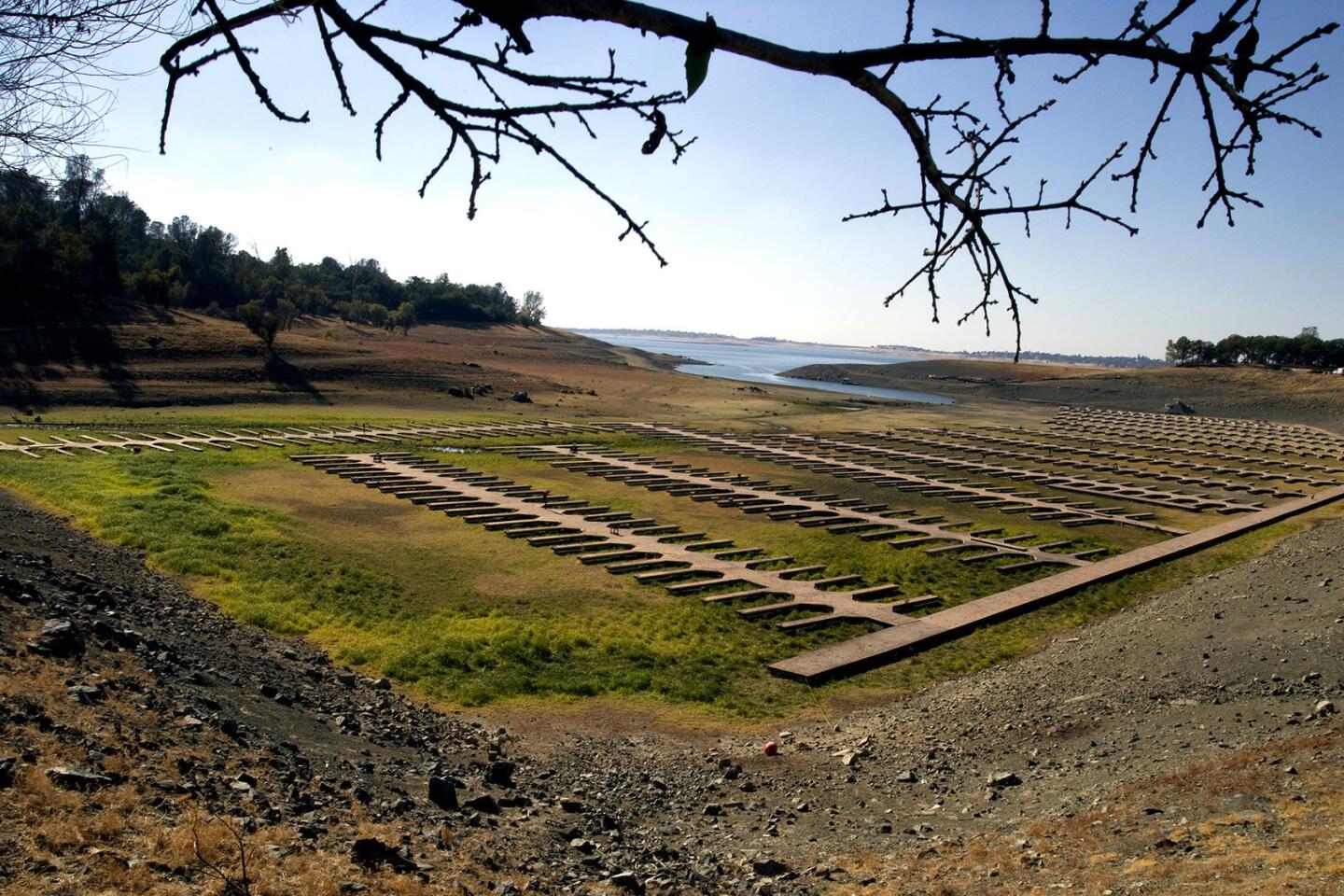
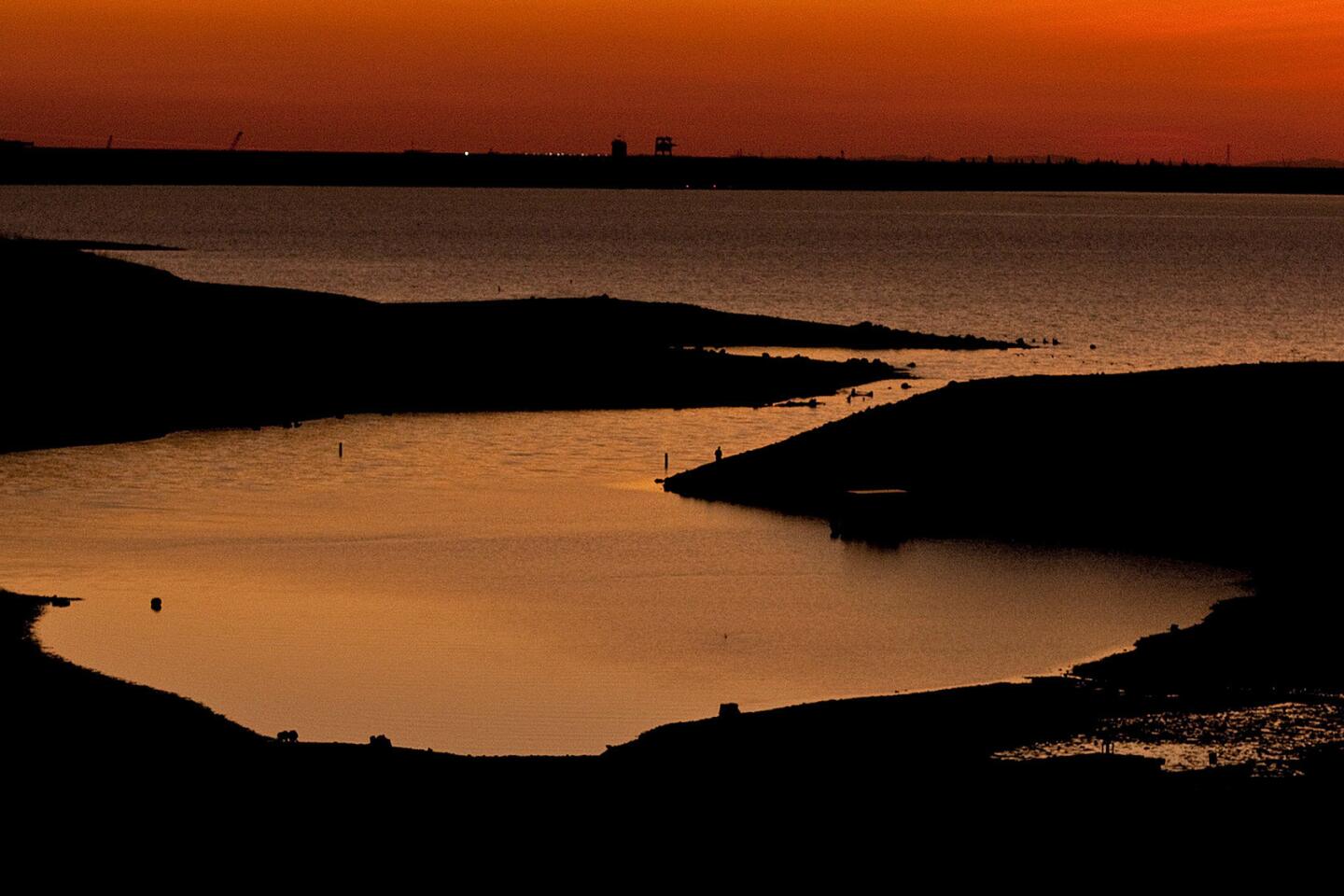
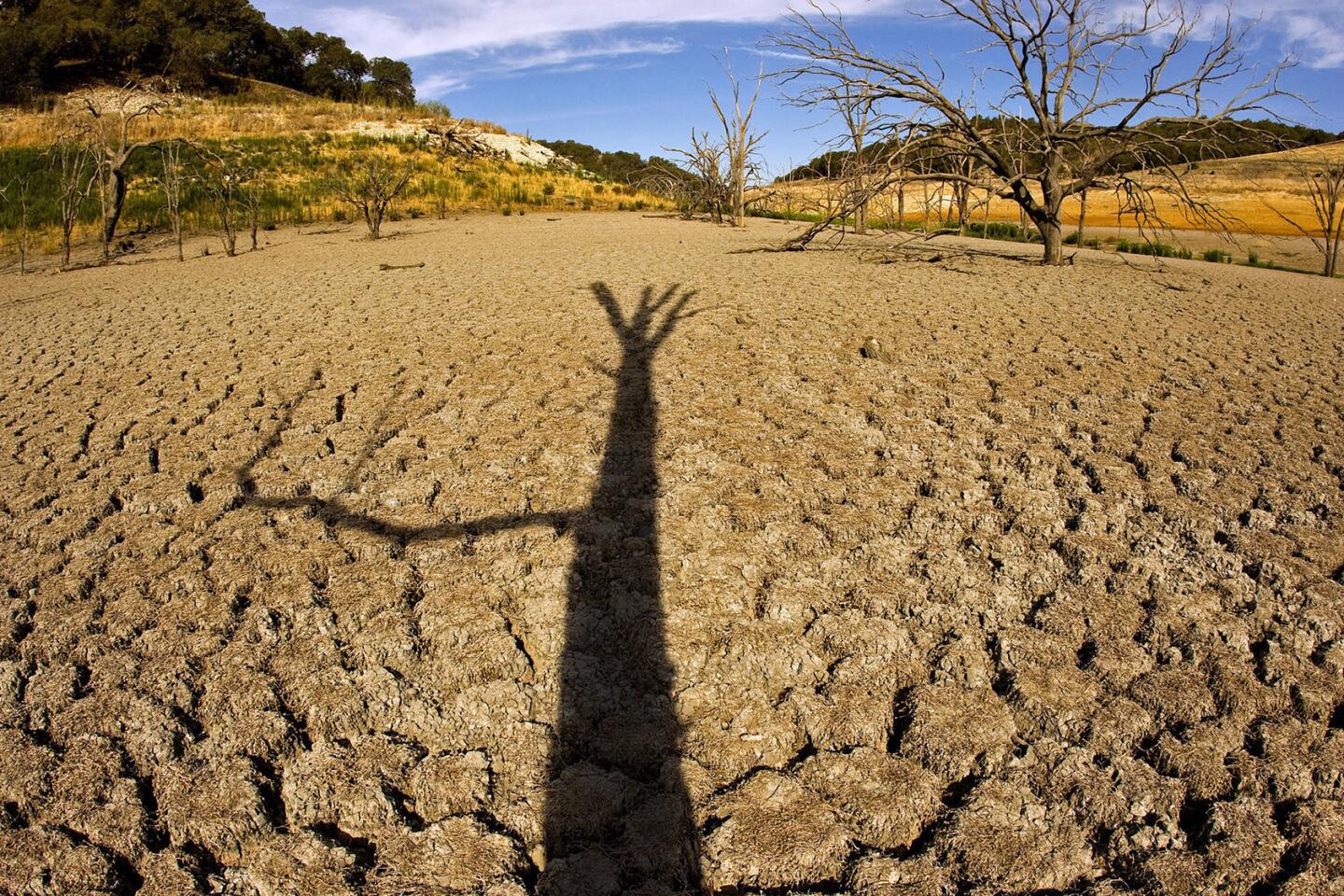
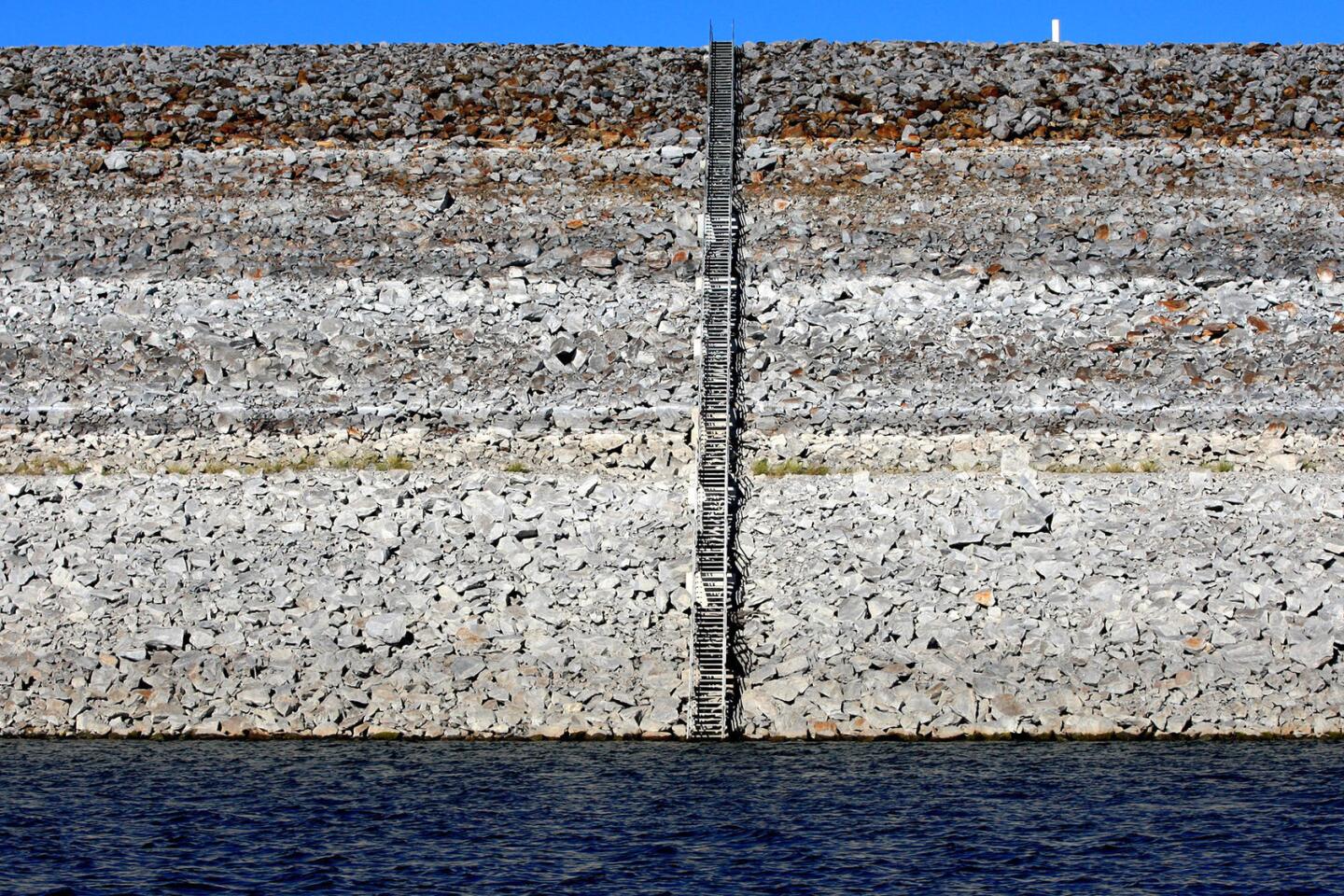
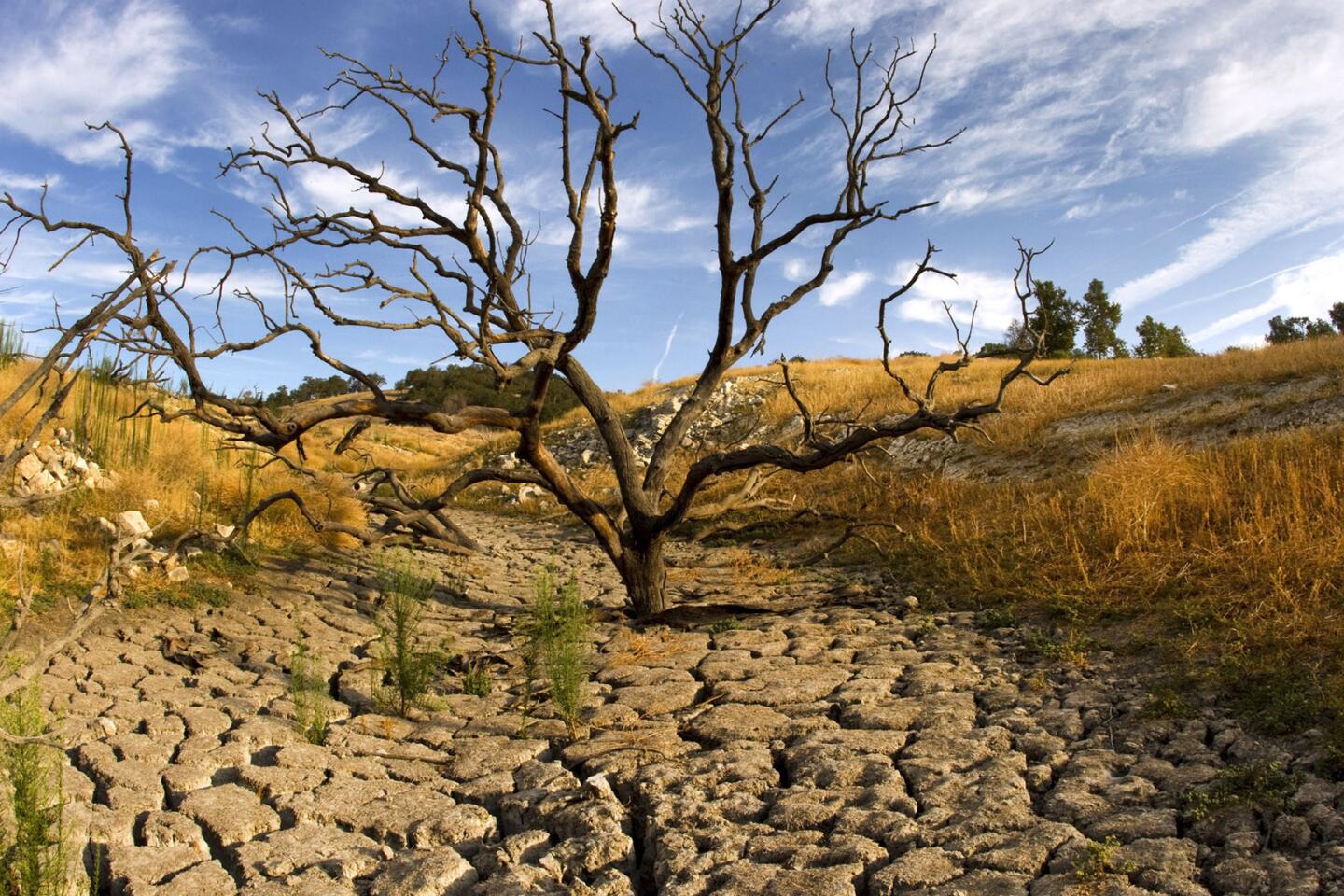
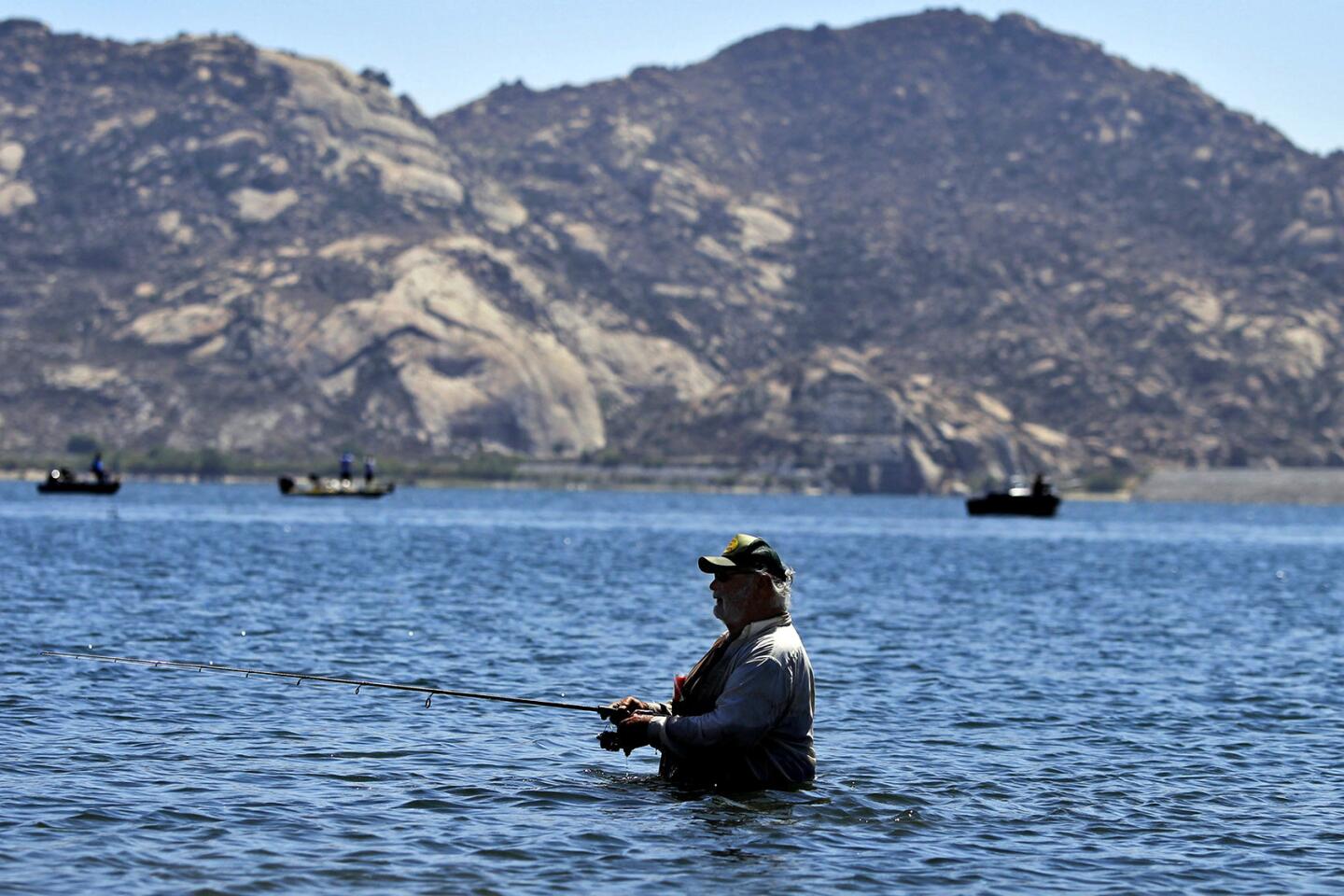
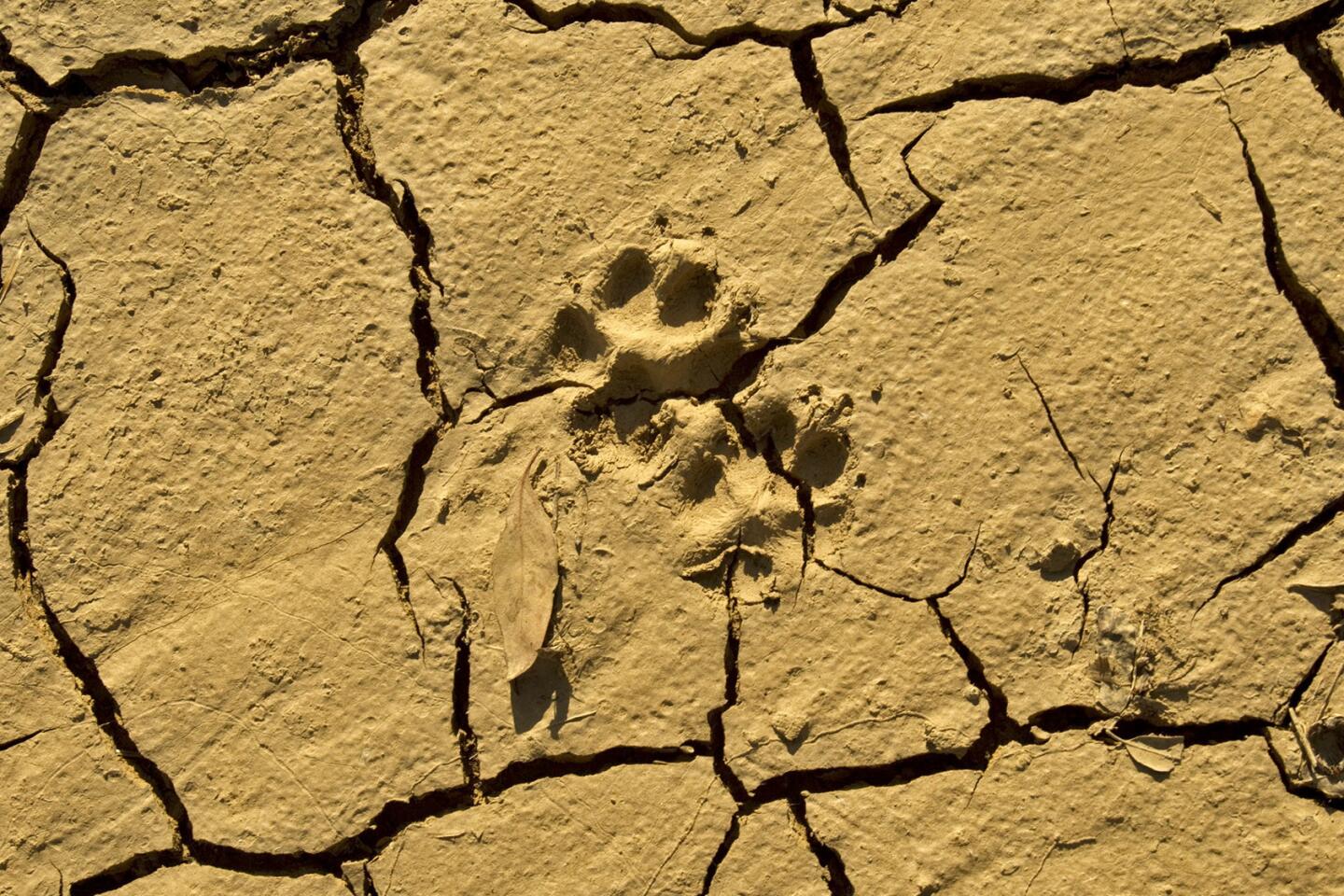
An animal’s footprint is molded into dry, cracked earth in a dry riverbed near a Castaic Lake bridge. Extremely low levels of water at sunrise at Castaic Lake and reveal the effects of the prolonged drought March 8, 2014.
(Allen J. Schaben / Los Angeles Times)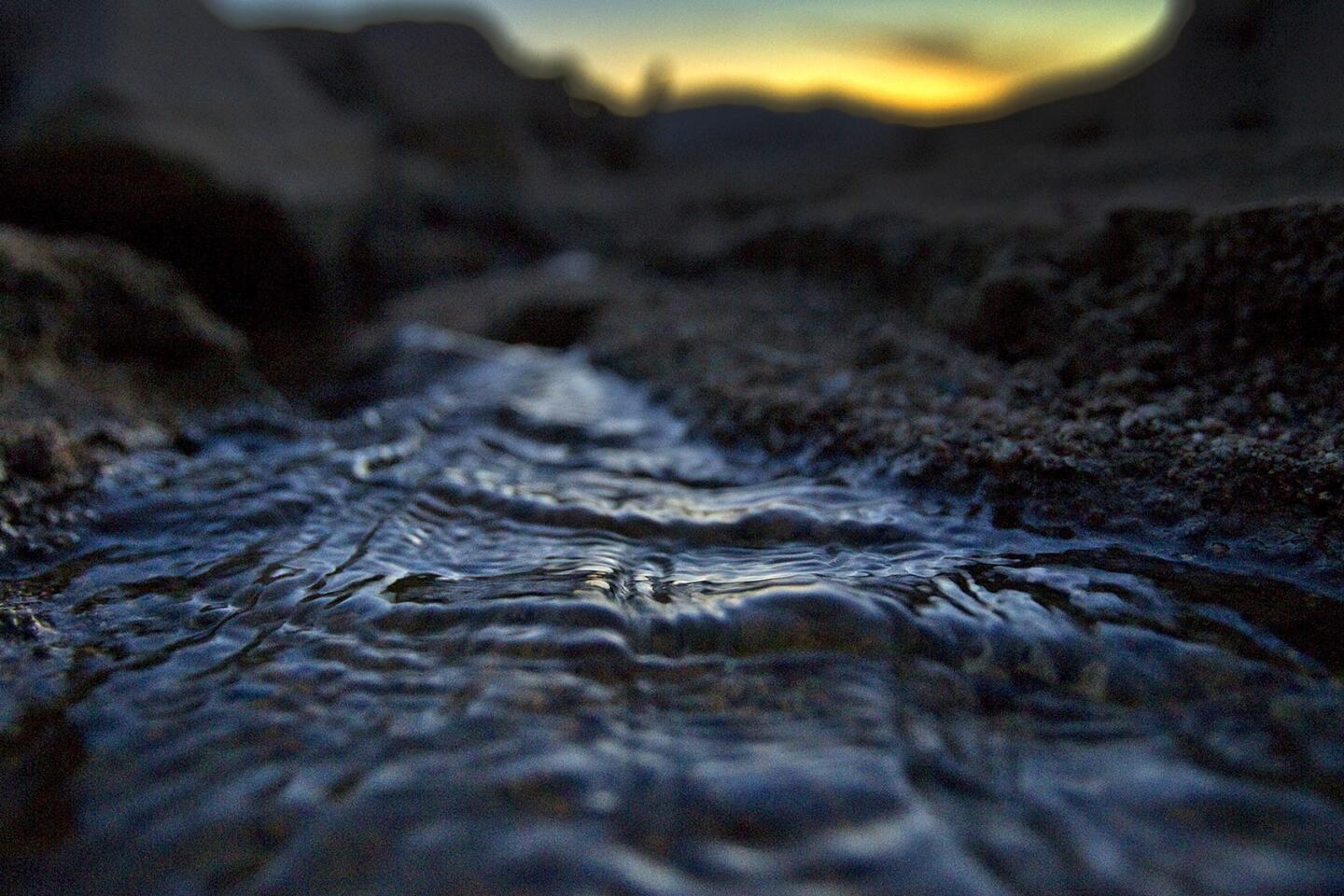
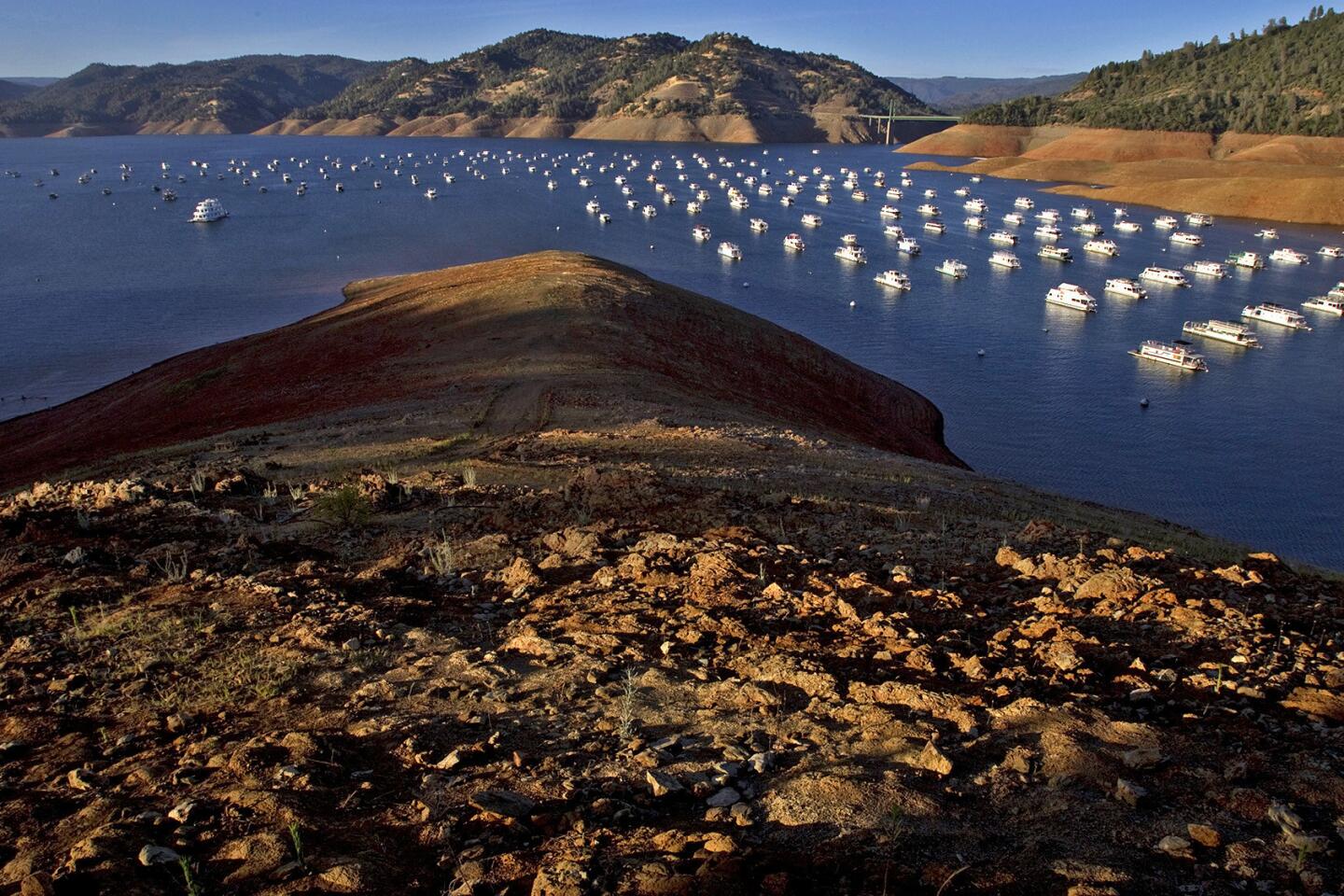
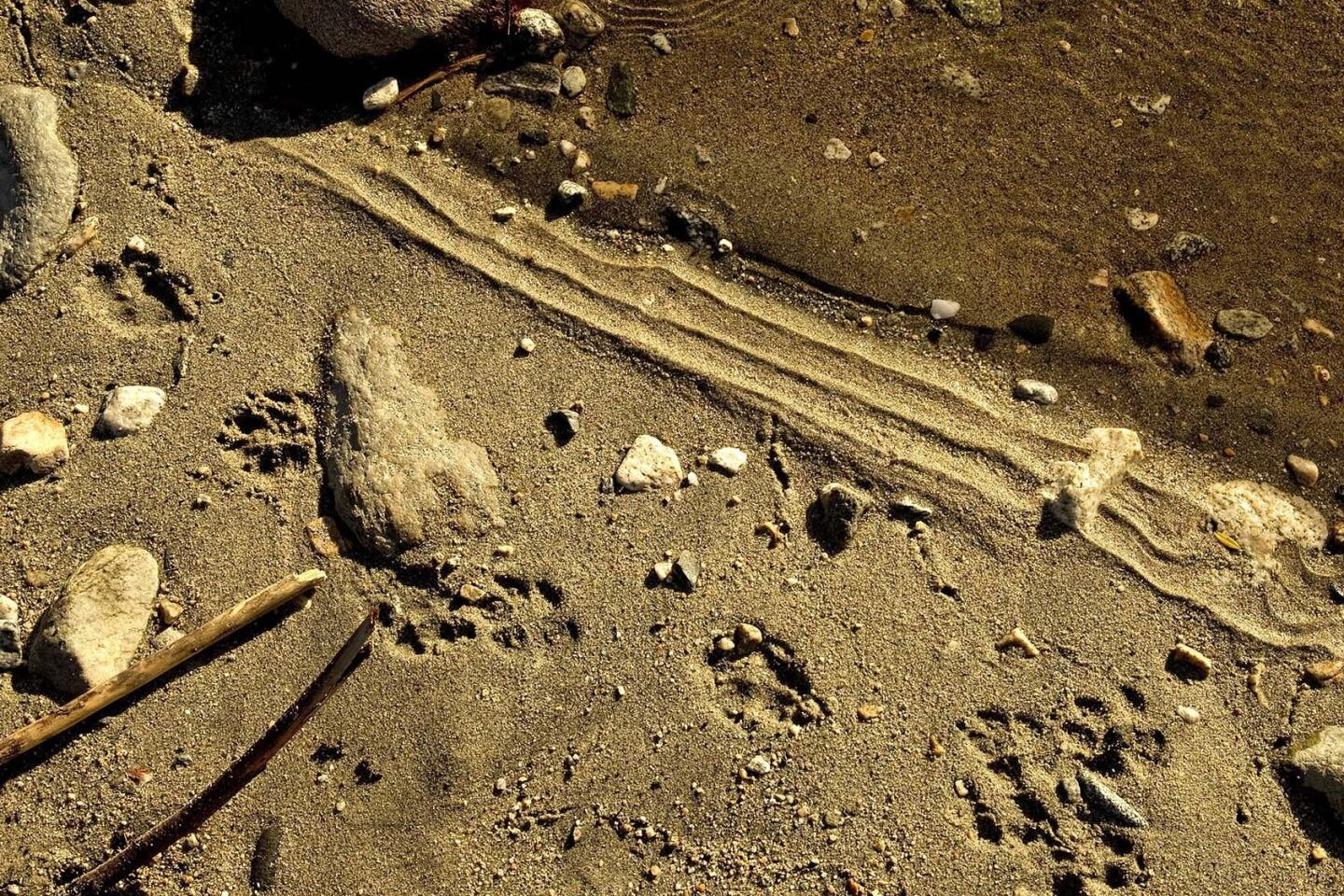
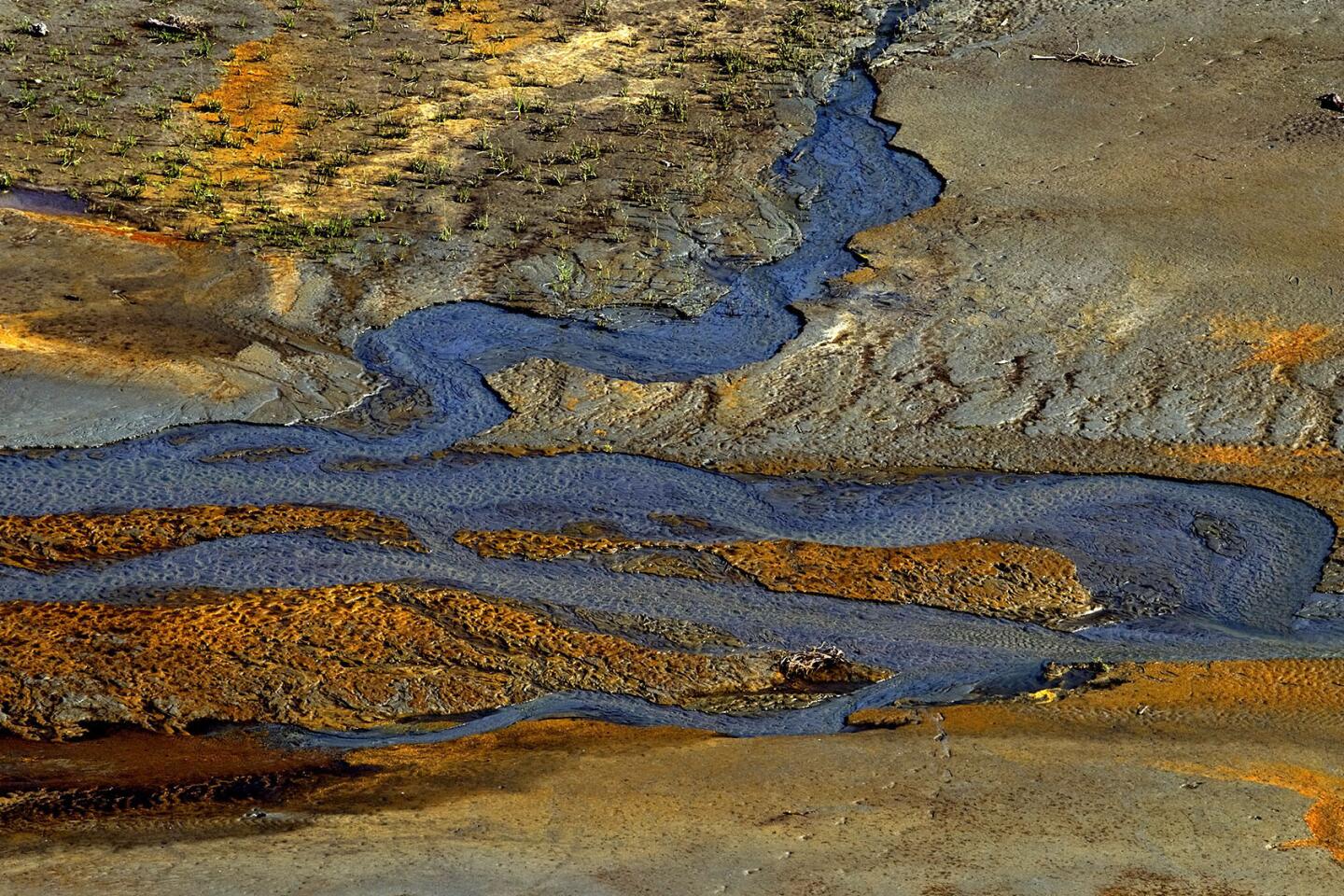
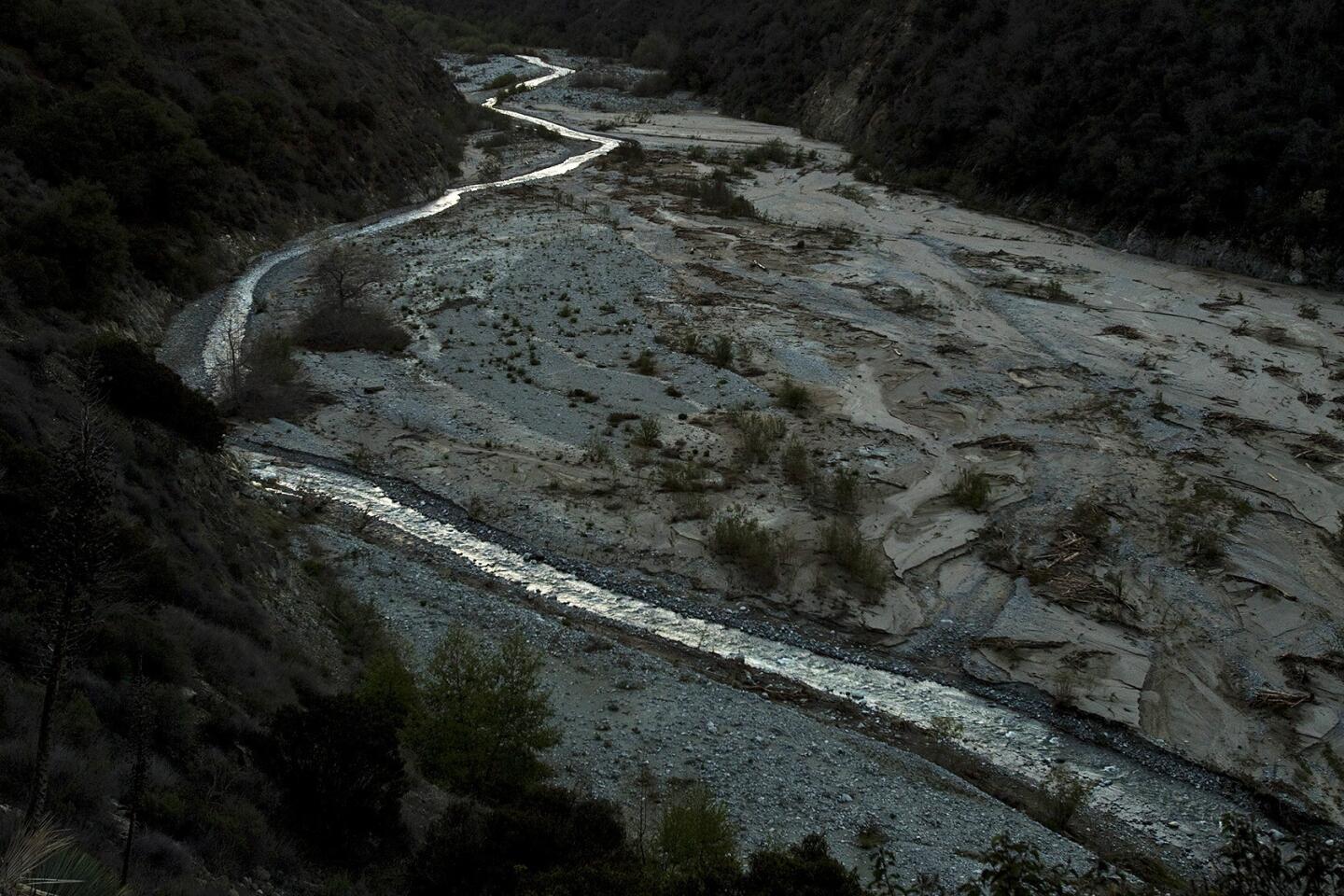
A pre-dawn glow illuminates a narrow, shallow meandering stream flowing in San Gabriel River’s East Fork in the Angeles National Forest, which reveal the effects of the prolonged drought March 12, 2014.
(Allen J. Schaben / Los Angeles Times)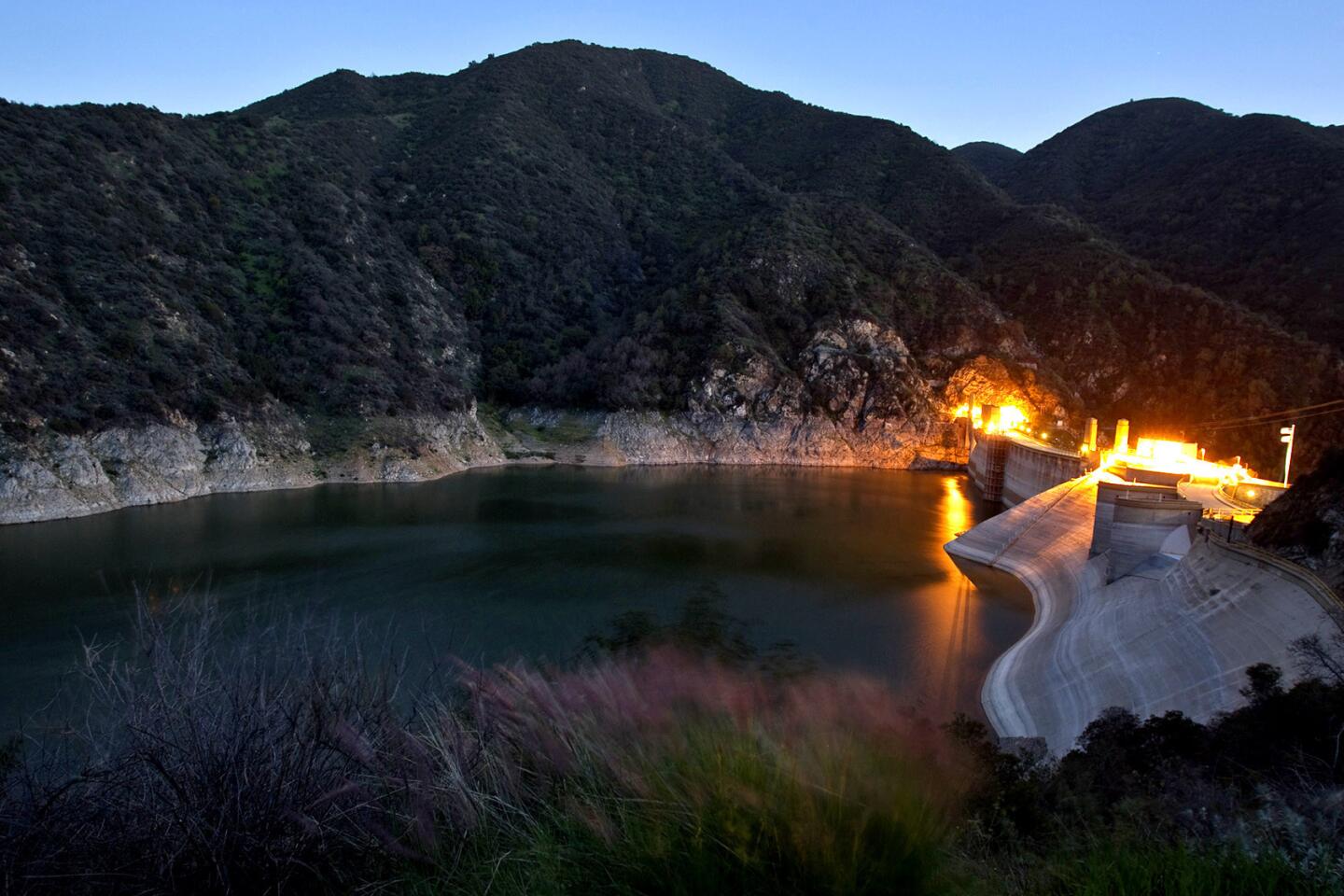
A white rocky ring reveals low levels of water in the Morris Dam, just north of Azusa in the Angeles National Forest, reflecting the effects of the prolonged drought March 12, 2014.
(Allen J. Schaben / Los Angeles Times)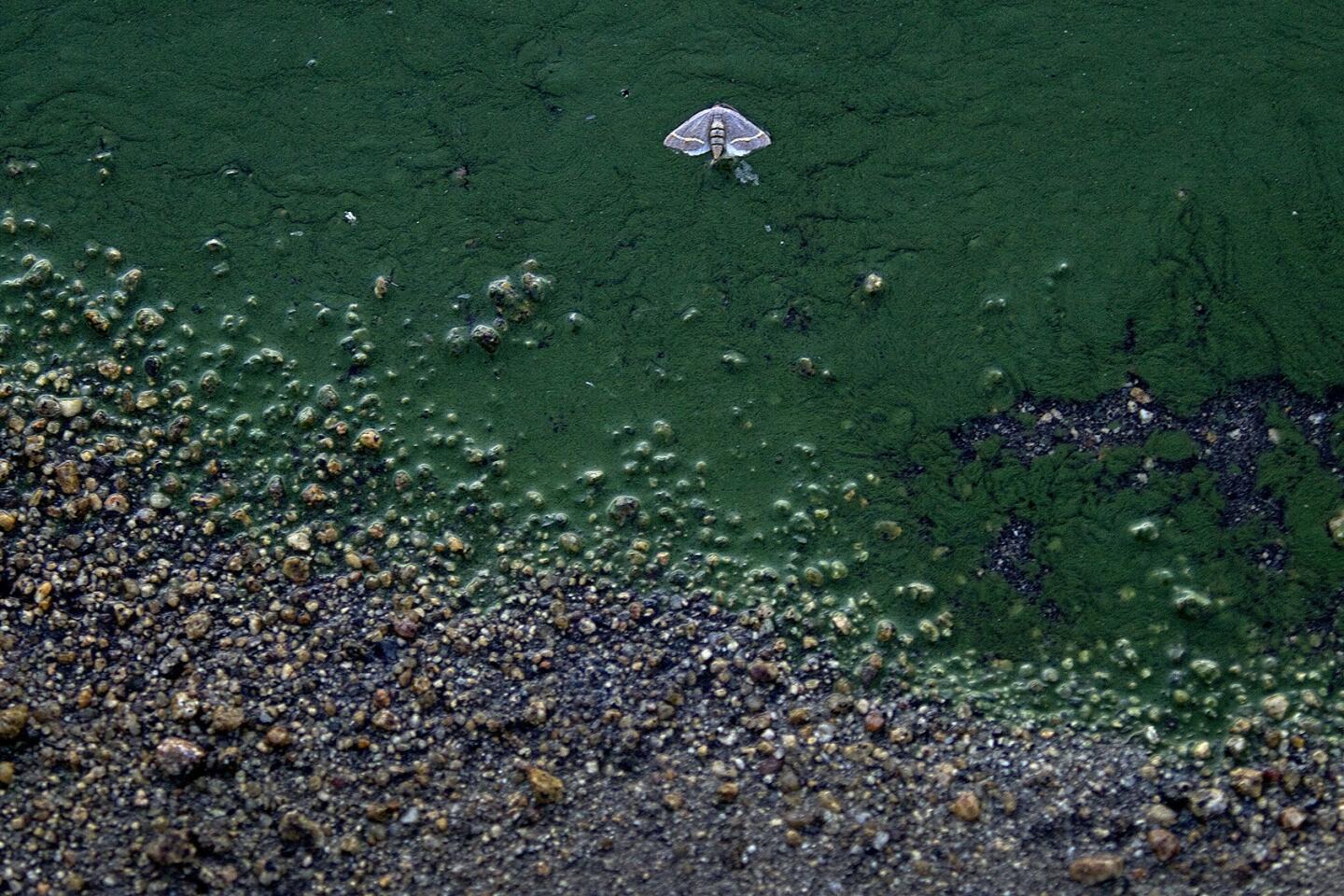
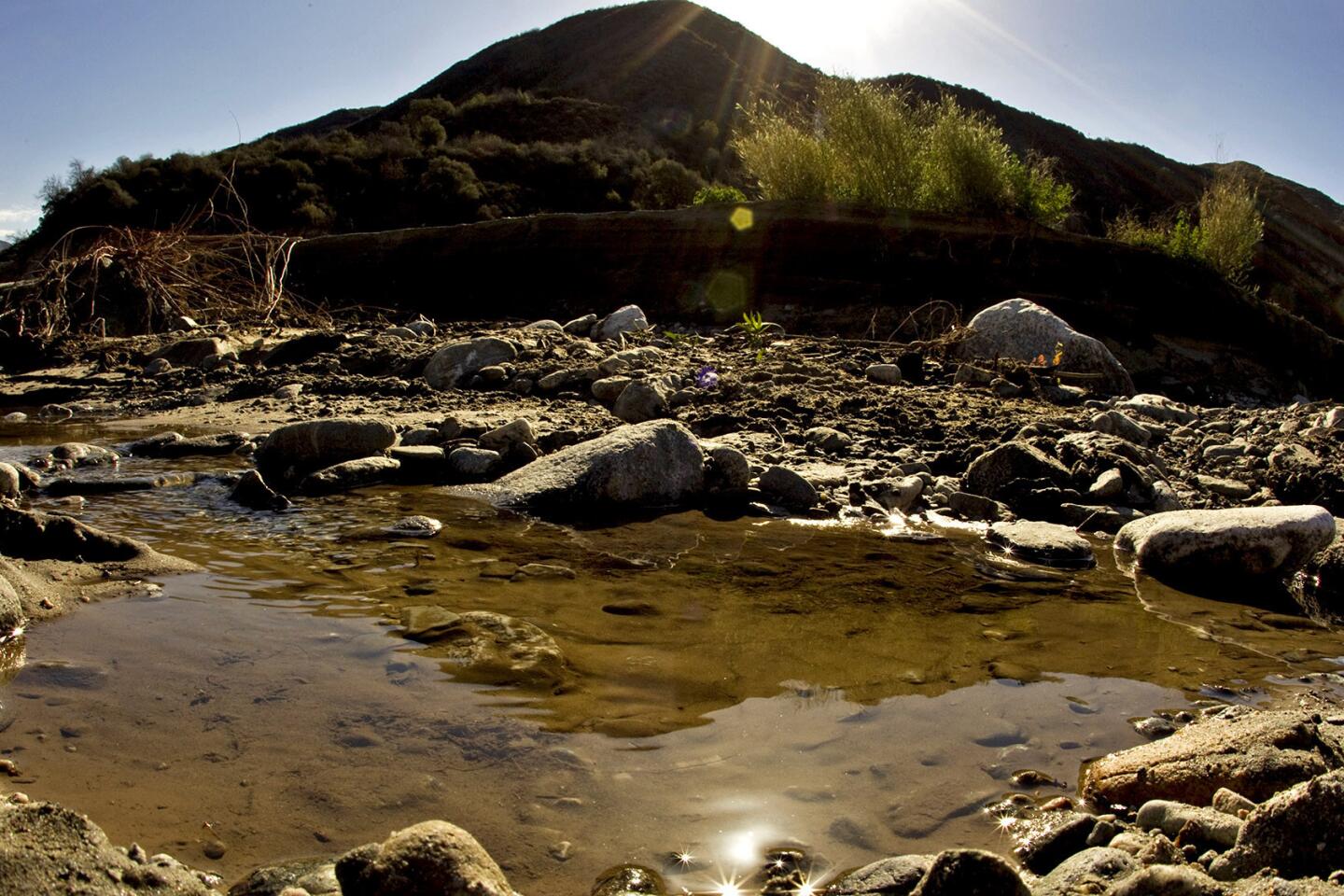
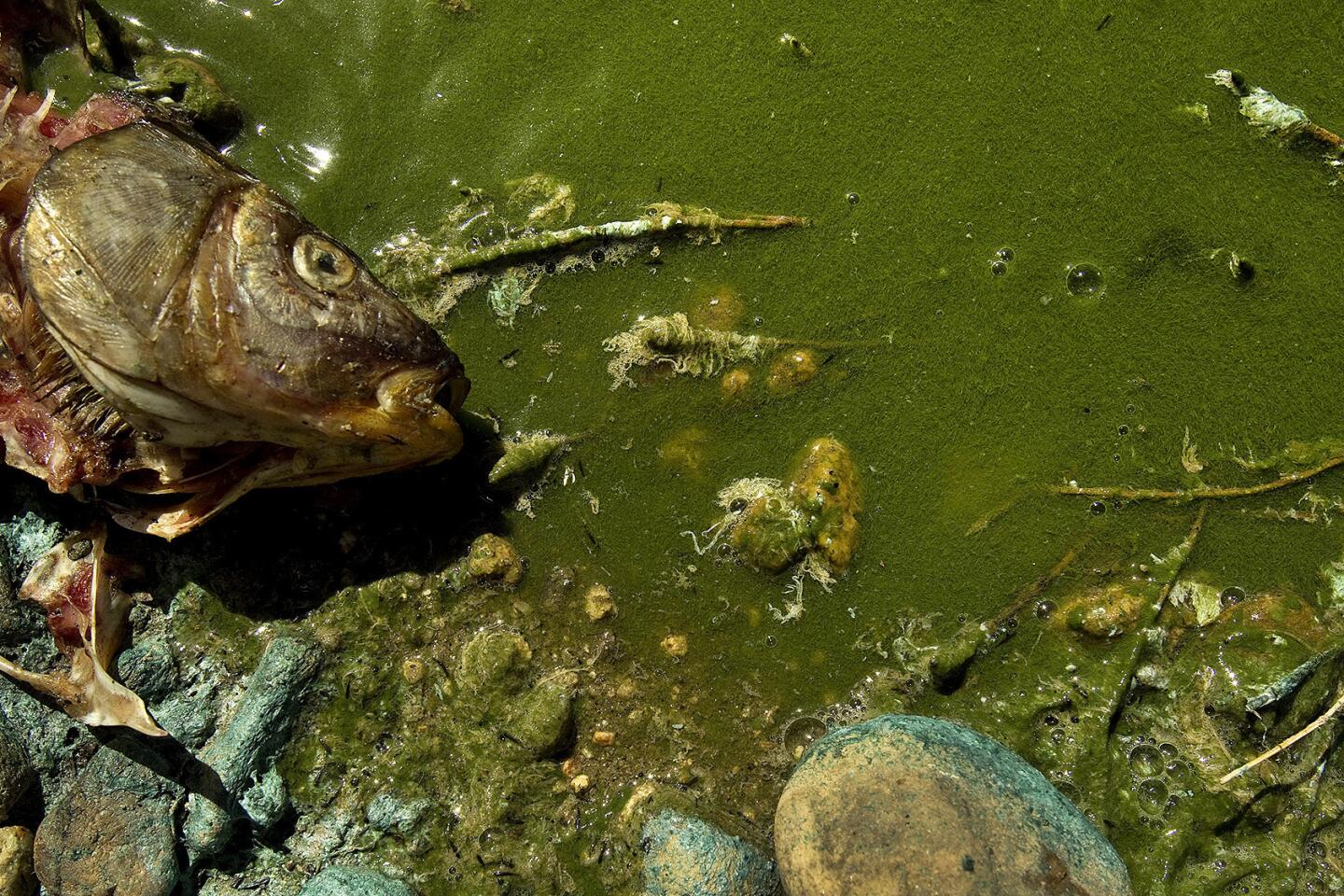
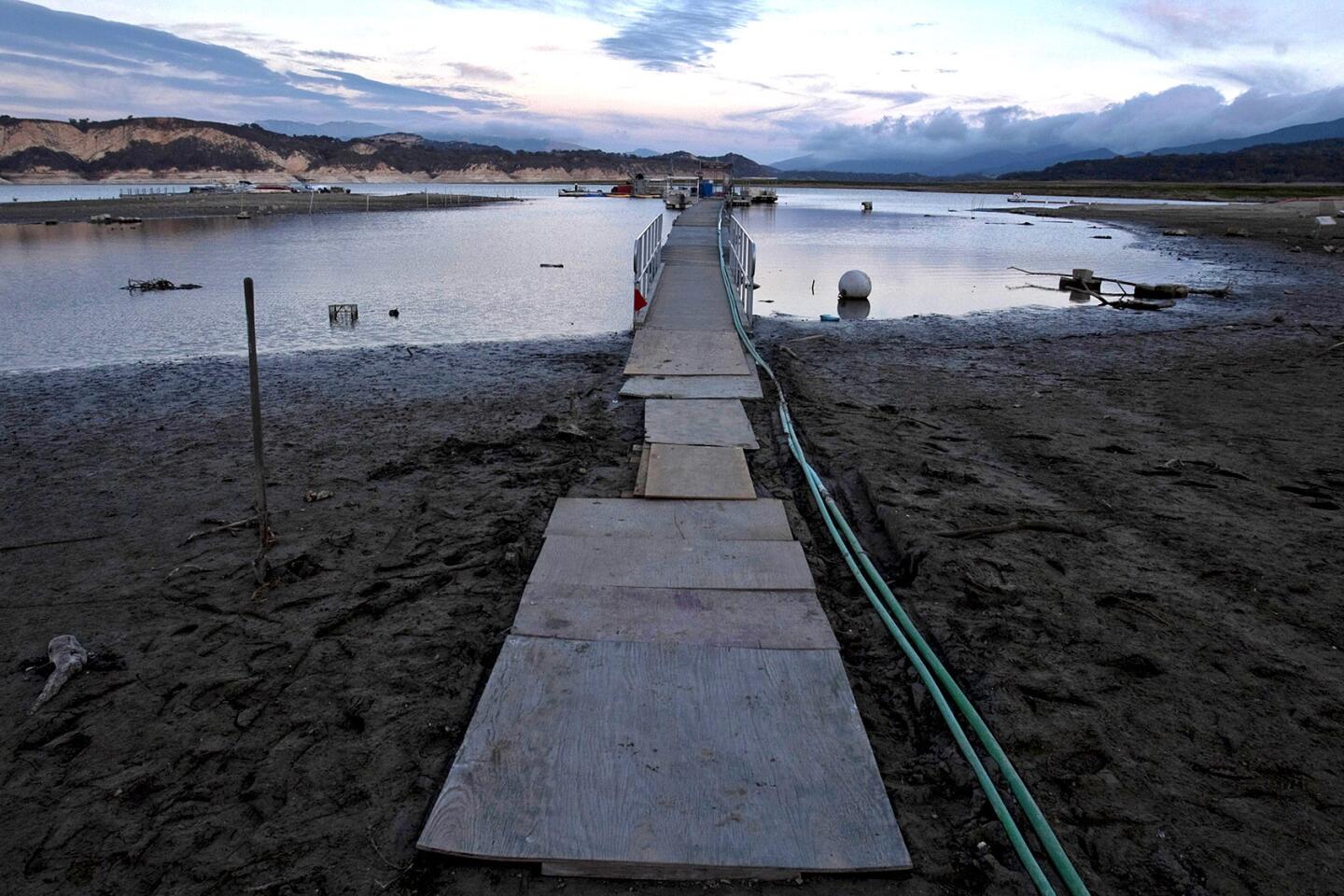
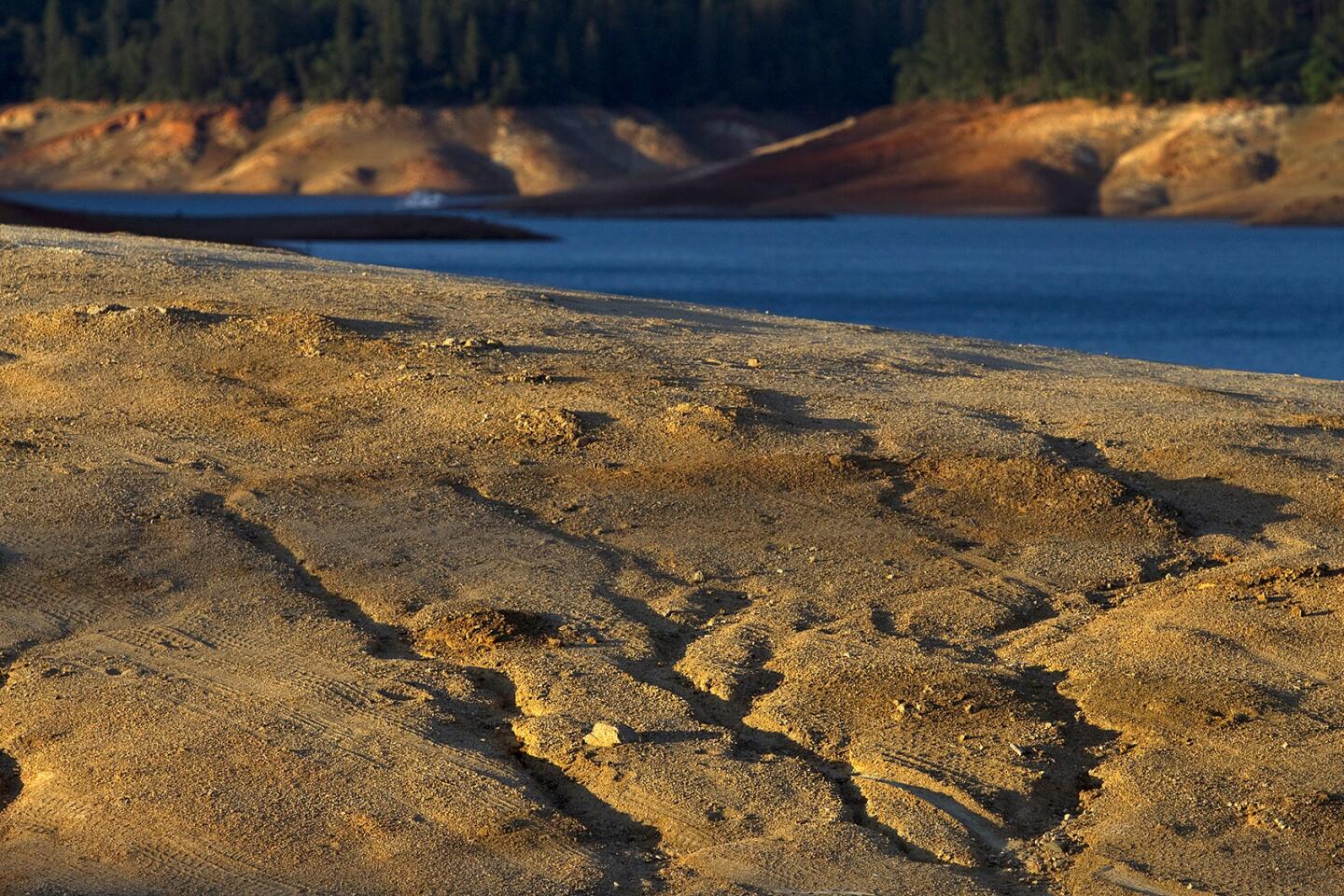
Dry ruts in a island reveal where the water level used to be at Lake Shasta due to serious drought conditions. Lake Shasta is at 31% of capacity due to the ongoing drought and is likely to get worse.
(Allen J. Schaben / Los Angeles Times)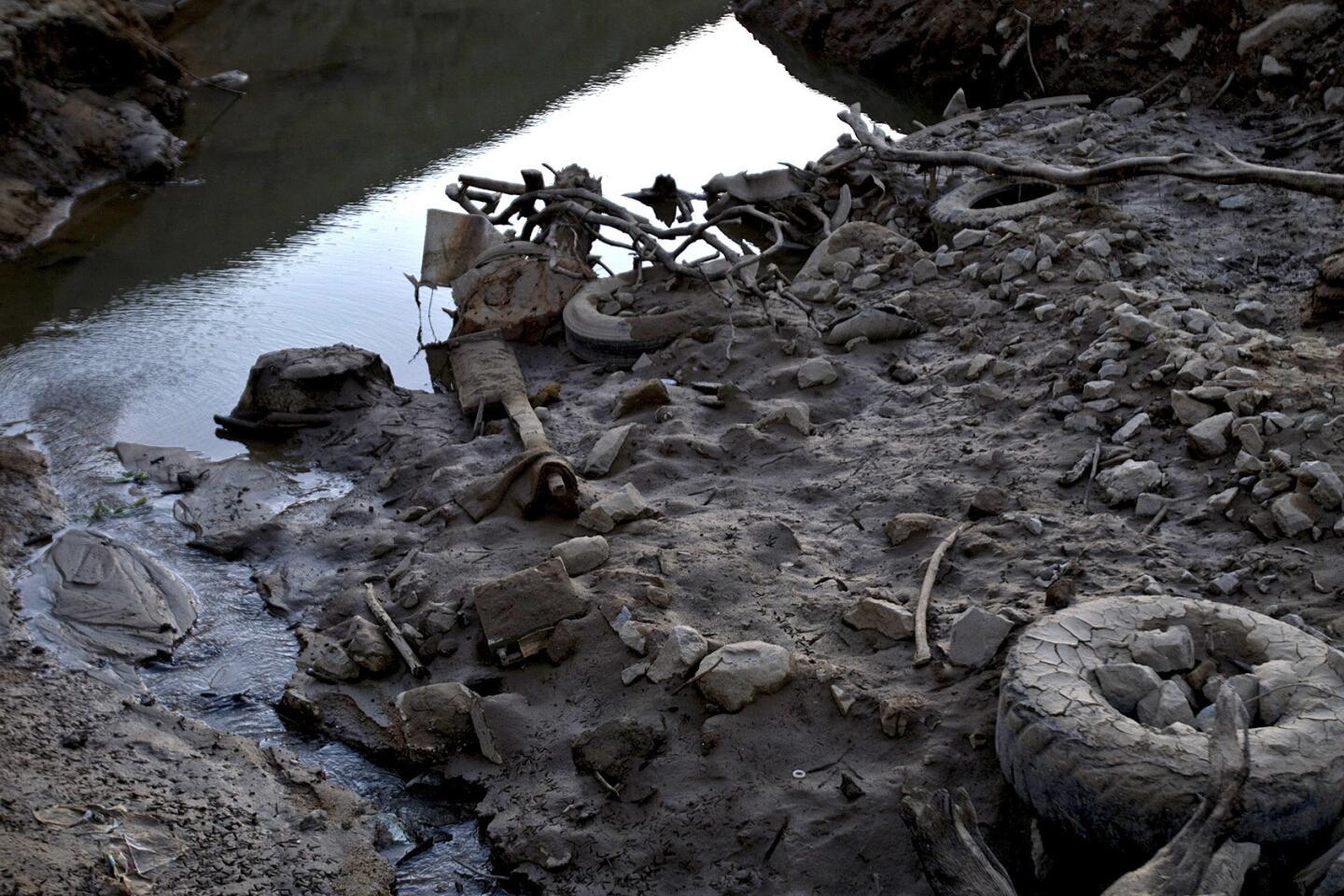
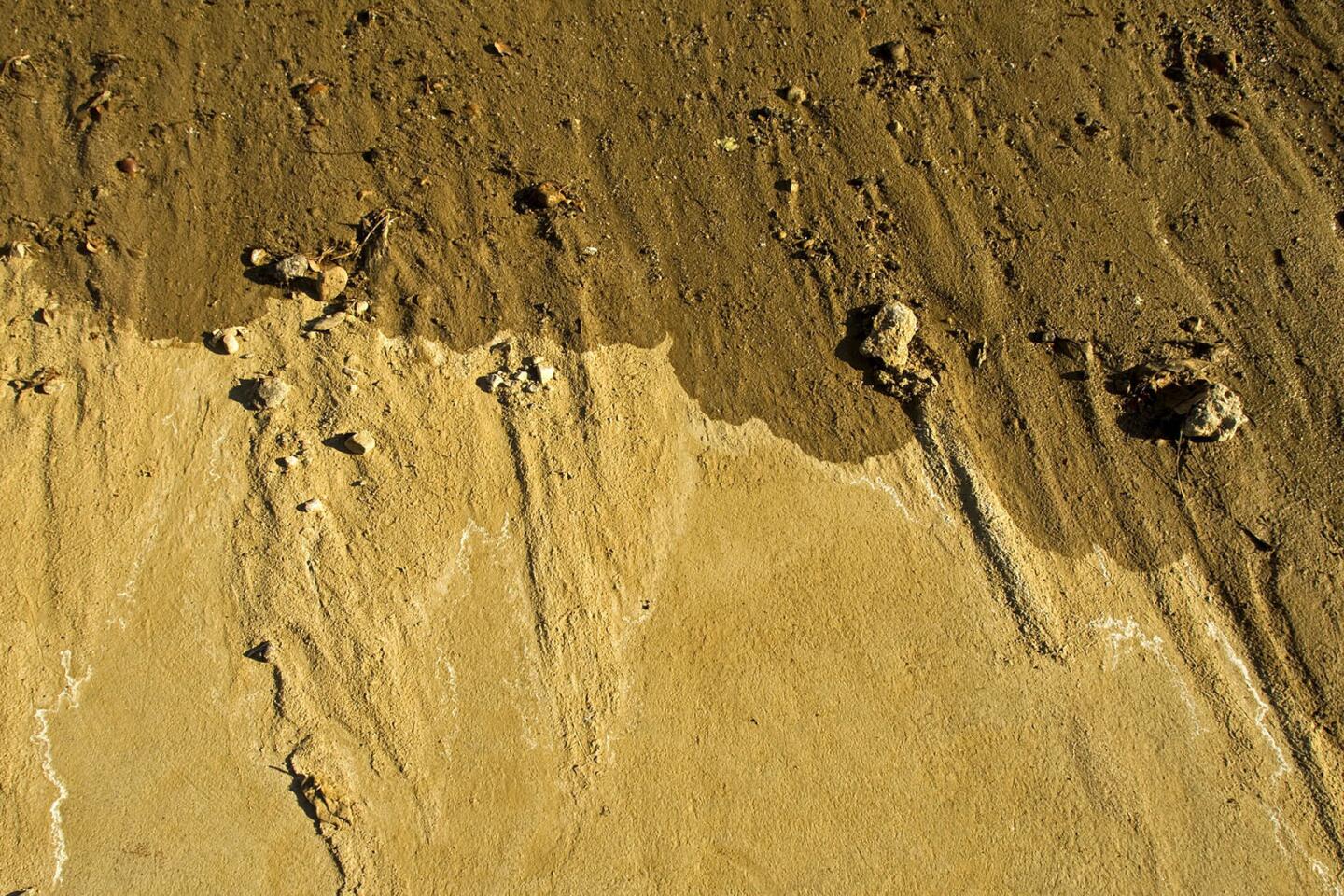
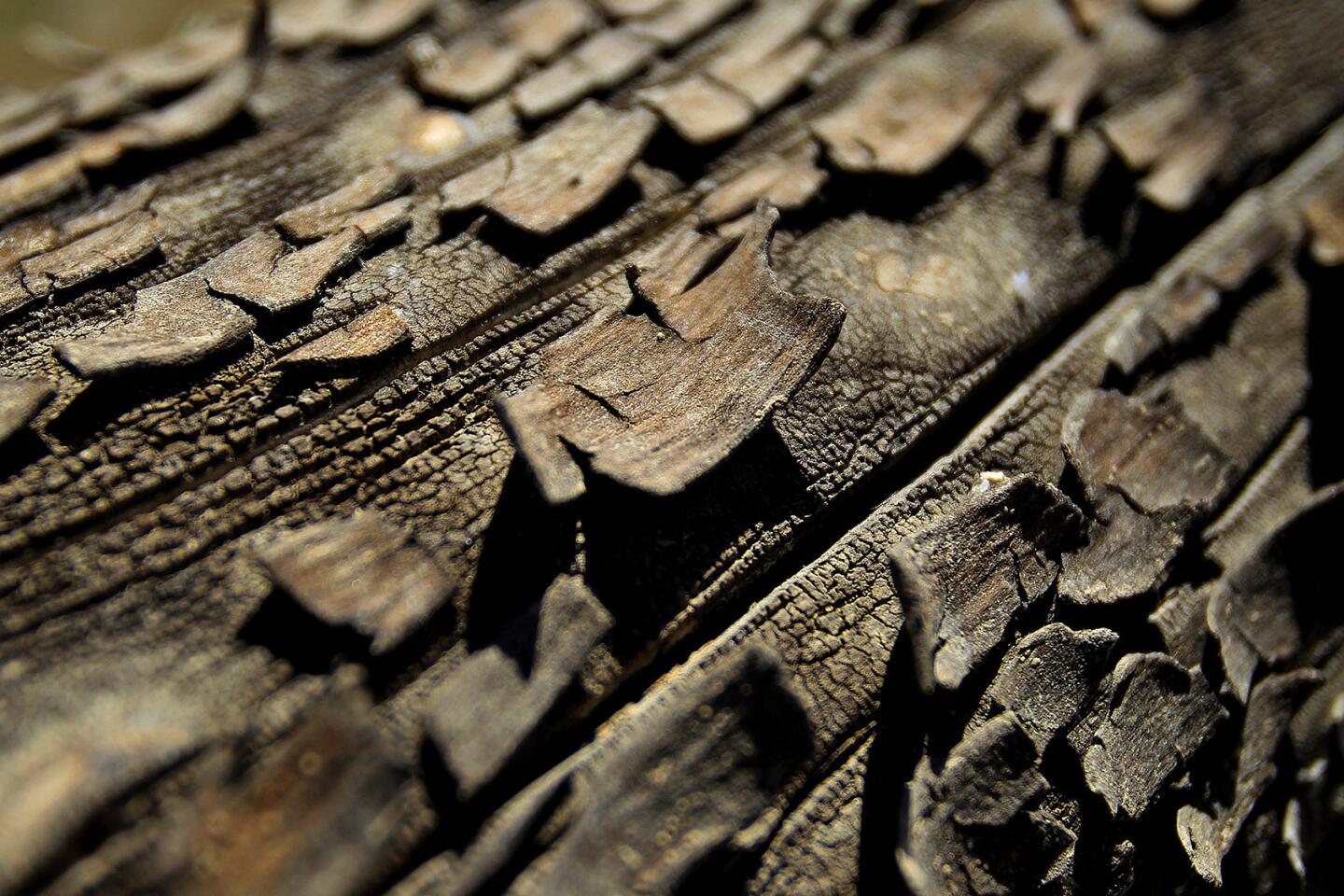
Severe drought conditions are evident as dried bark peels in the hot sun where water levels are down 160 feet from the high water mark at Lake Oroville June 21, 2014. Officials say Lake Oroville is at 43% capacity and likely to get worse, but is not as bad as the drought of 1976-77.
(Allen J. Schaben / Los Angeles Times)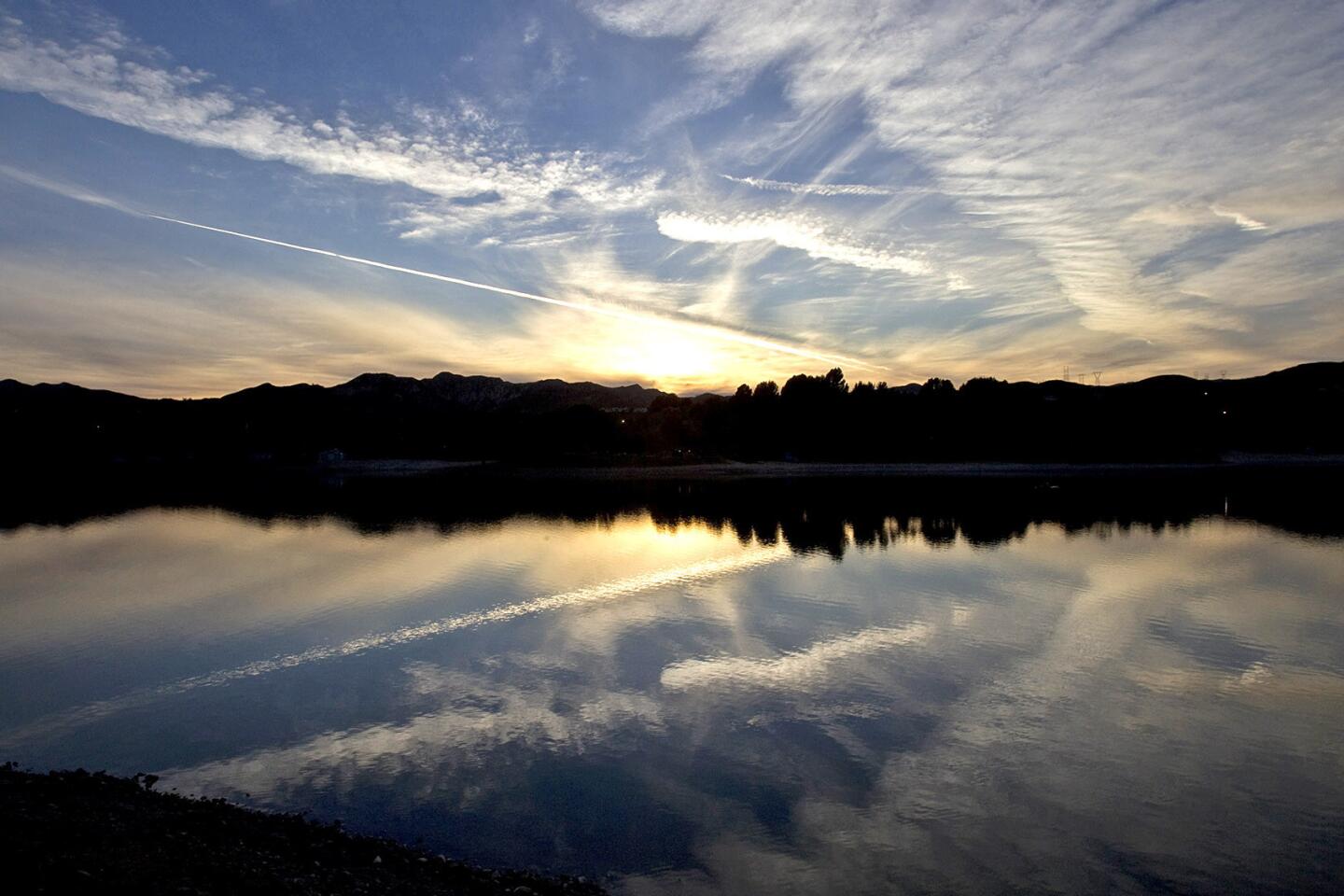
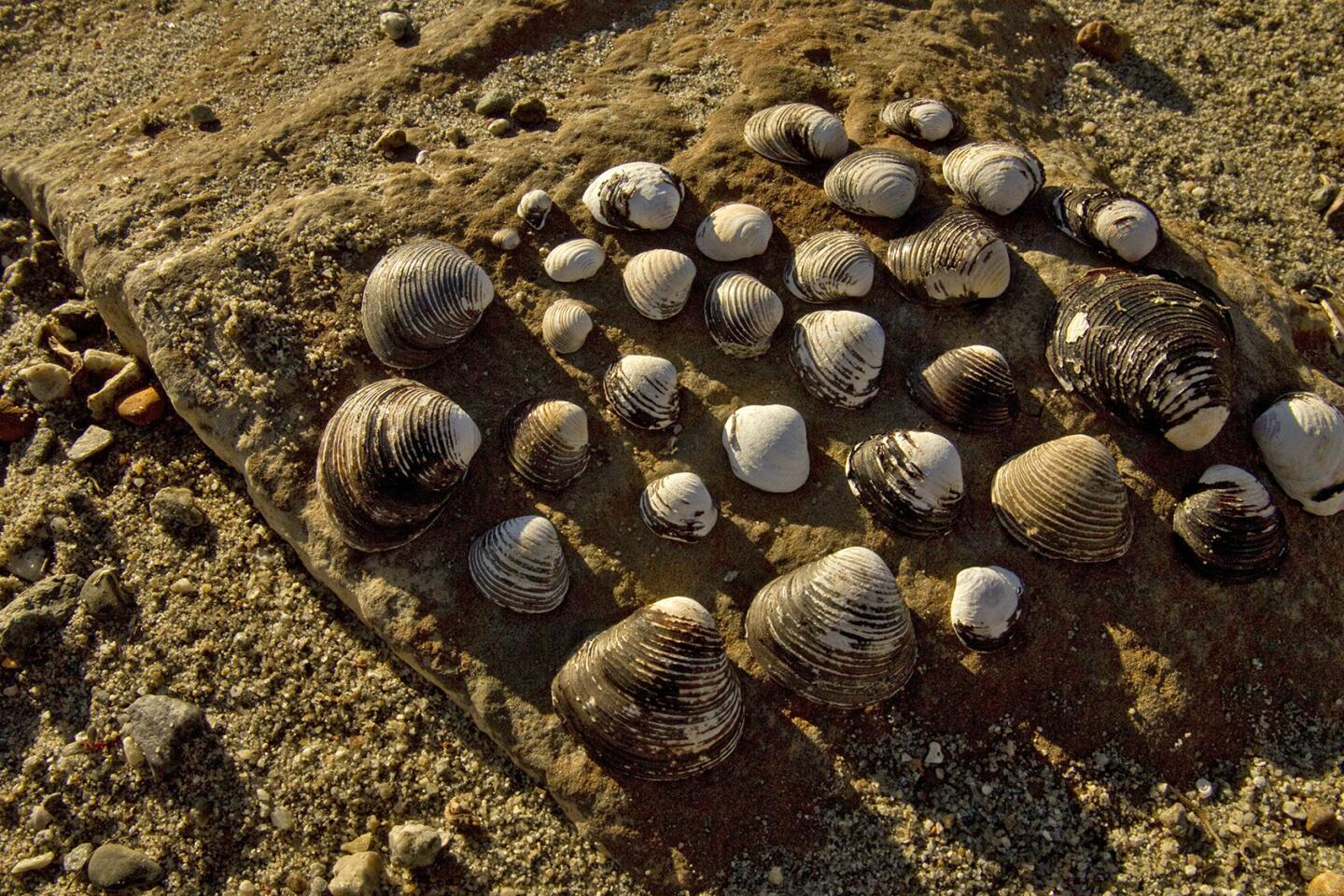
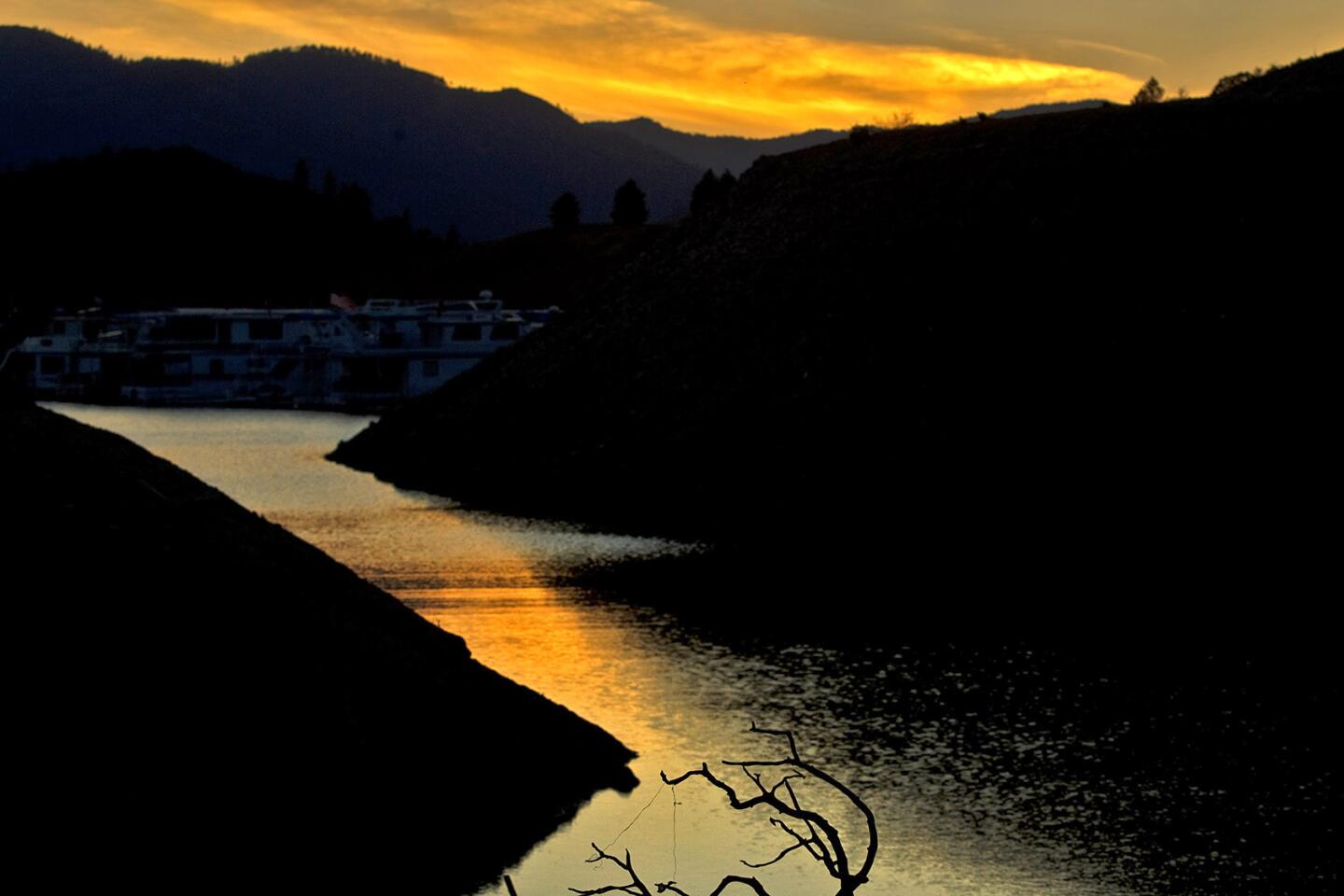
Fallen tree branches and a narrow body of water receding into Lake Shasta at dusk reveal signs of serious drought conditions June 22, 2014. Lake Shasta is at 37% of capacity due to the ongoing drought and is likely to get worse.
(Allen J. Schaben / Los Angeles Times)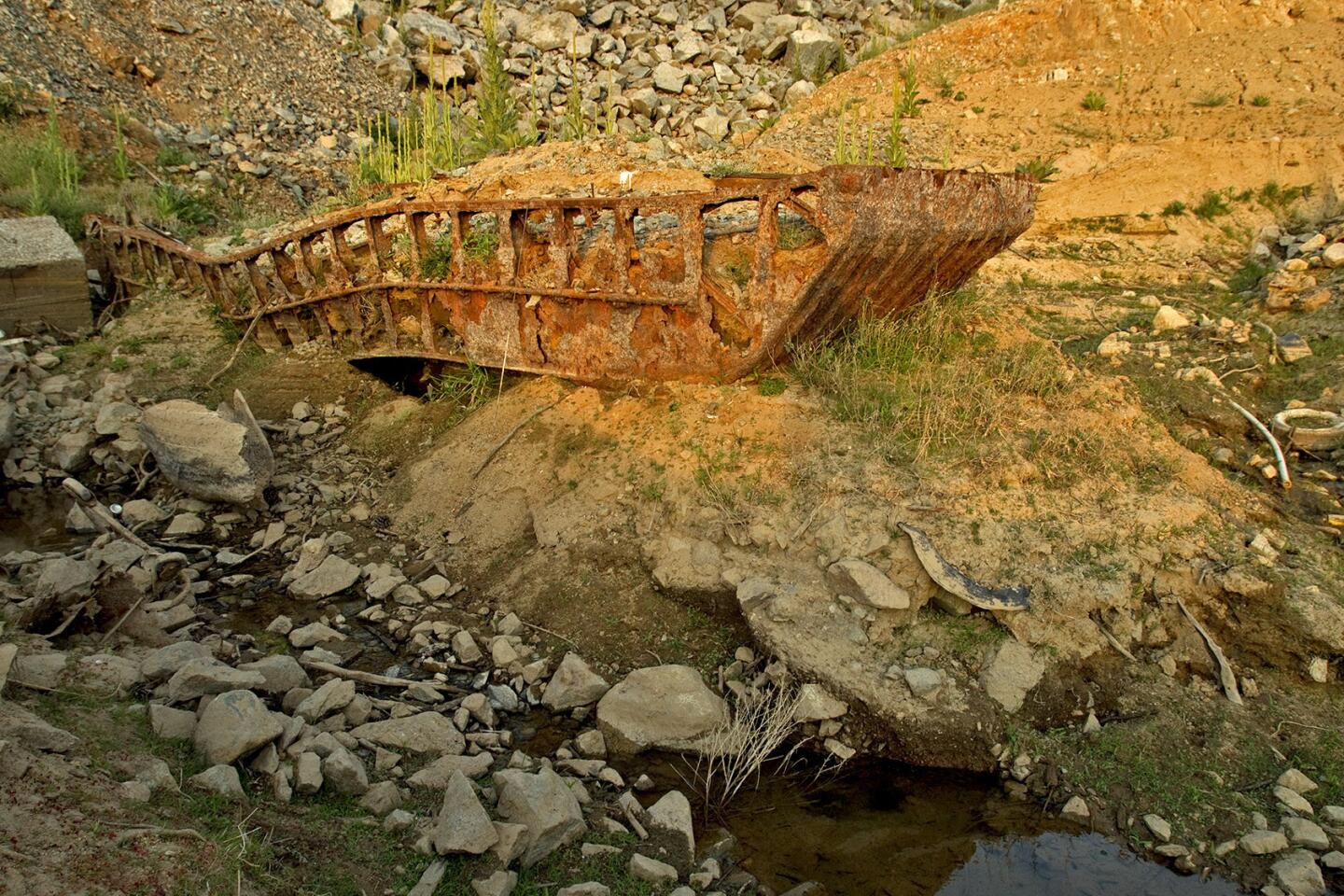
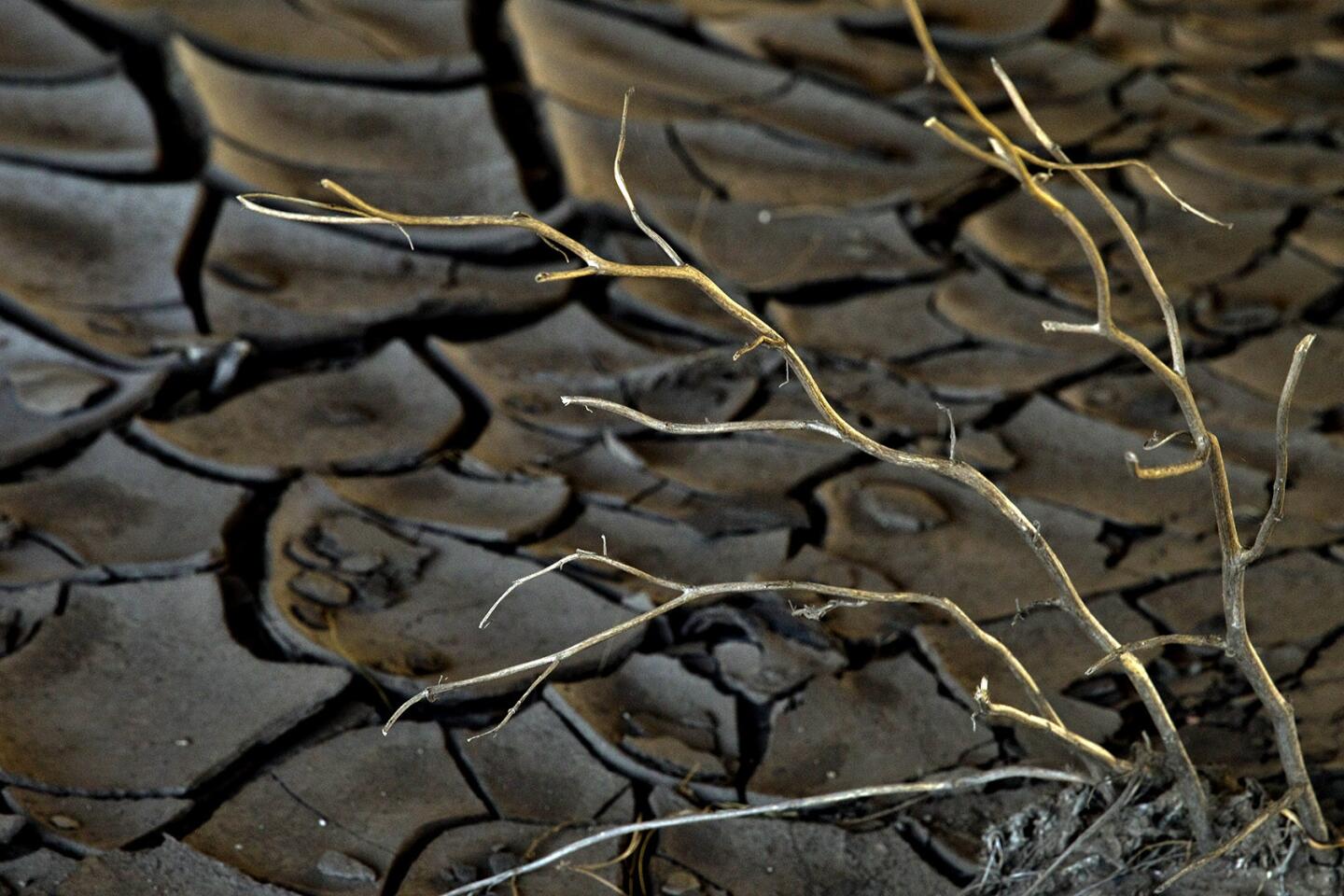
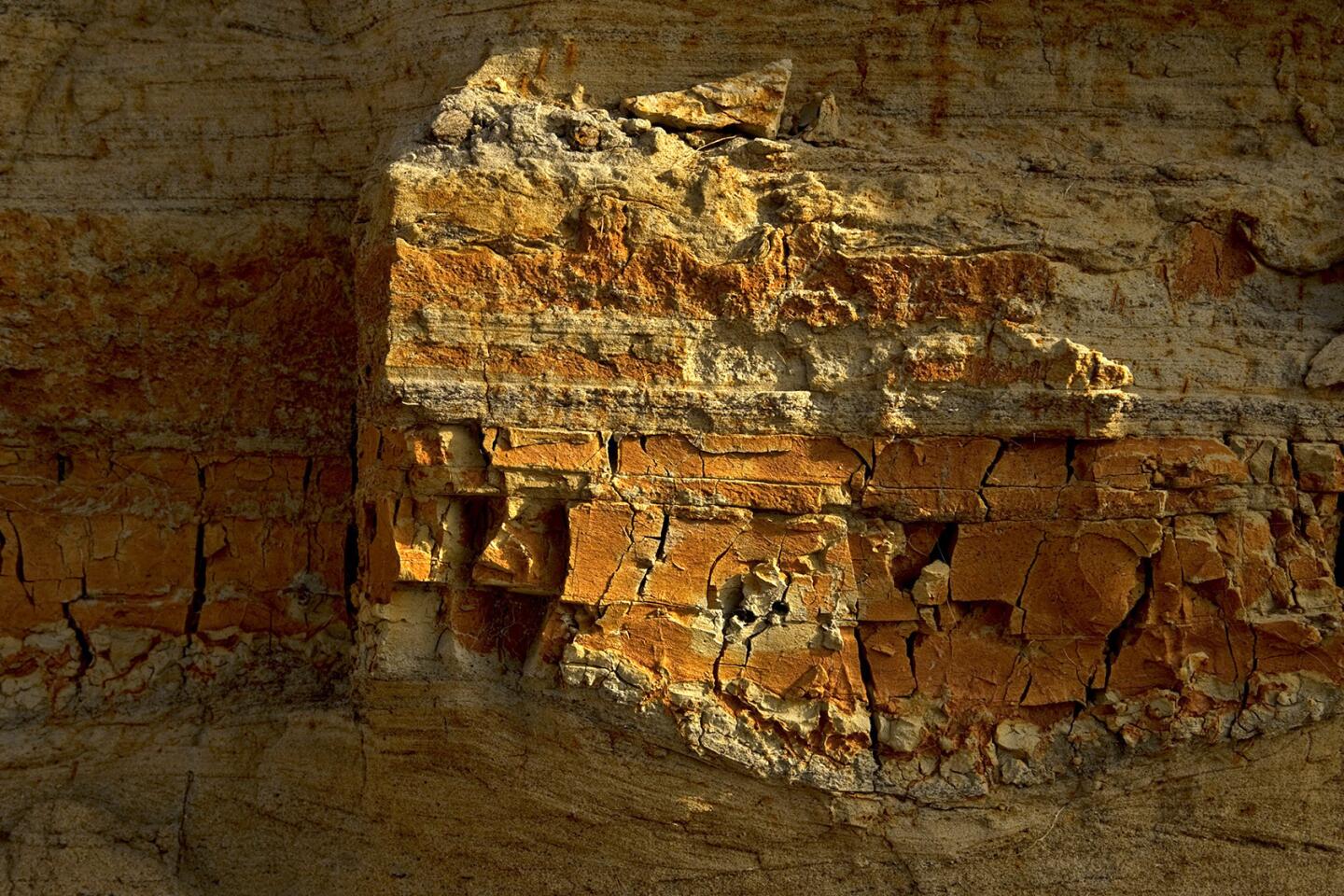
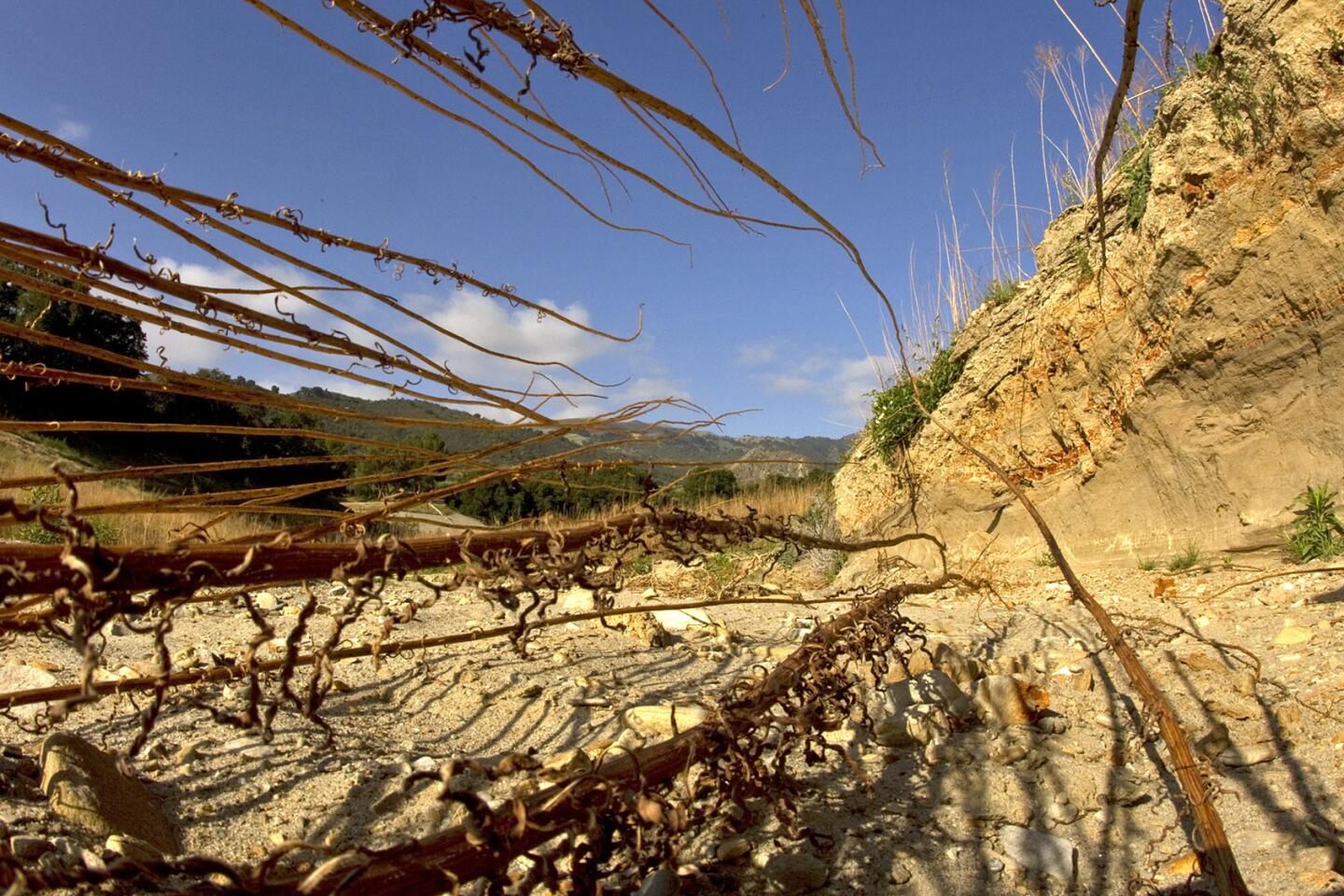
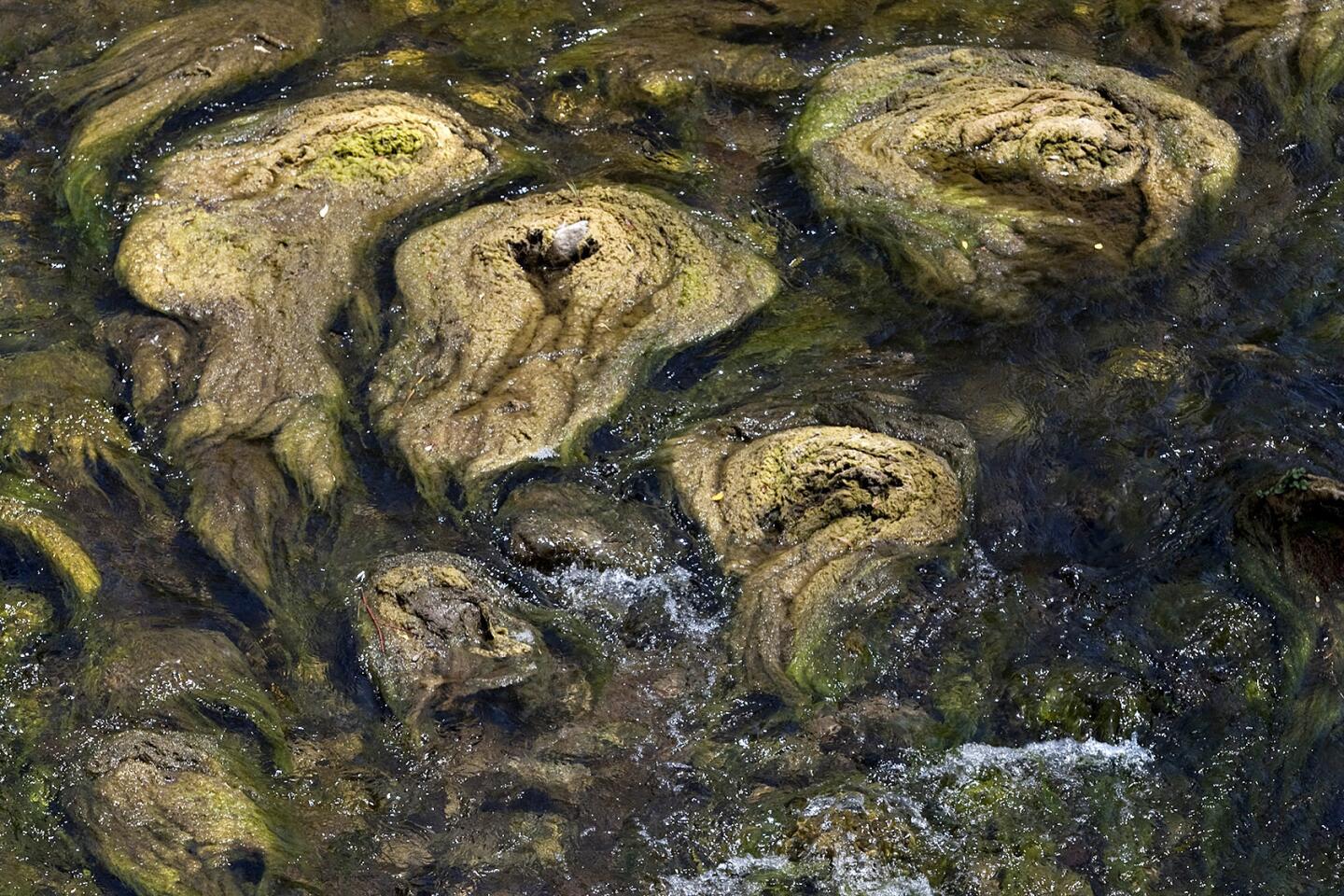
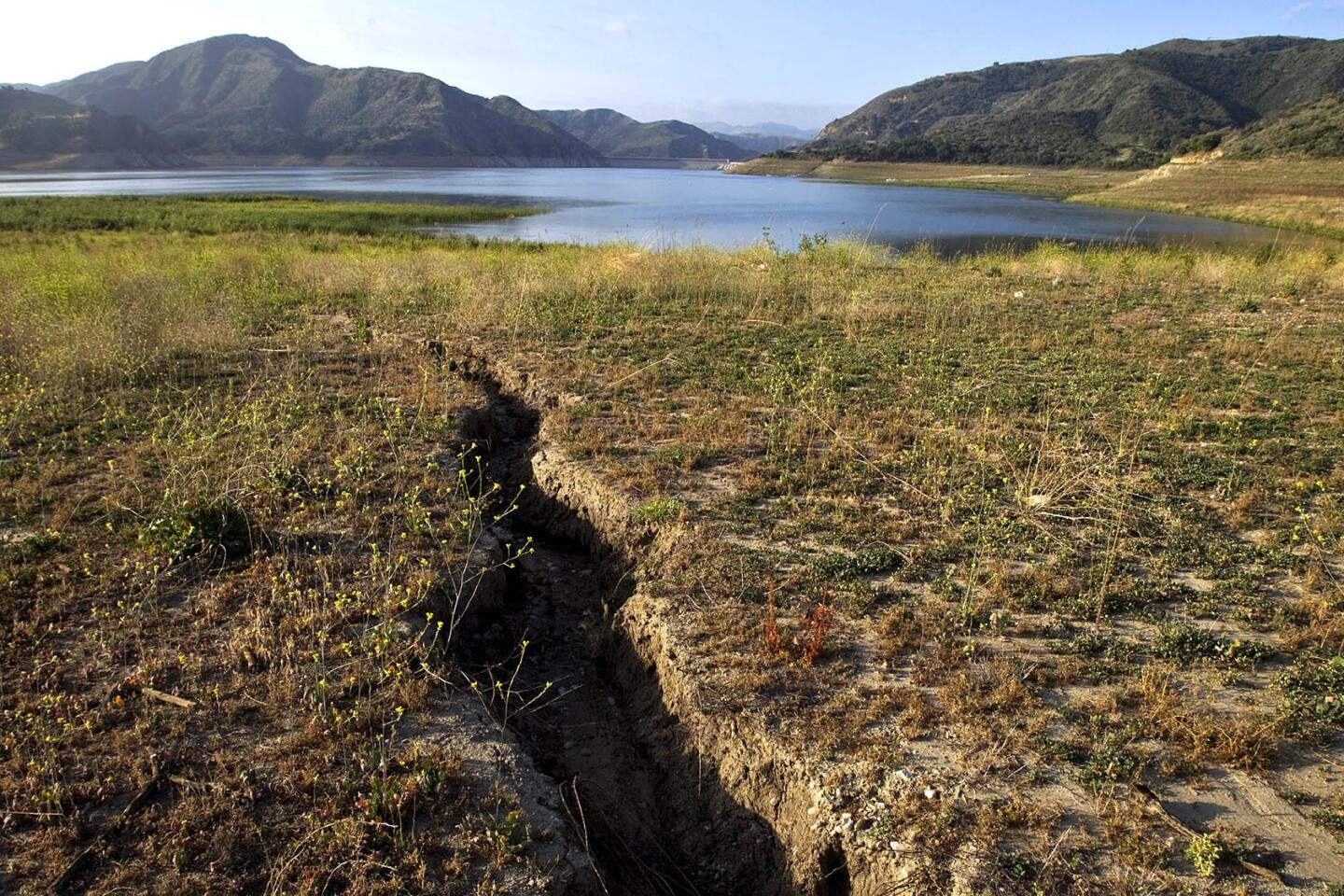
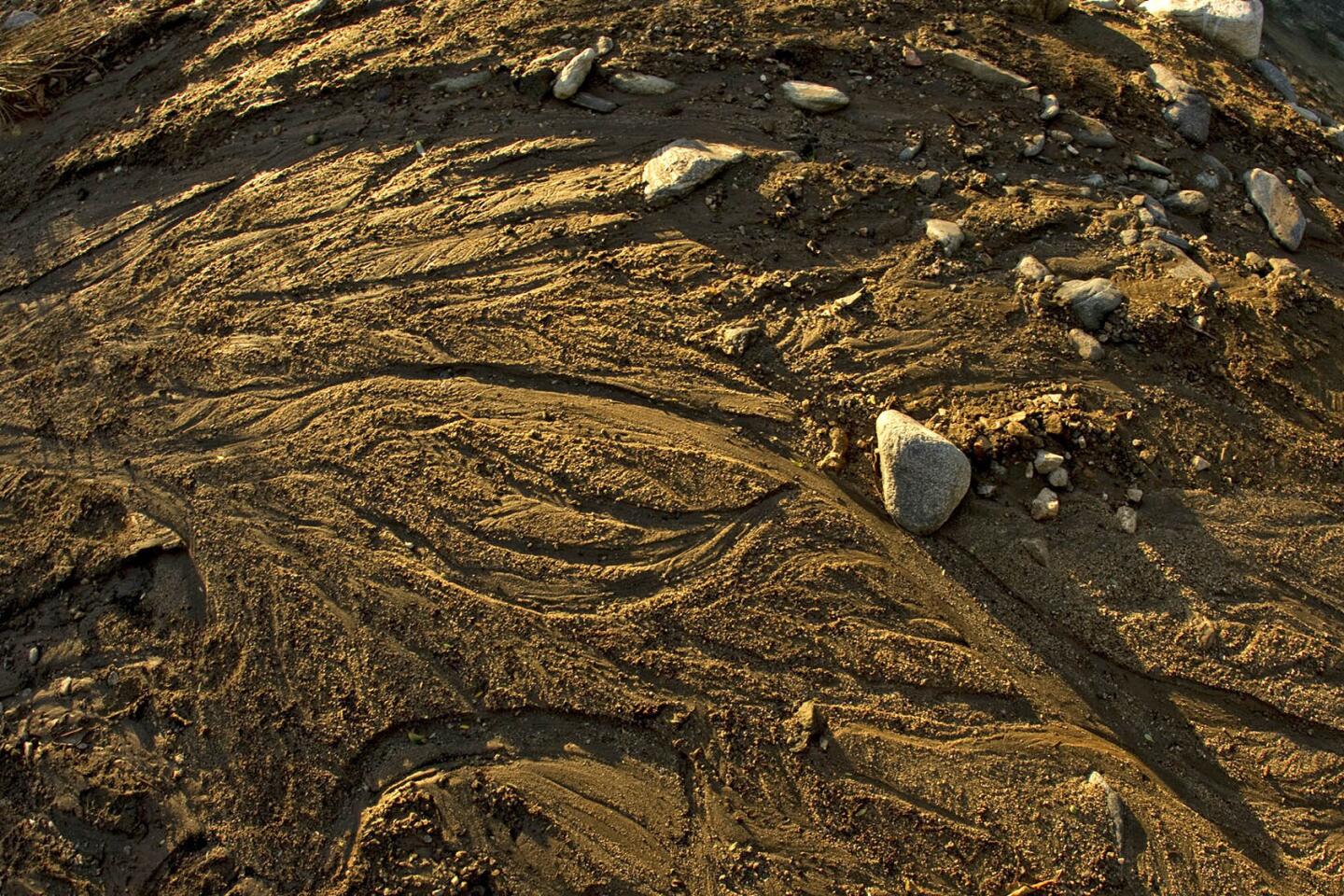
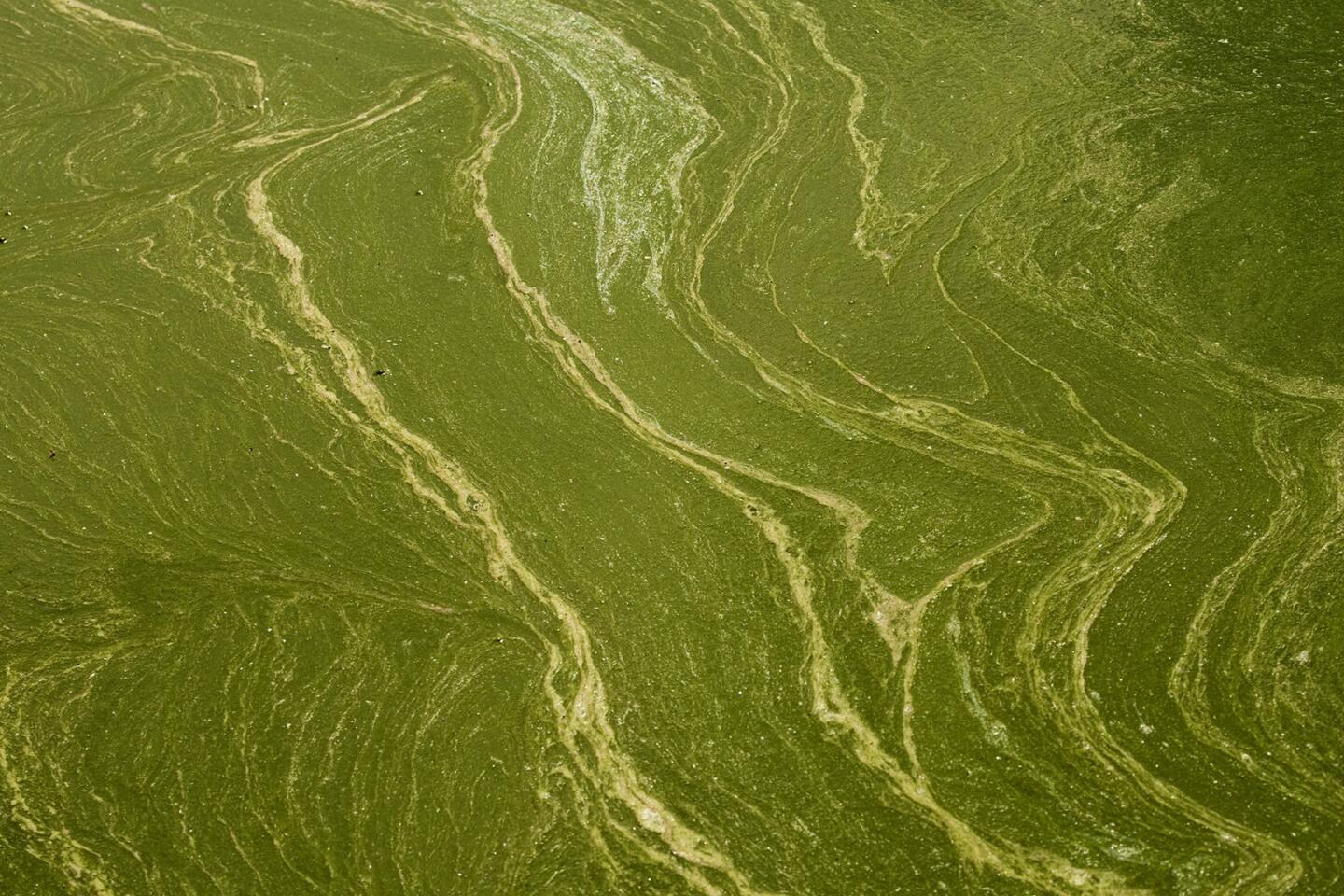
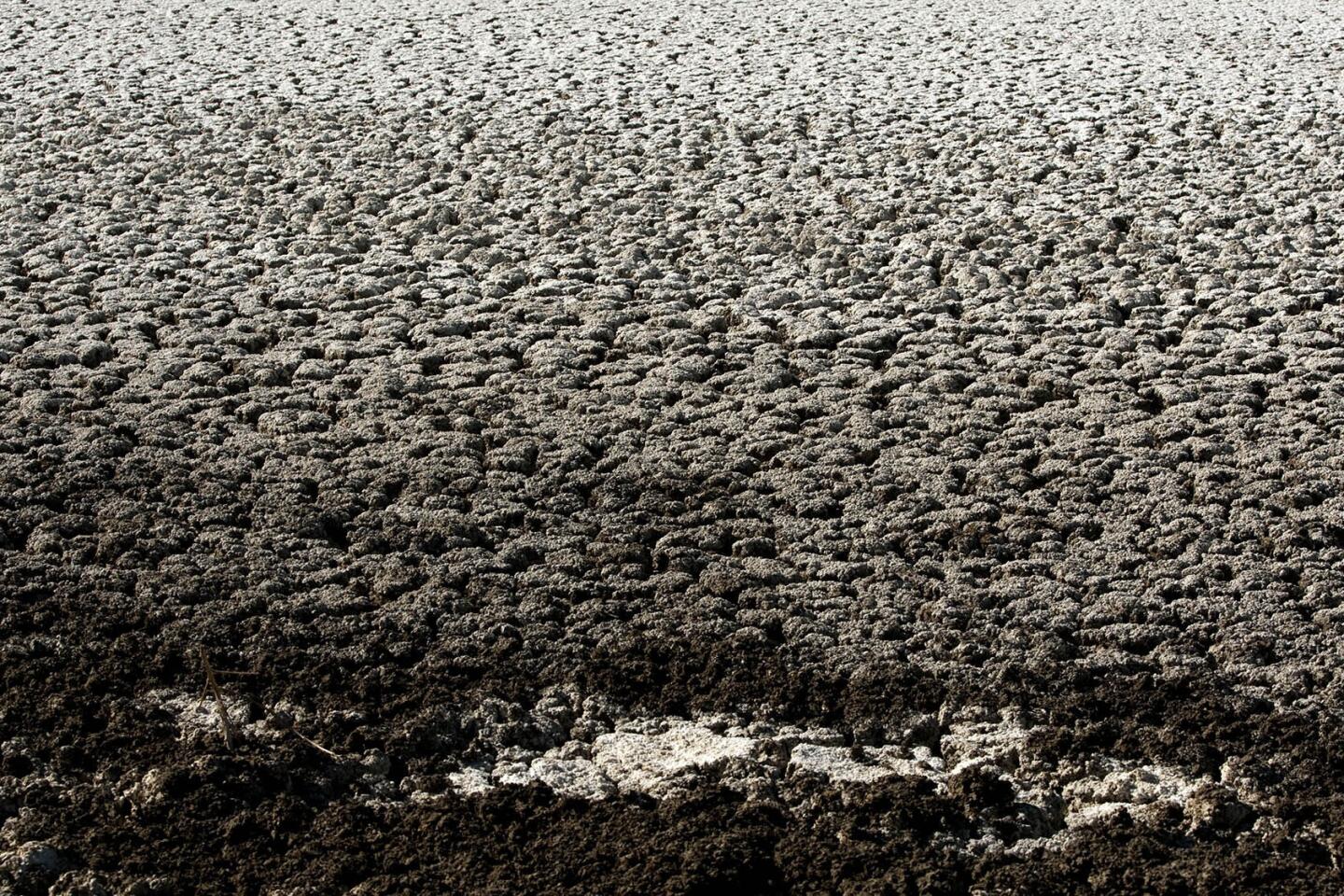
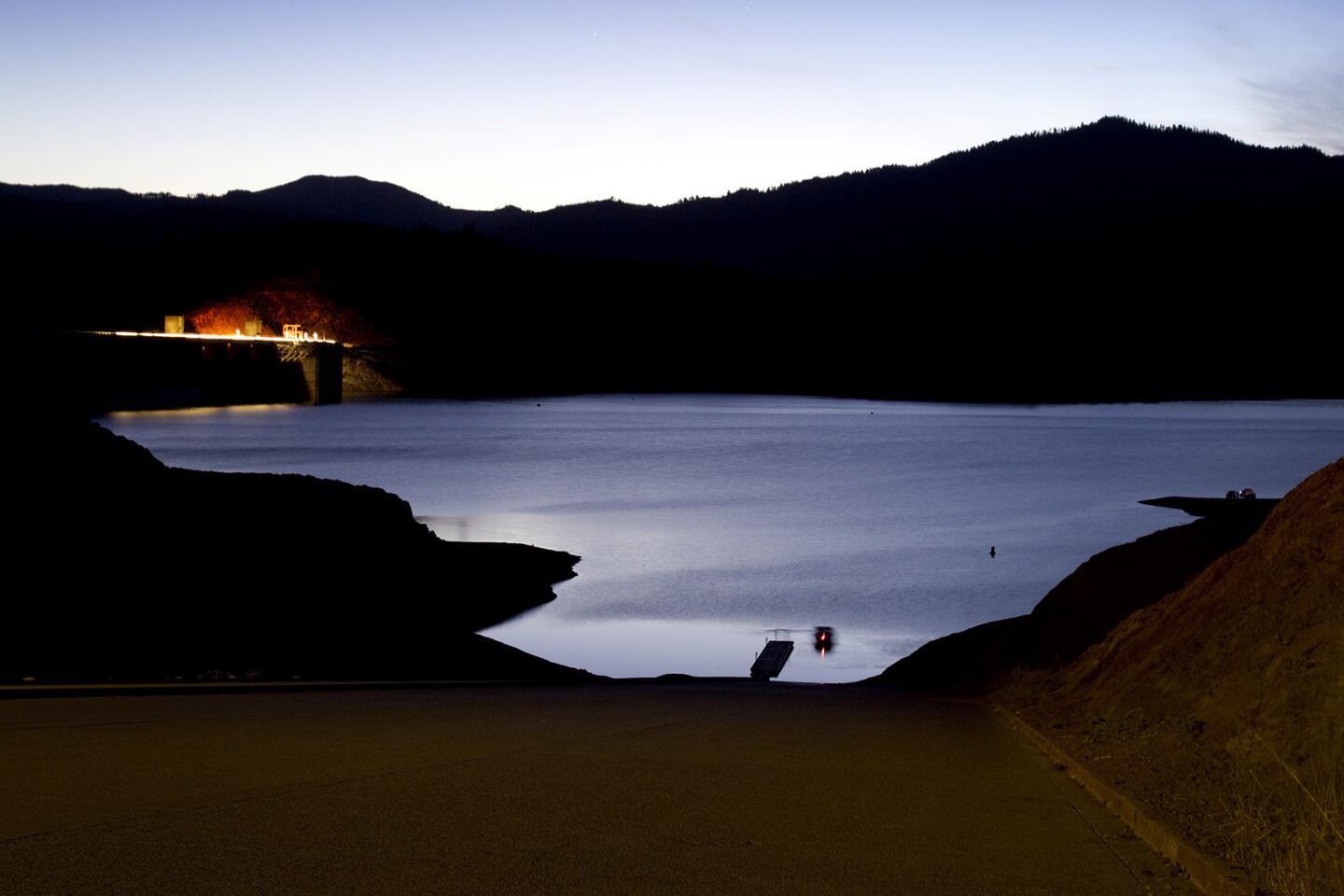
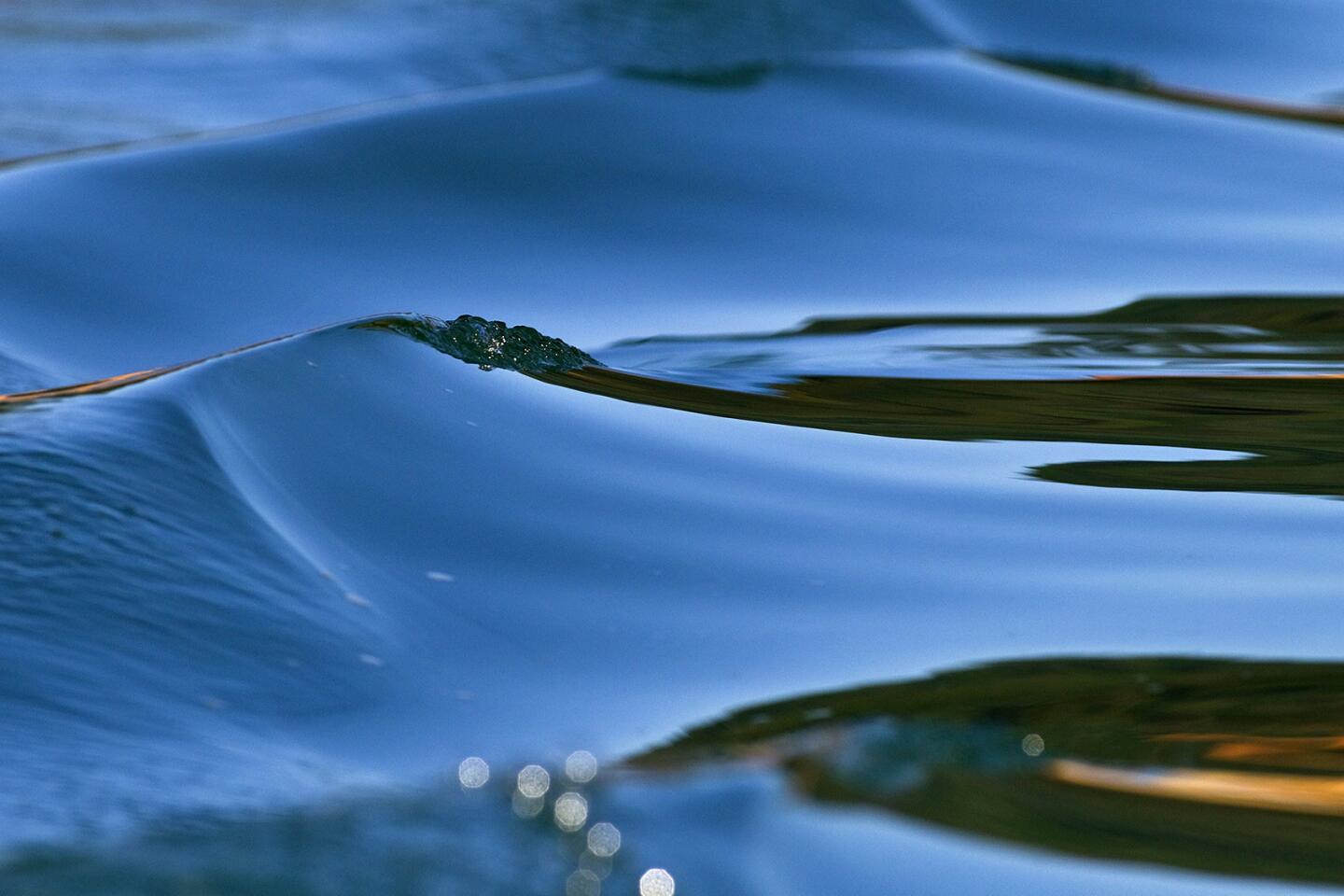
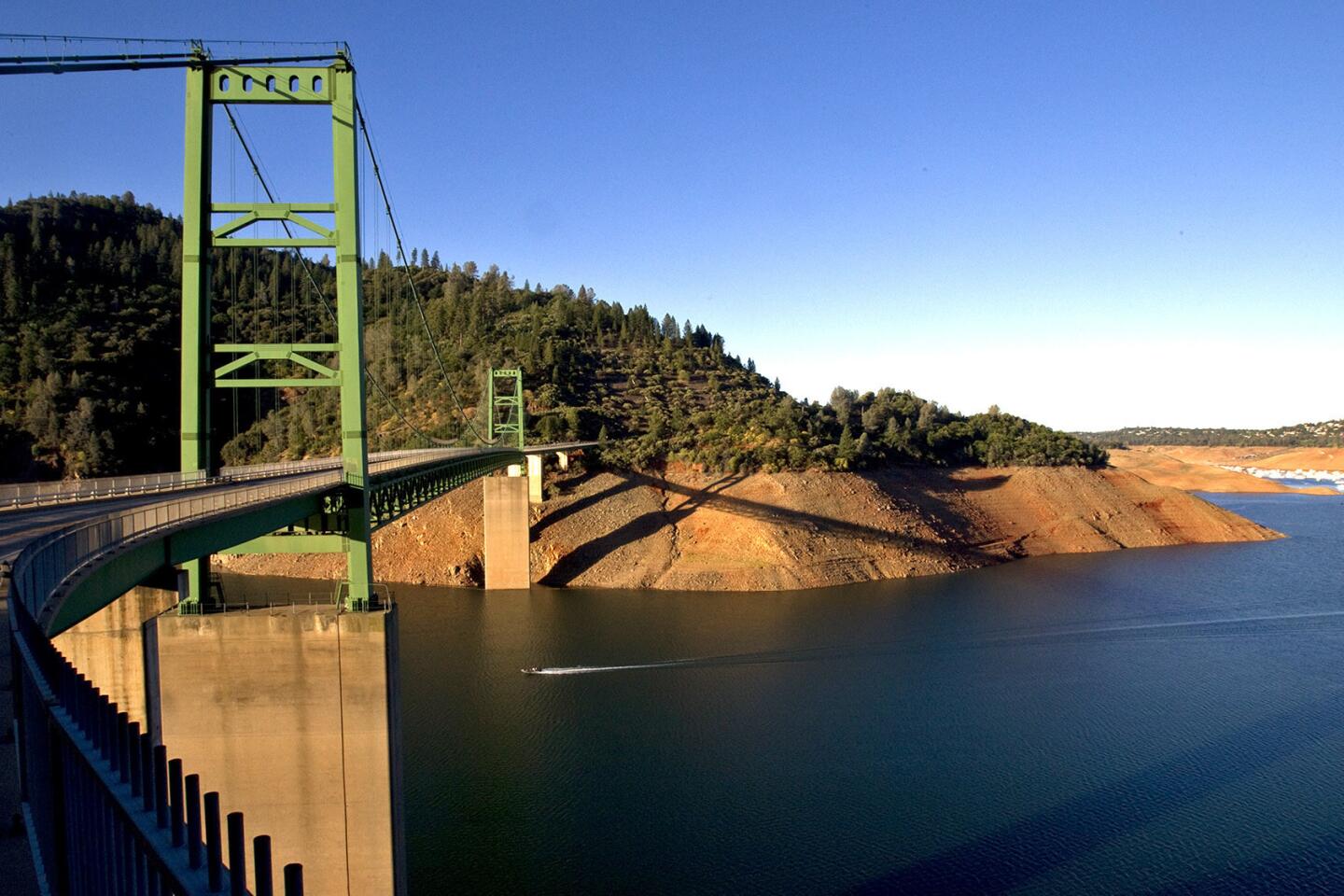
A boater speeds under the New Bidwell Bar Suspension Bridge as severe drought conditions show the water down 160 feet from the high water mark at Lake Oroville on June 21, 2014. Officials say Lake Oroville is at 43% capacity and is likely to get worse, but is not as bad as the drought of 1976-77.
(Allen J. Schaben / Los Angeles Times)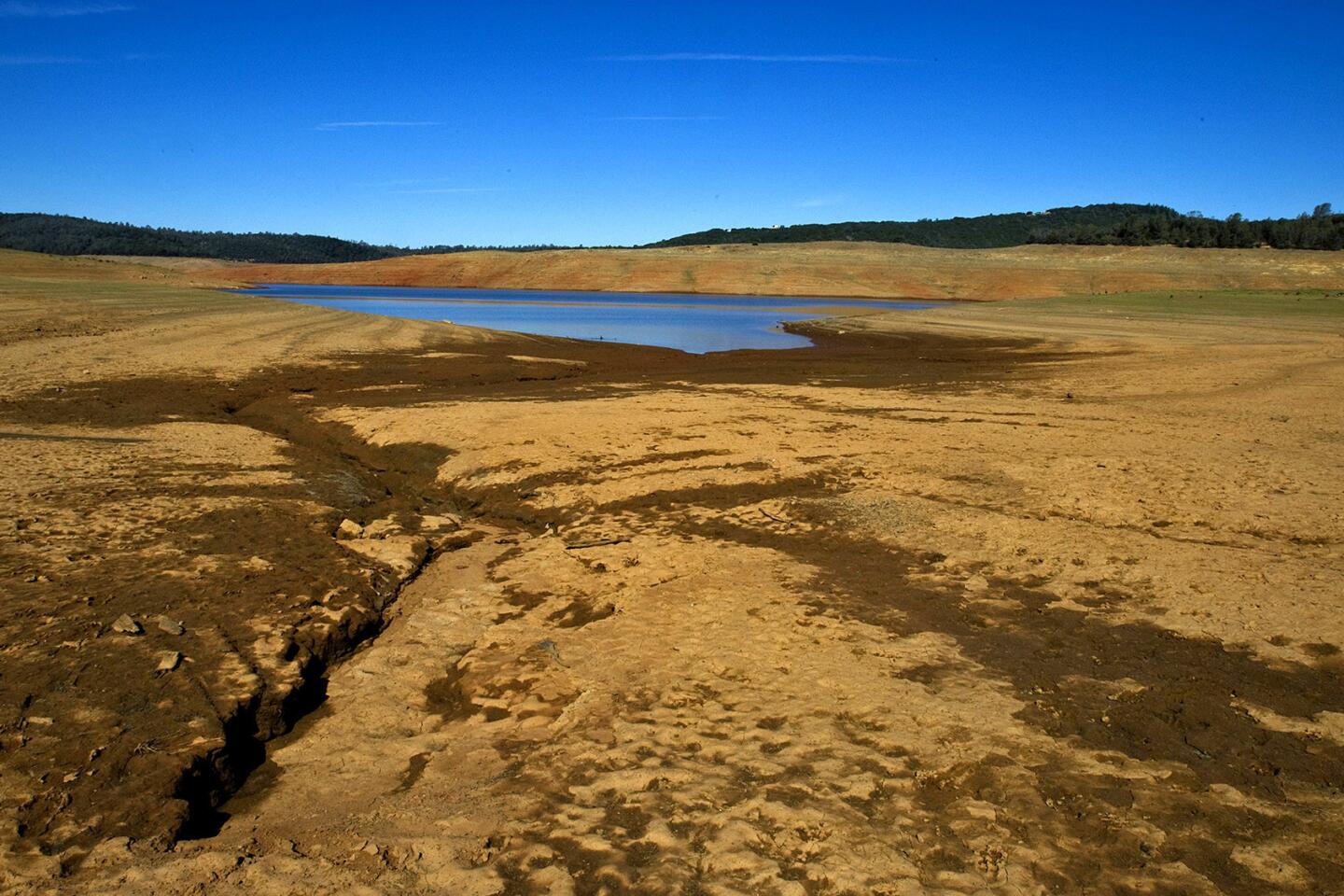
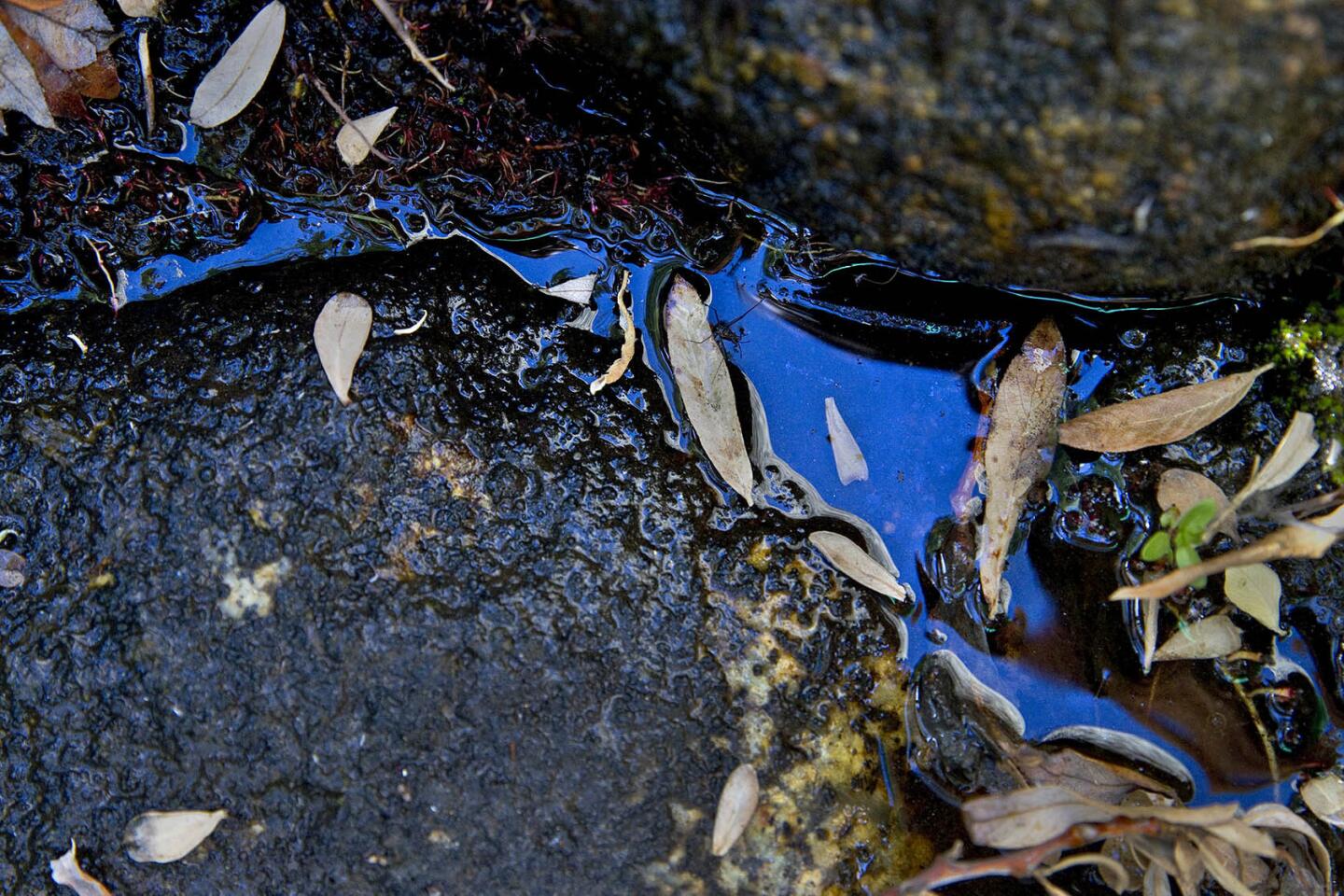
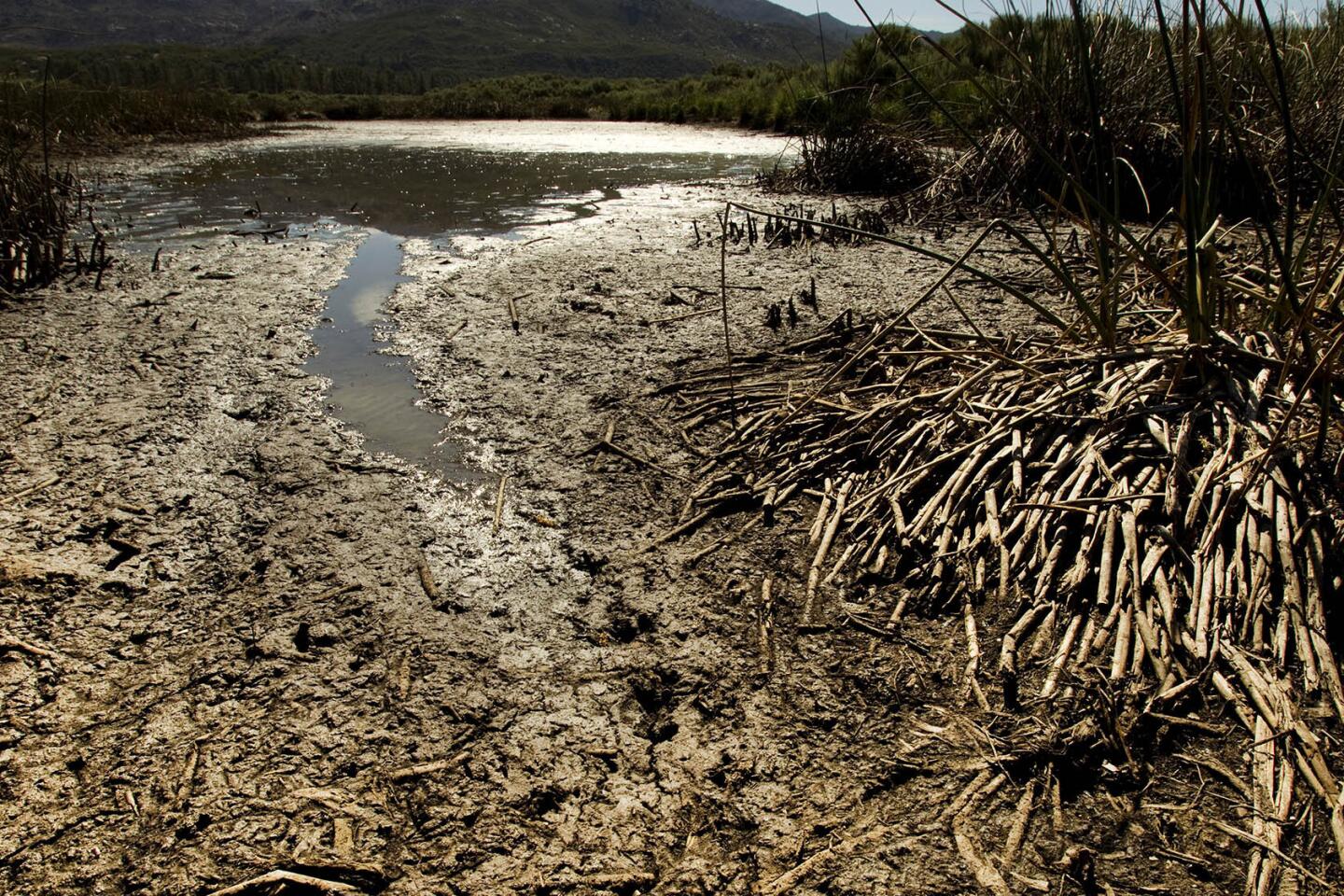
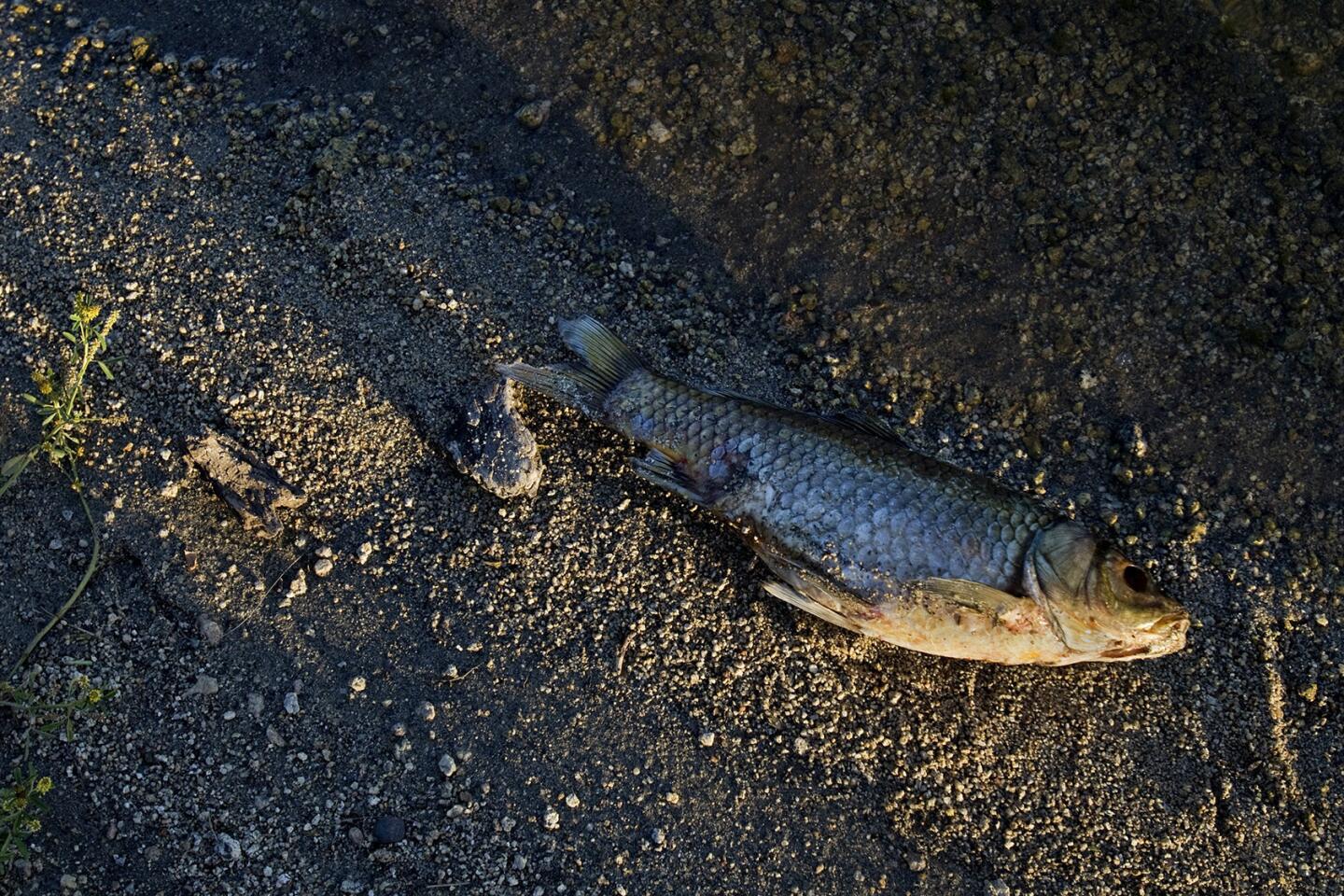
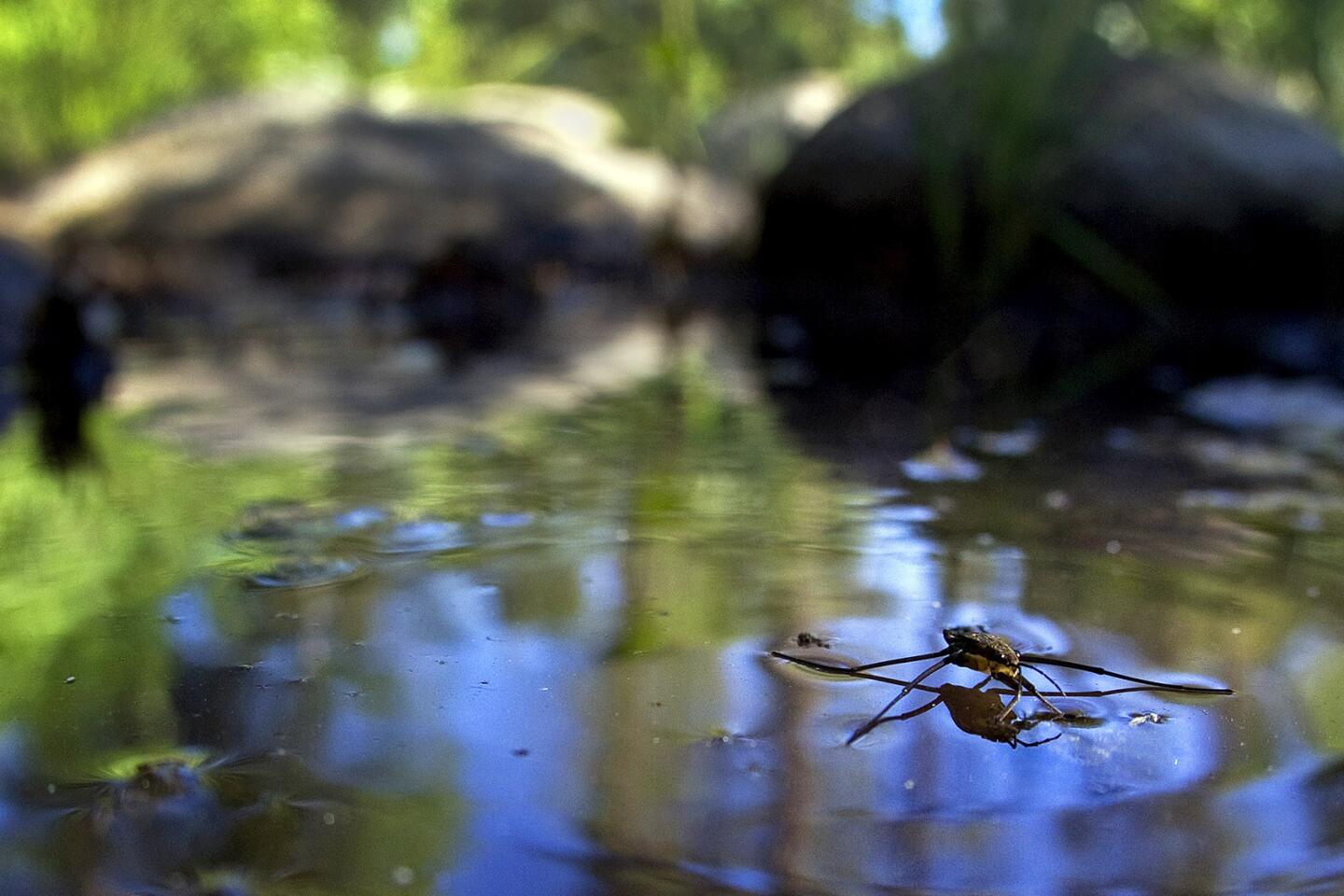
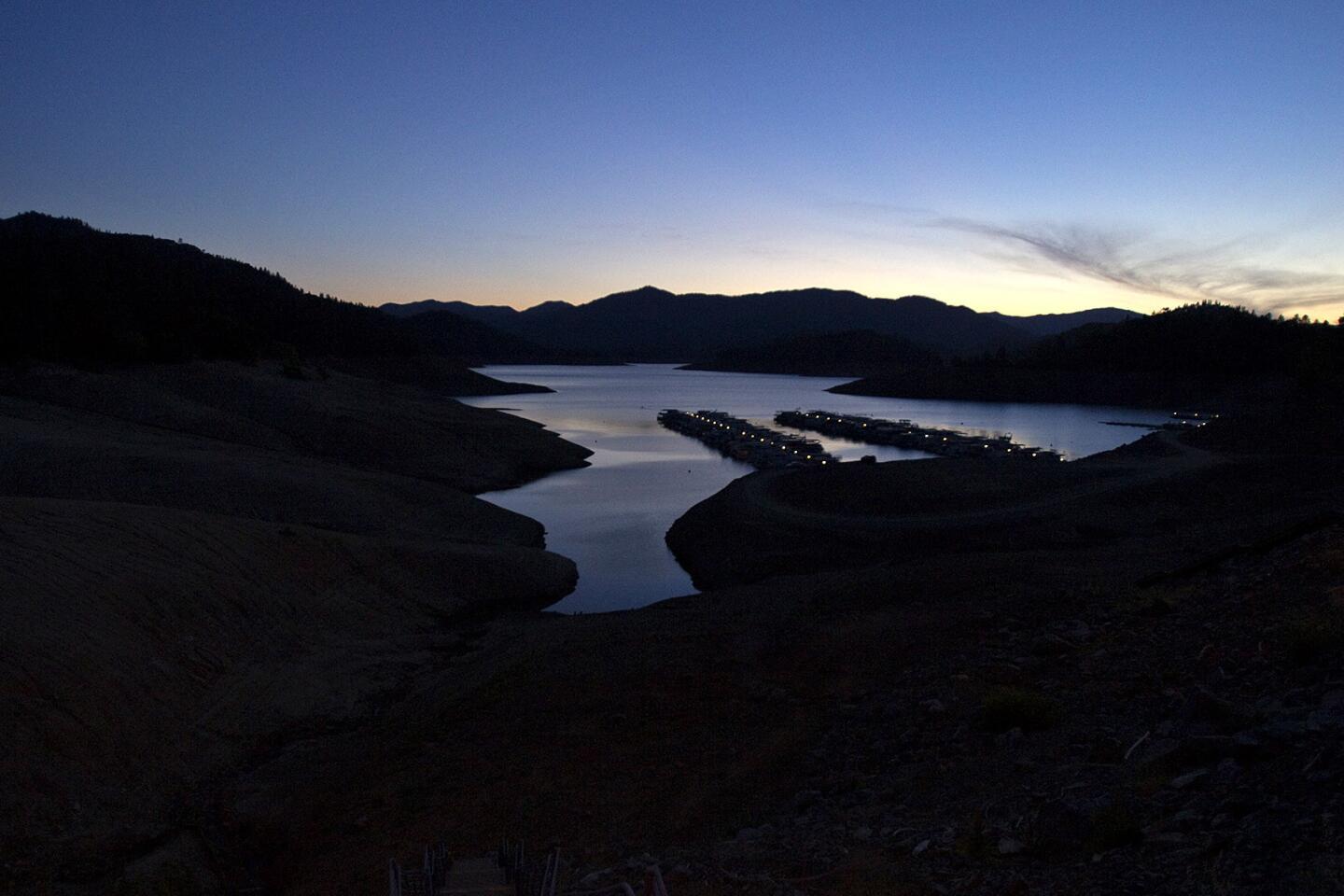
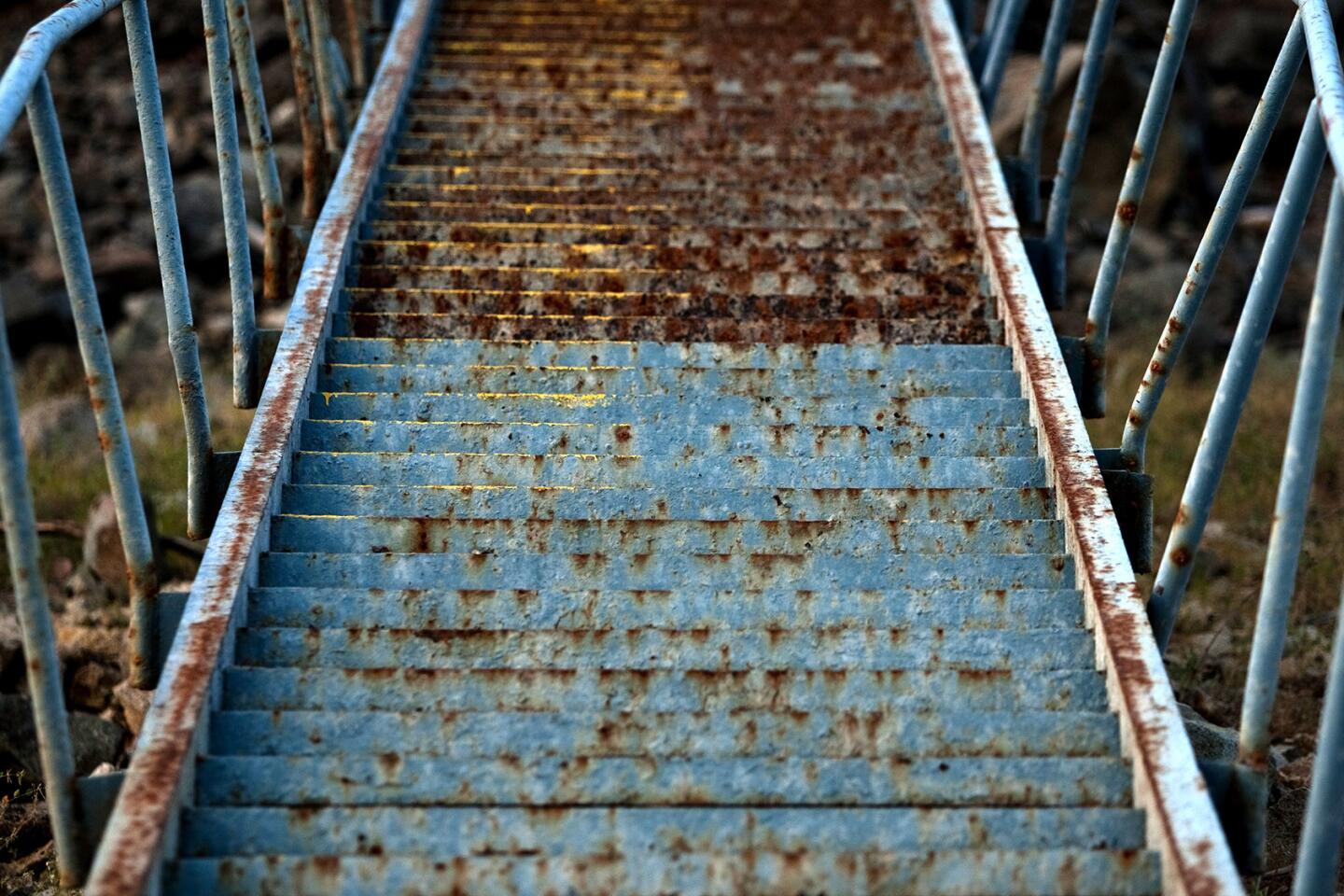
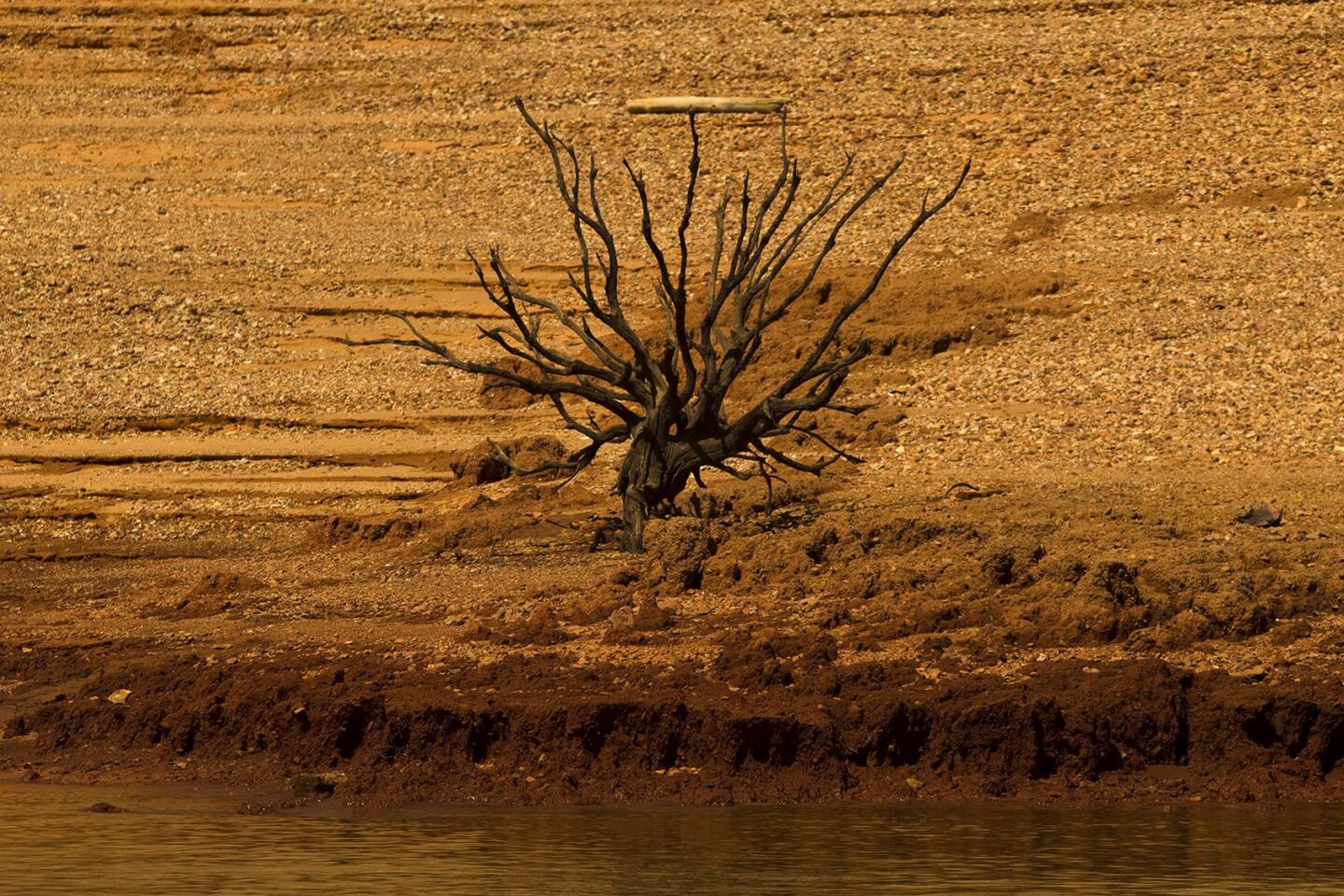
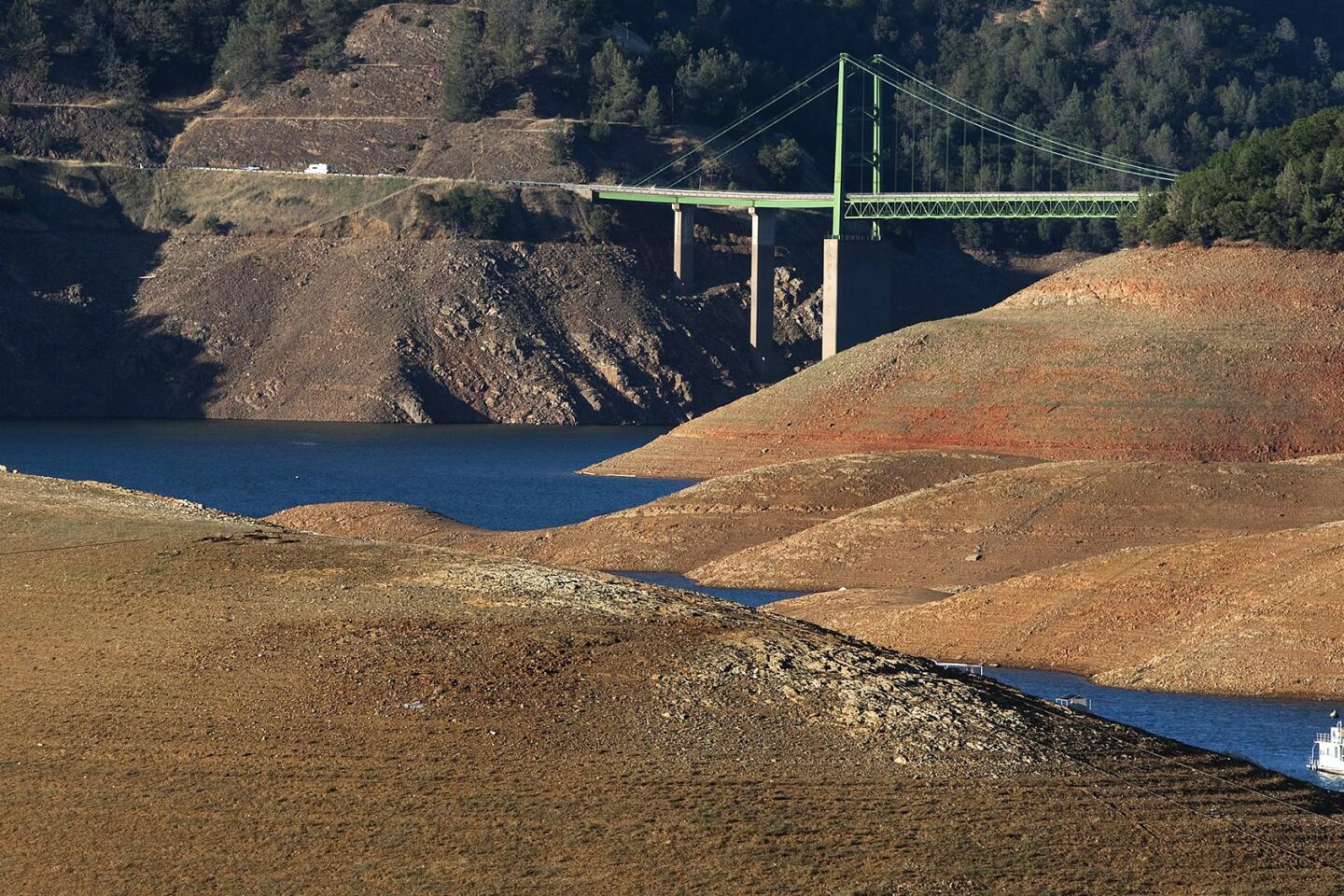
Severe drought conditions are evident as a lone houseboat is dwarfed by steep banks that show the water level down 160 feet from the high water mark at Lake Oroville on June 21, 2014. Receding water levels are revealing prehistoric and historic artifacts such as bedrock mortars and projectile points made by the Maidu people and remnants of placer and dredge mining that thrived here after John Bidwell discovered gold in 1848.
(Allen J. Schaben / Los Angeles Times)Northern and Central California typically receive 30% to 40% of their precipitation over the next three months, but this year, forecasters say the upper two-thirds of the state can expect to miss out on much of that badly needed moisture.
The lack of significant rain will mean little relief for thousands of firefighters battling a series of destructive wildfires in Northern California, although a weather system is expected to bring some showers to the region later this week.
And even if an El Niño weather pattern does develop later this year, it is only expected to deliver below-median rainfall for Northern California, according to U.S. Seasonal Drought Outlook from the National Weather Service’s Climate Prediction Center.
Until then, Anthony Artusa, the meteorologist who created the outlook, described California’s drought forecast for the next three months as persistent and intense.
Prolonged drought has been a major factor behind the stubborn growth of wildfires that have pockmarked Northern and Central California. One of the largest, the King fire, has been burning in Eldorado National Forest in an area that was lush and unscorched for two decades — a possible reason why the fire has been moving so rapidly, officials say.
Some good news in the report: Drought conditions are expected to improve somewhat for the southern third of California.
The gloomy outlook comes as the drought’s effects continue to become more stark across California, from severely depleted reservoirs to private wells running dry.
Conservation efforts statewide have taken on new vigor, with residents letting their lawns go brown to popular tourist attractions, like The Getty, draining their pools and other water features.
In July, California reduced its water use by 7.5%, down more than 17 billion gallons from the same period last year, according to the state Water Resources Control Board.
For breaking news in Los Angeles and throughout California, follow @VeronicaRochaLA. She can be reached at [email protected].
Sign up for Essential California
The most important California stories and recommendations in your inbox every morning.
You may occasionally receive promotional content from the Los Angeles Times.
Veronica Rocha worked on the Metro desk and at L.A. Now covering breaking news in California. She joined the Los Angeles Times in 2014 and left in 2017.

